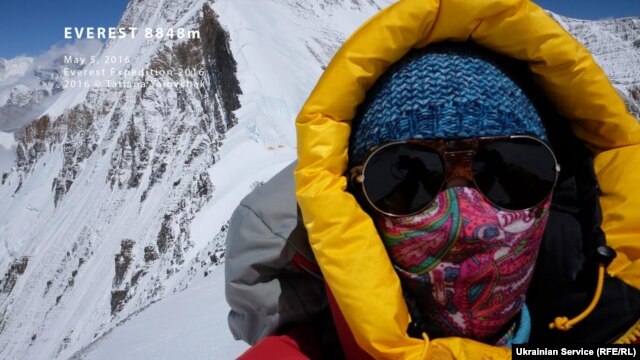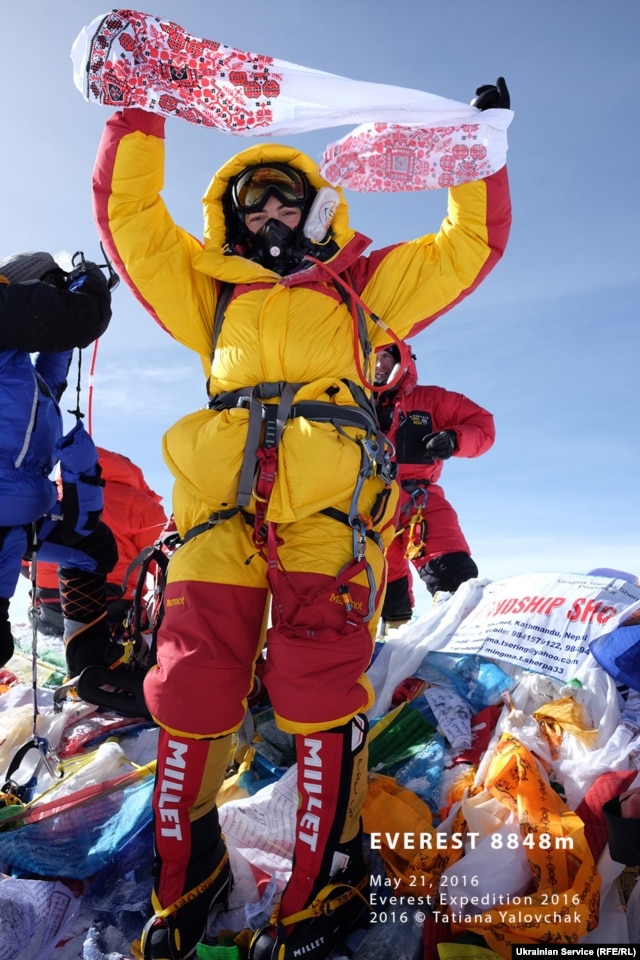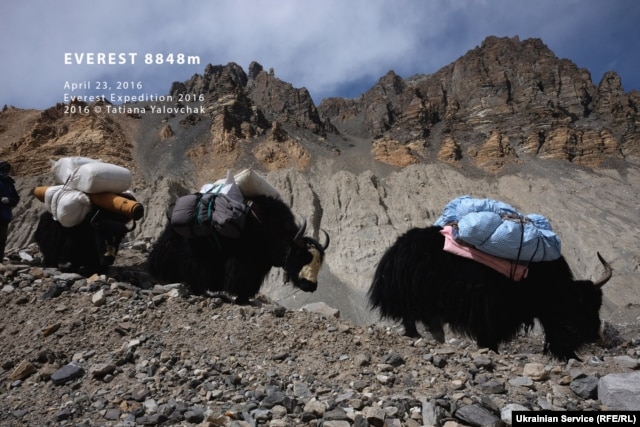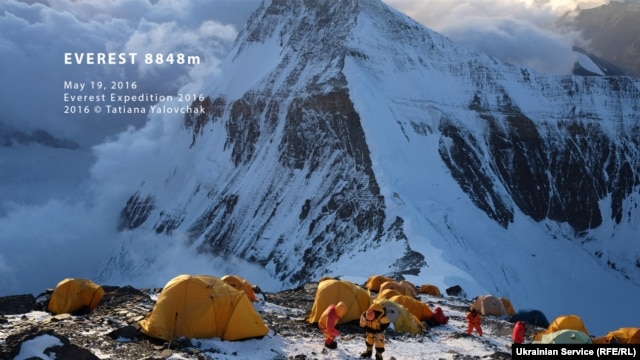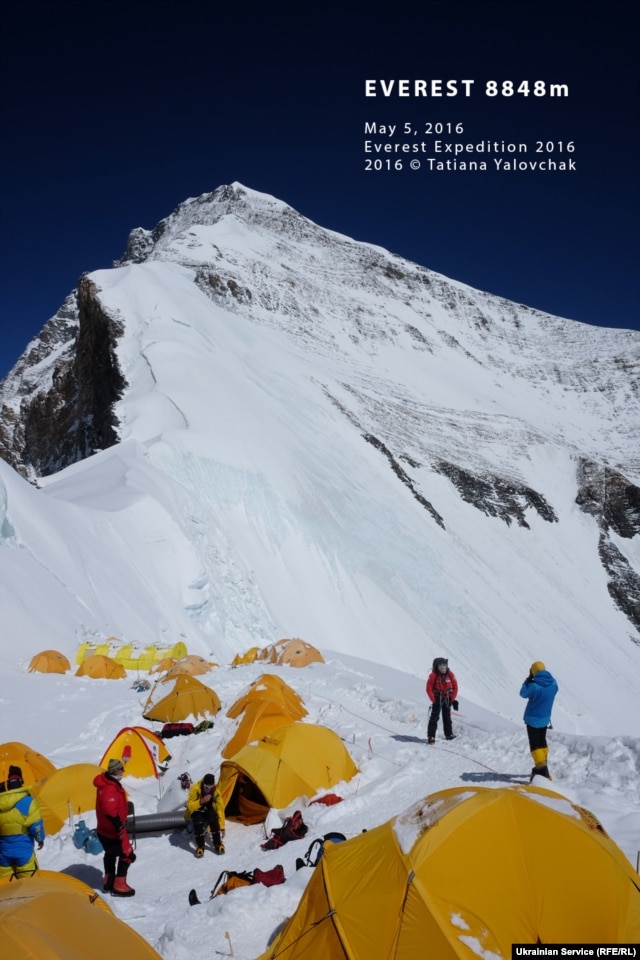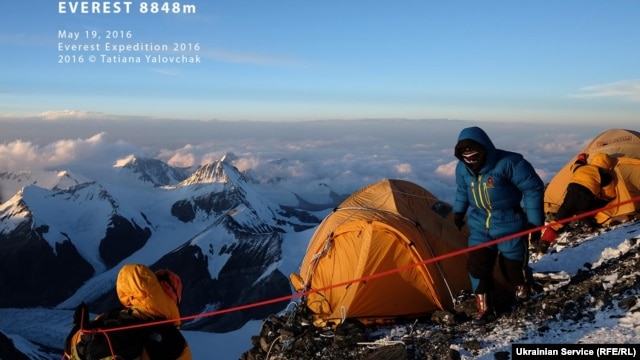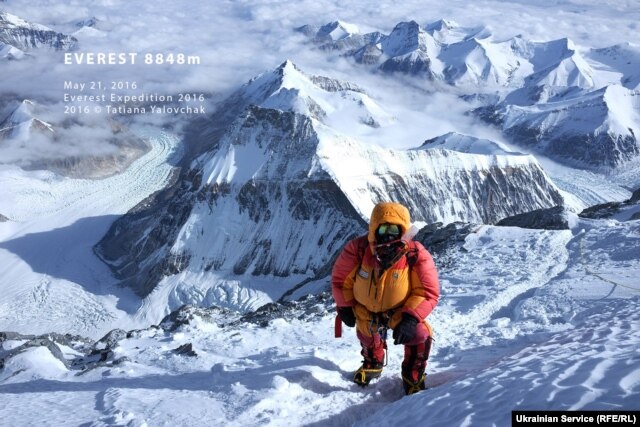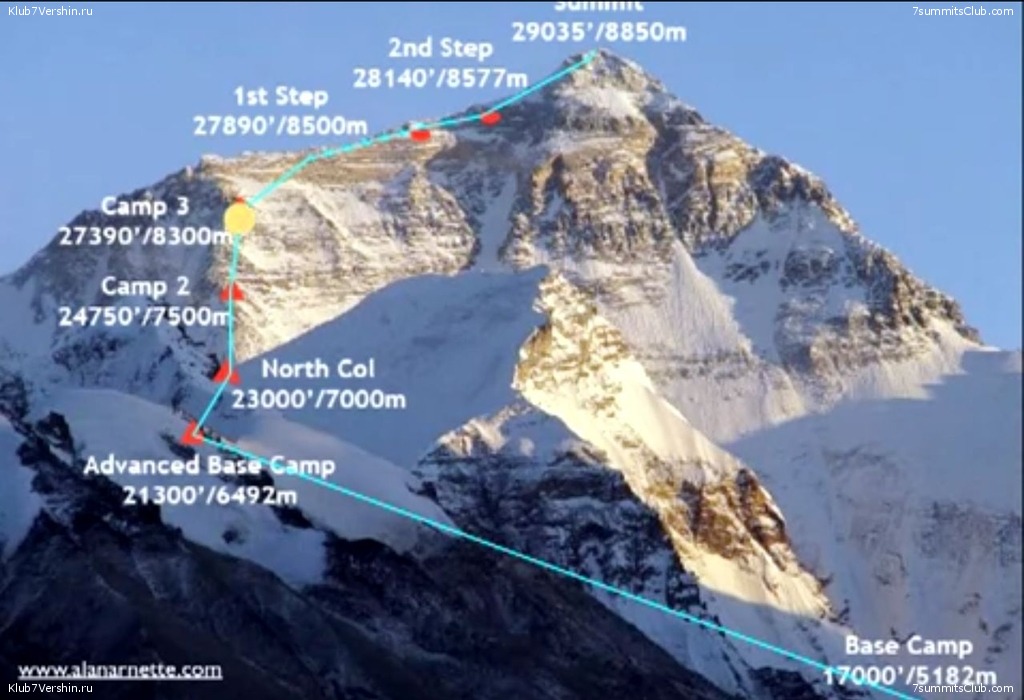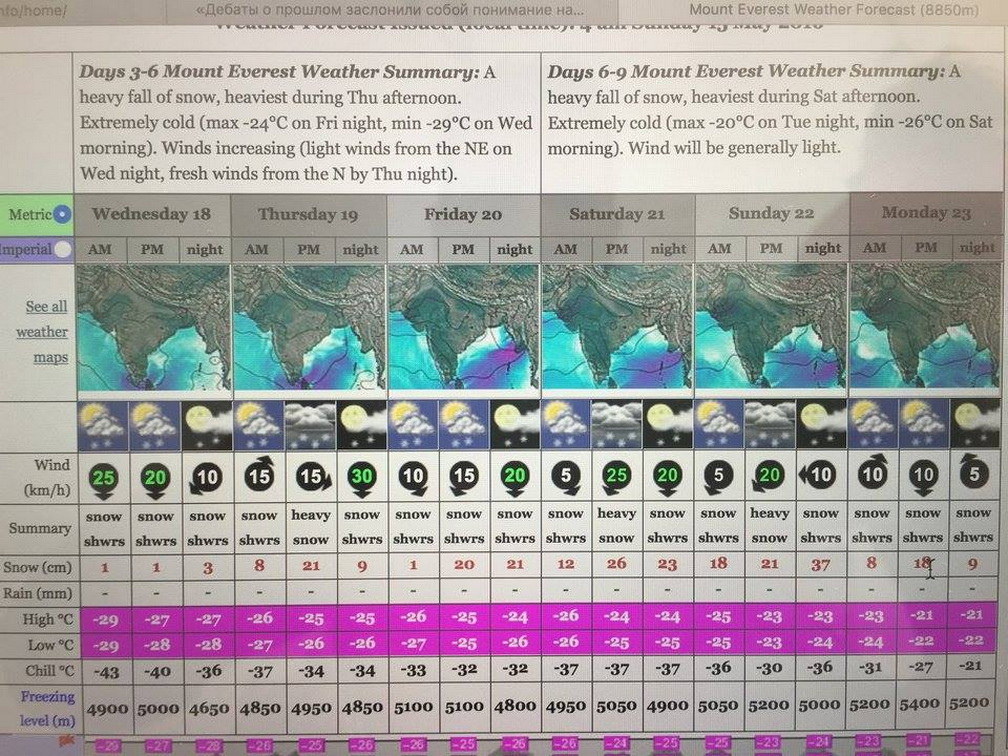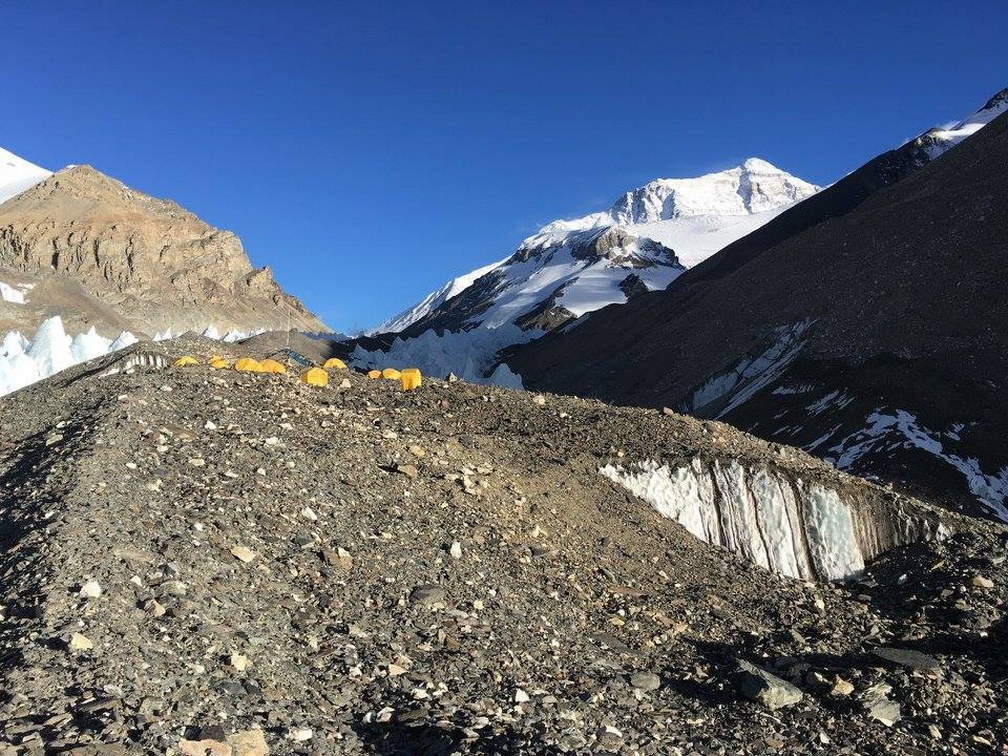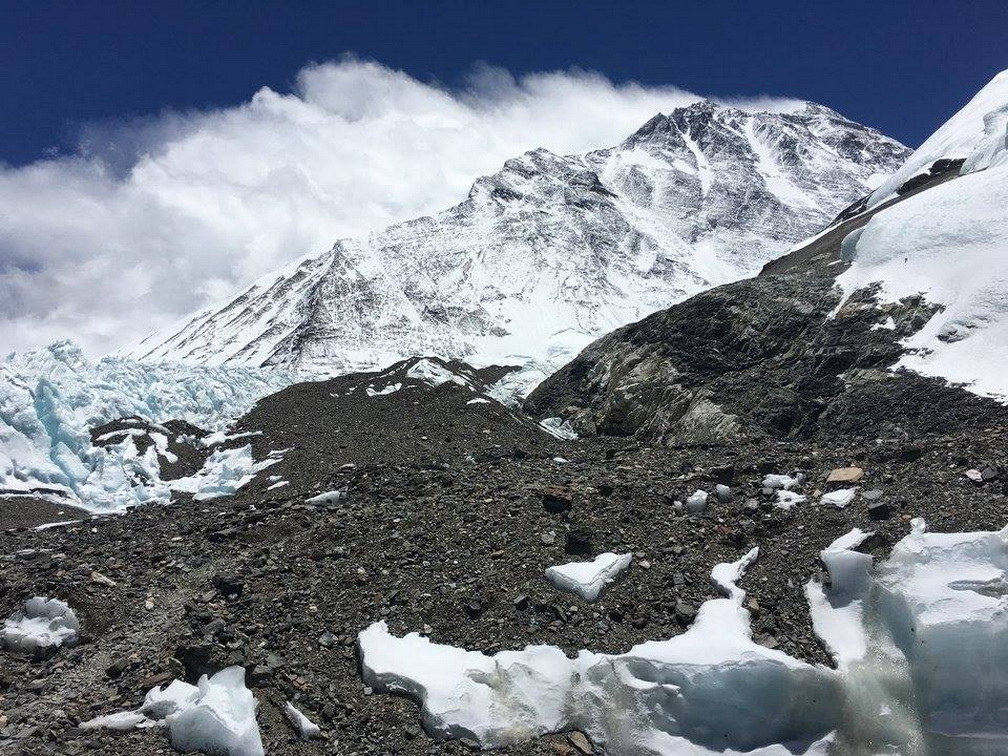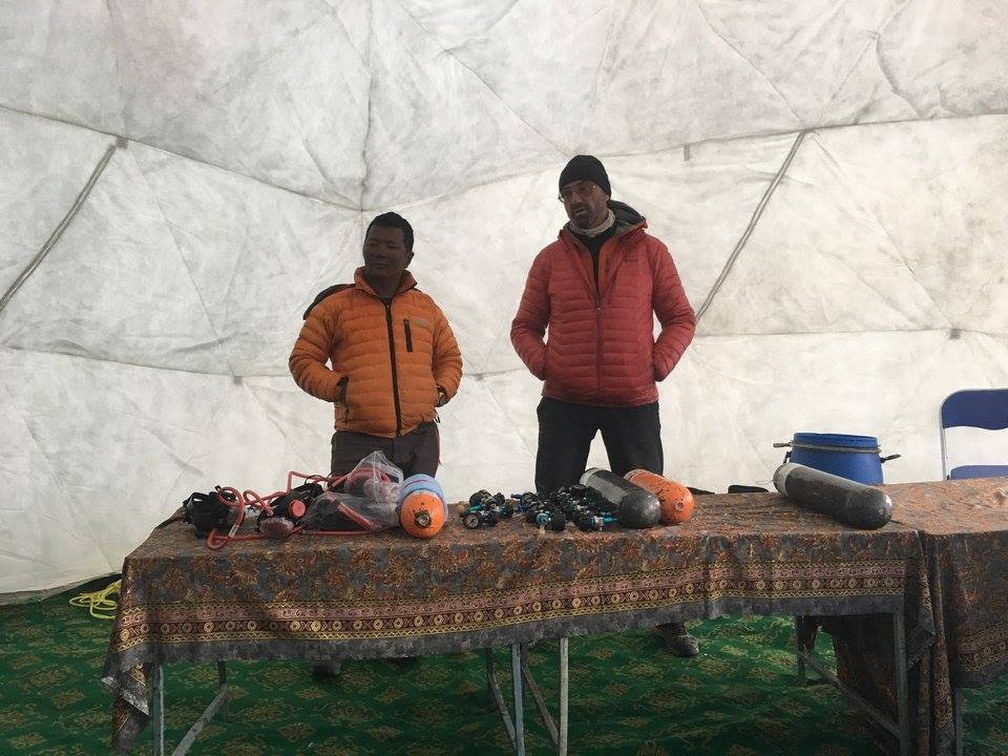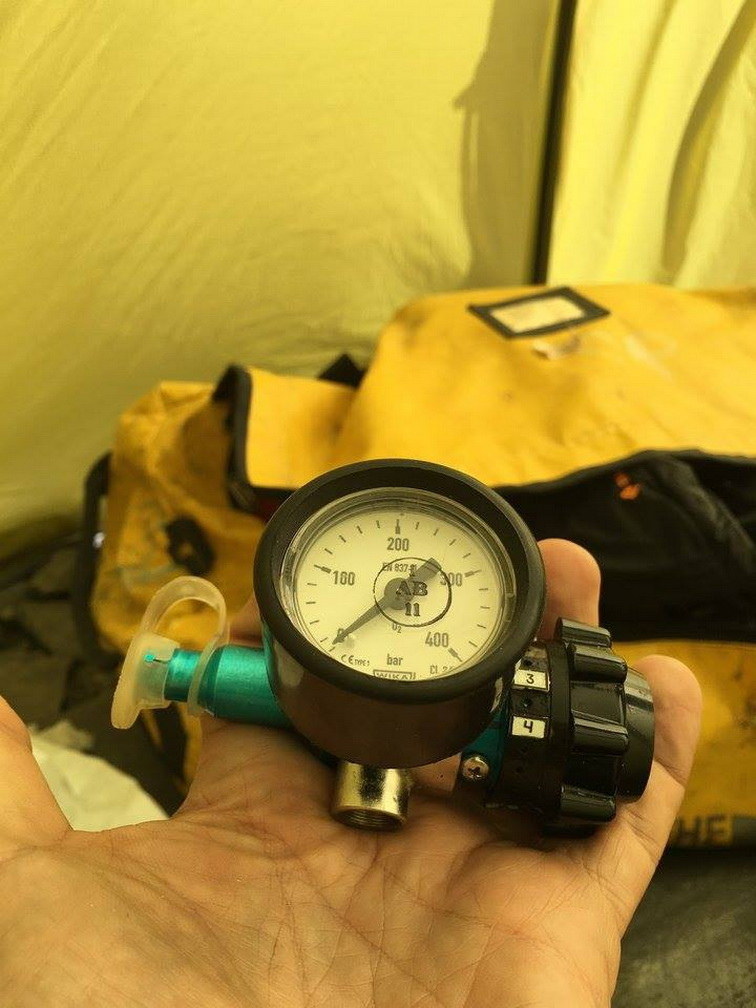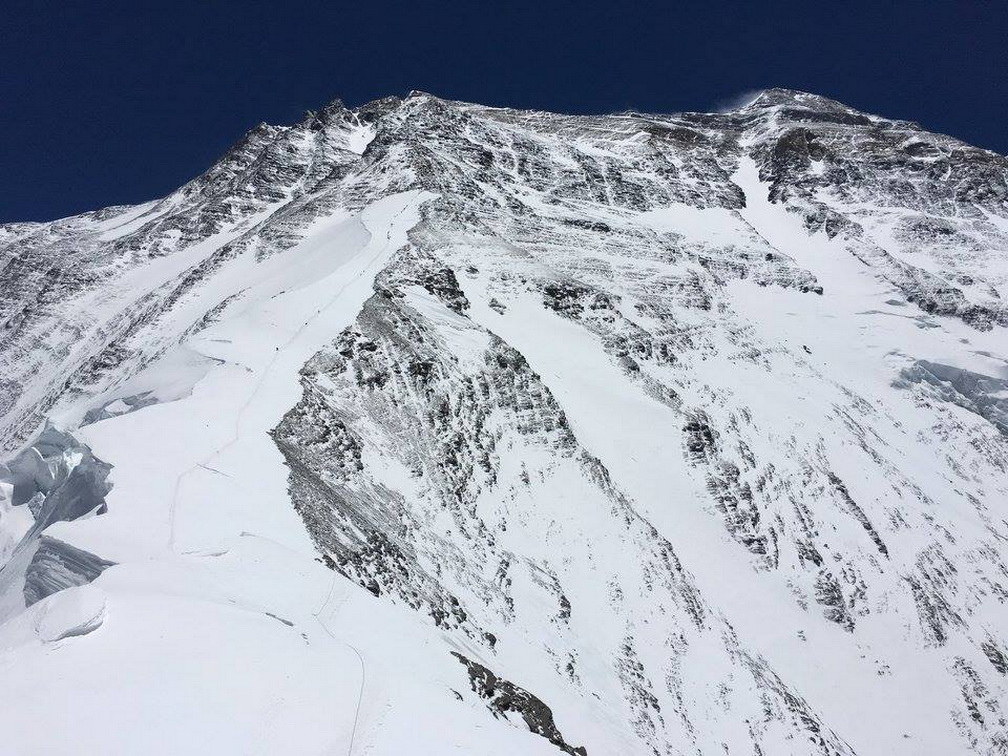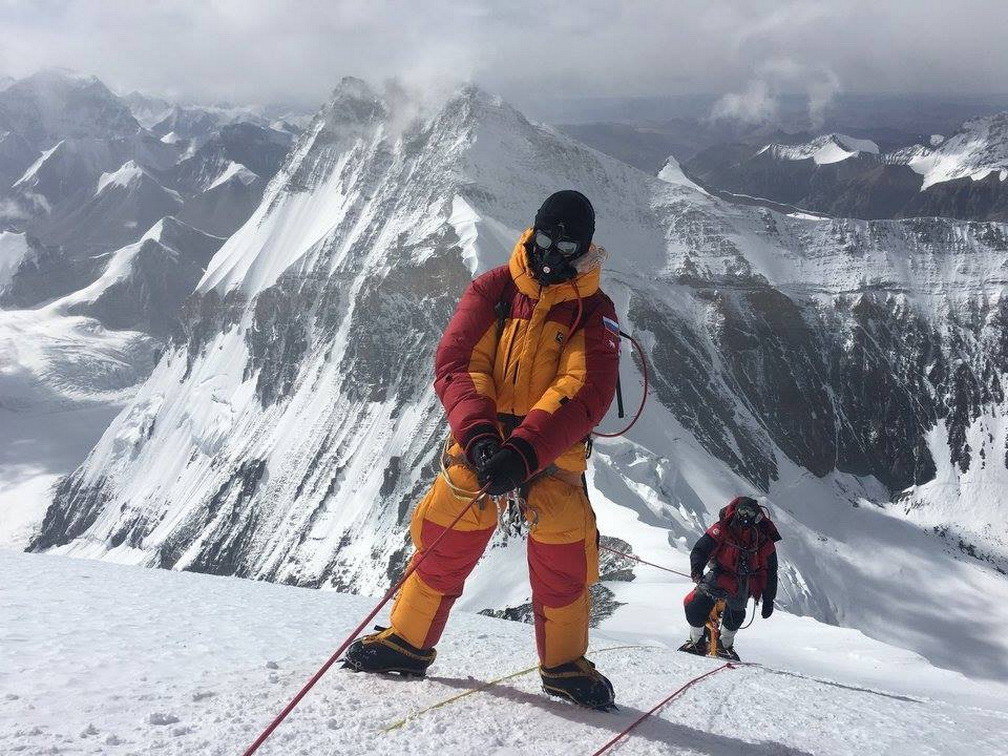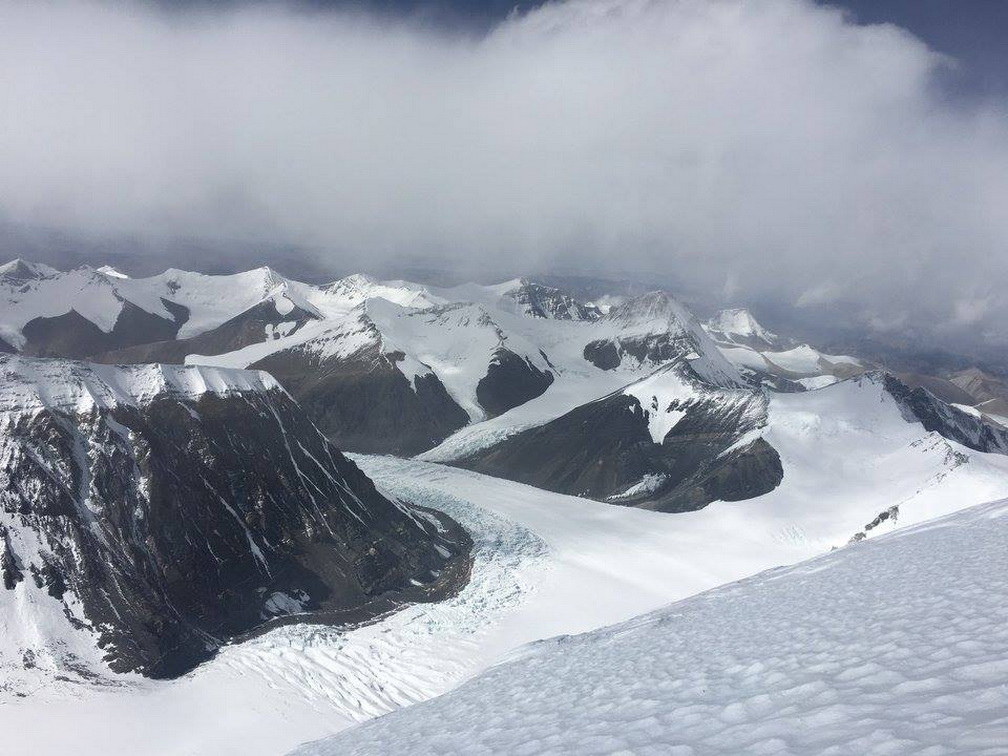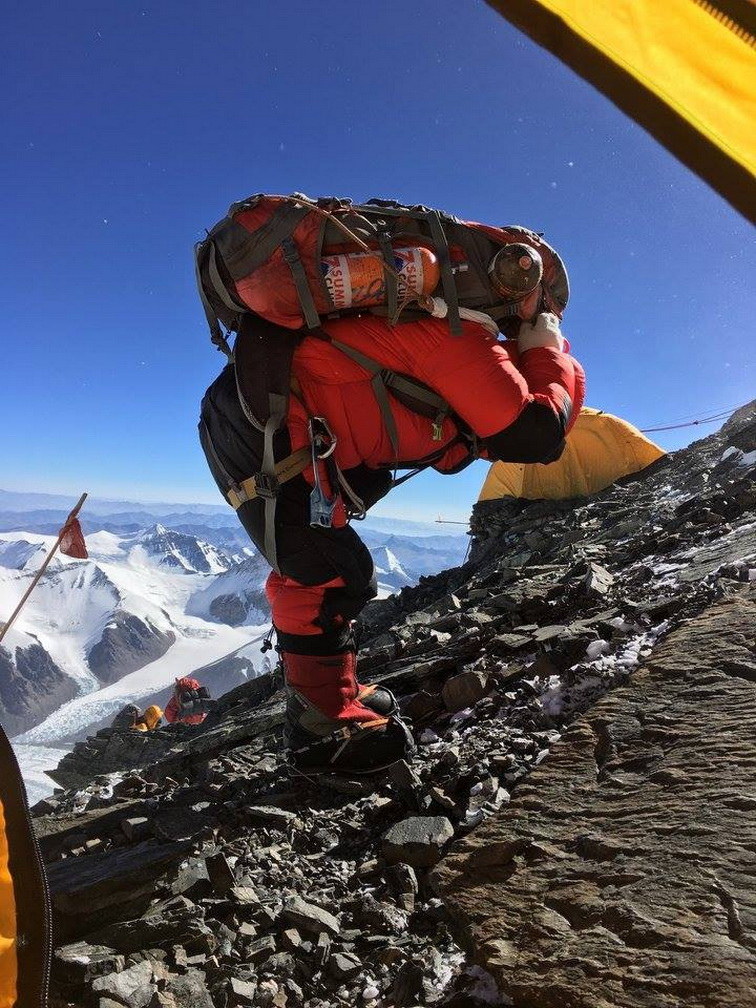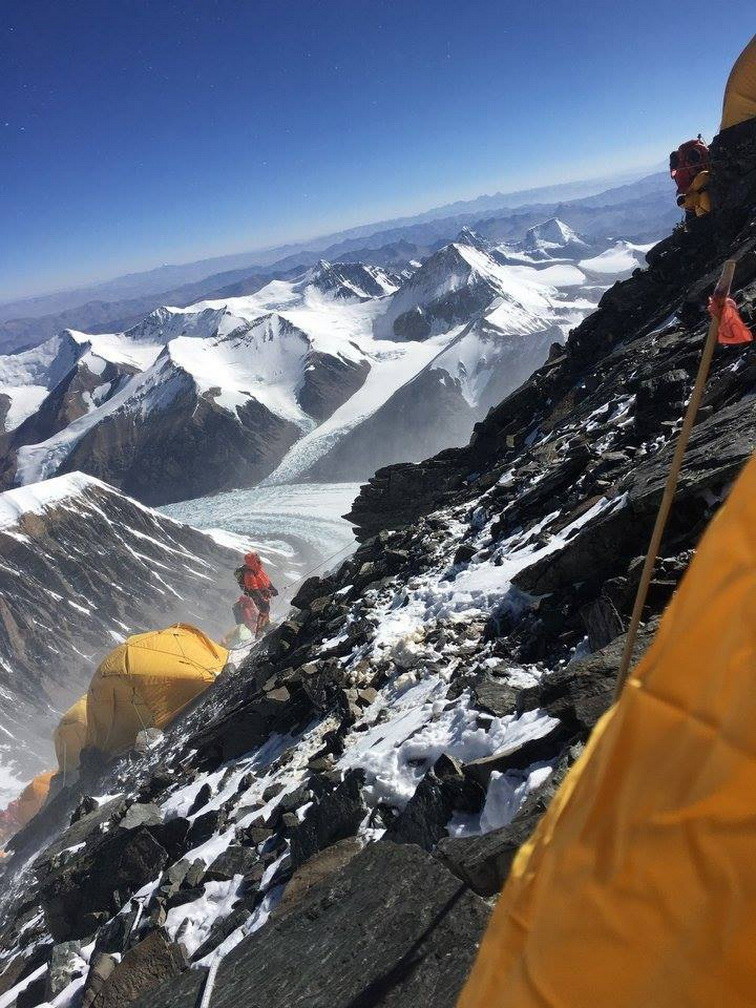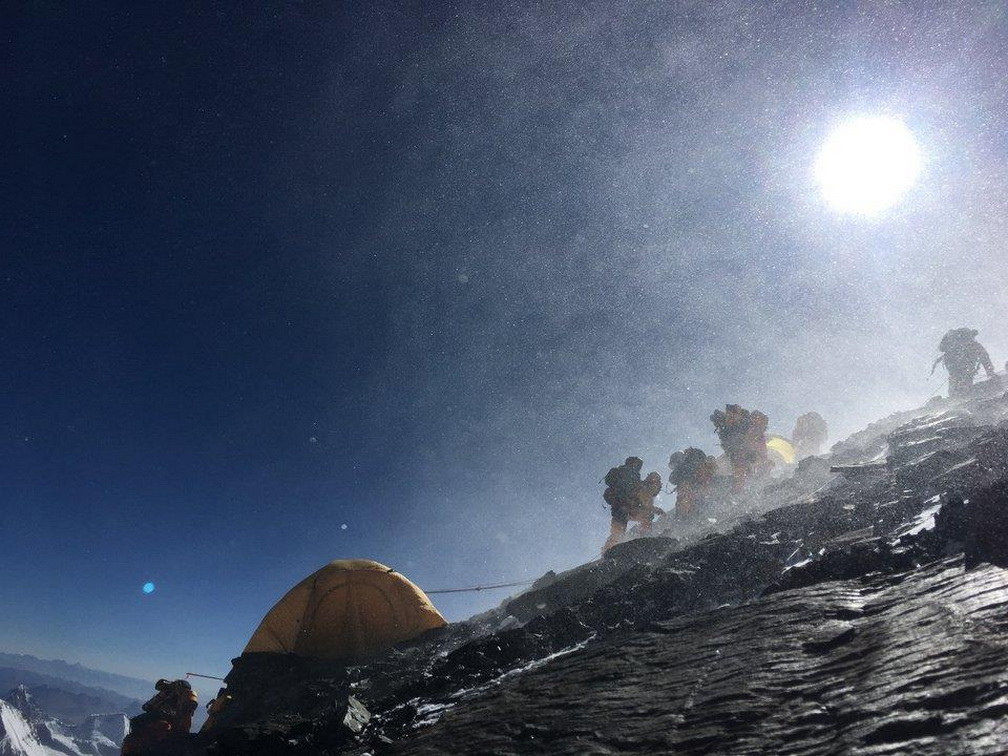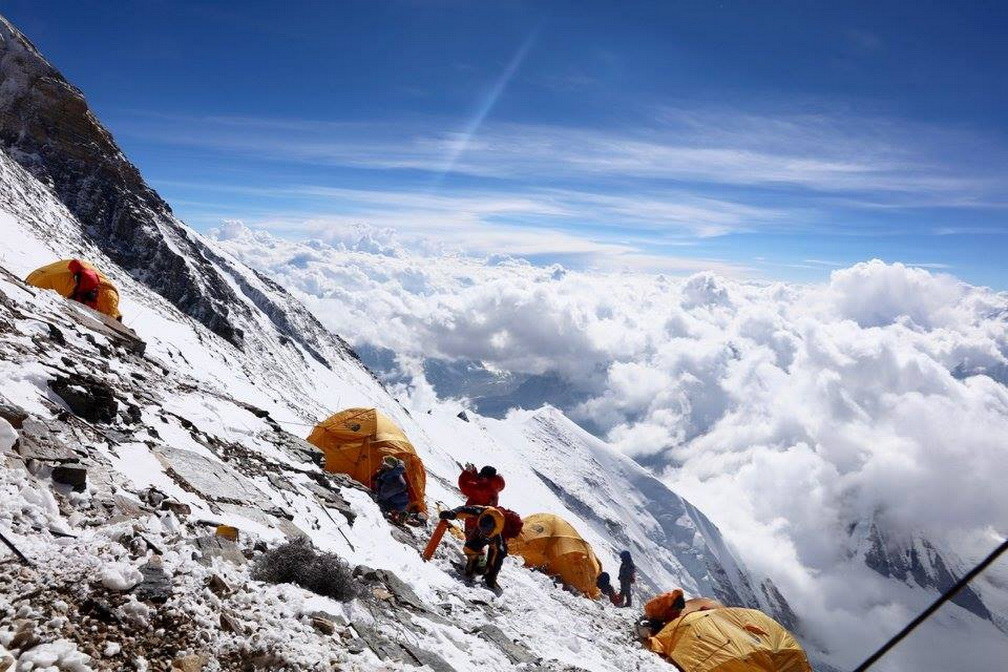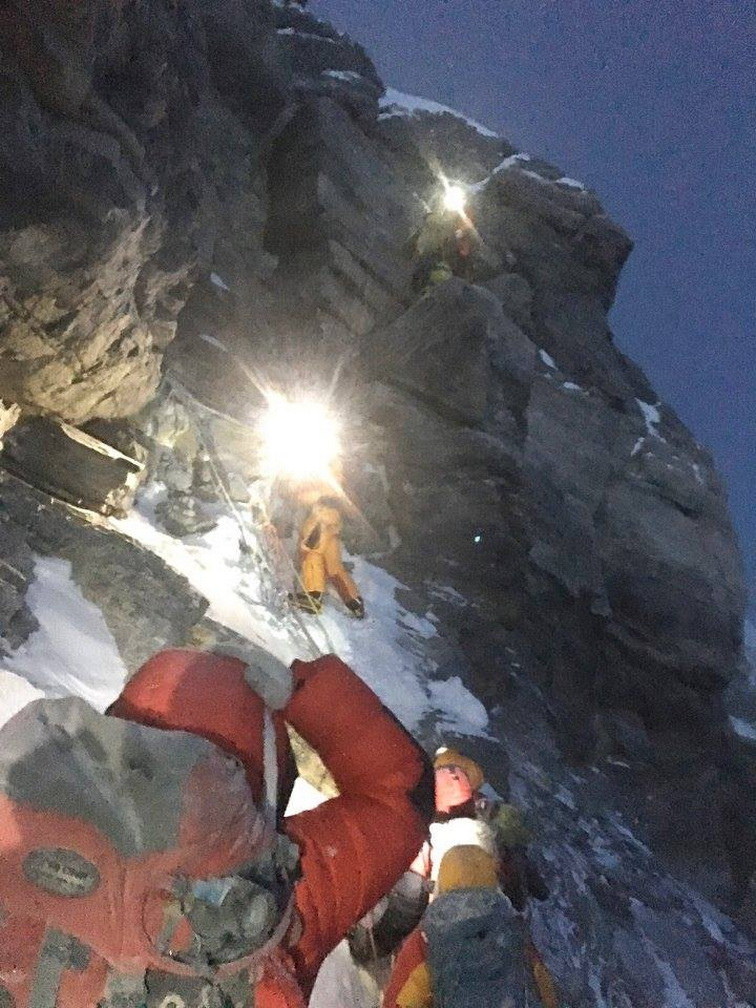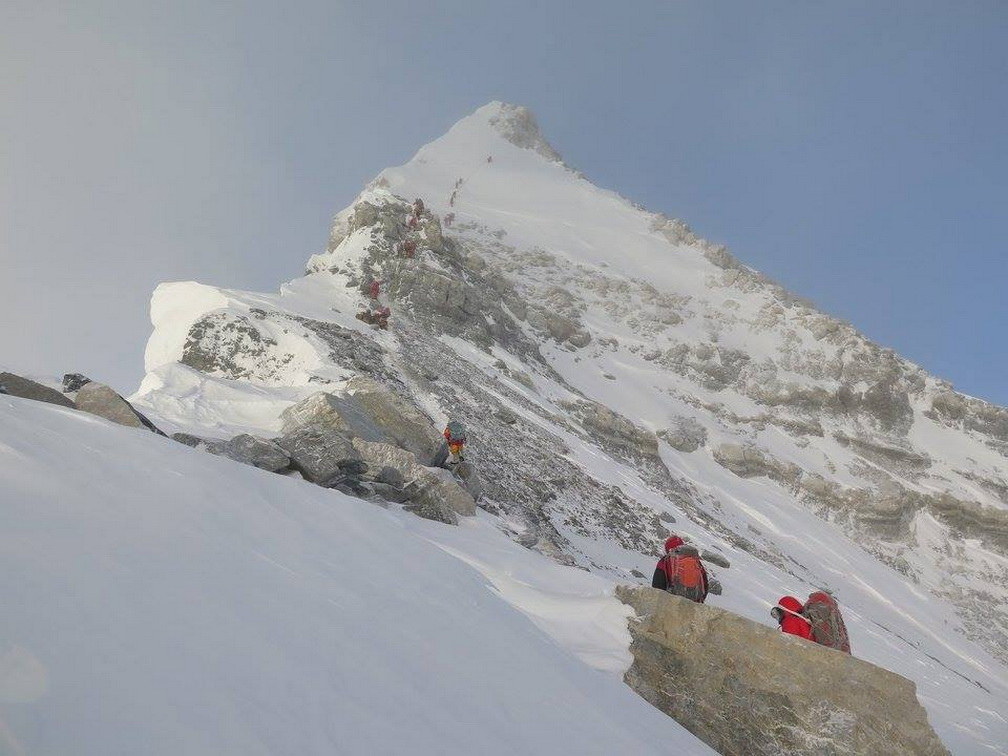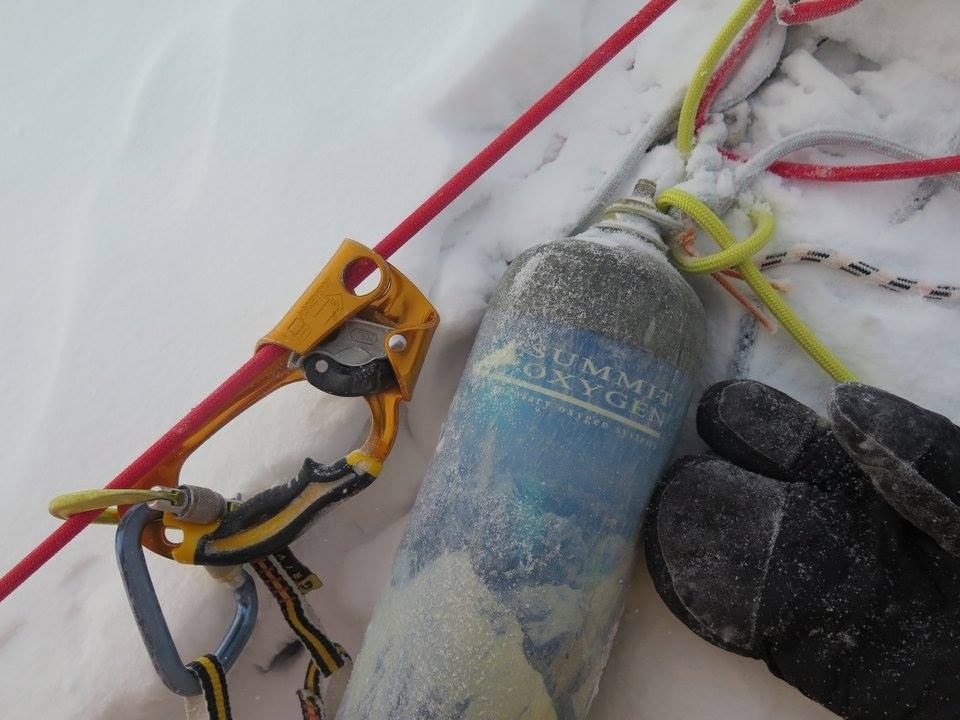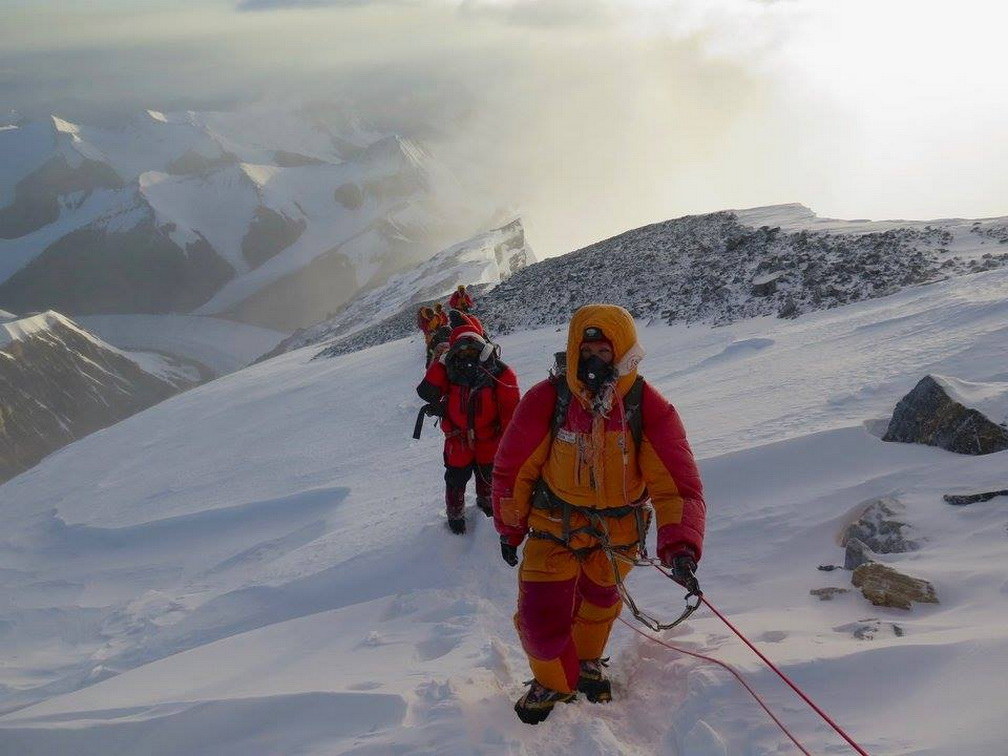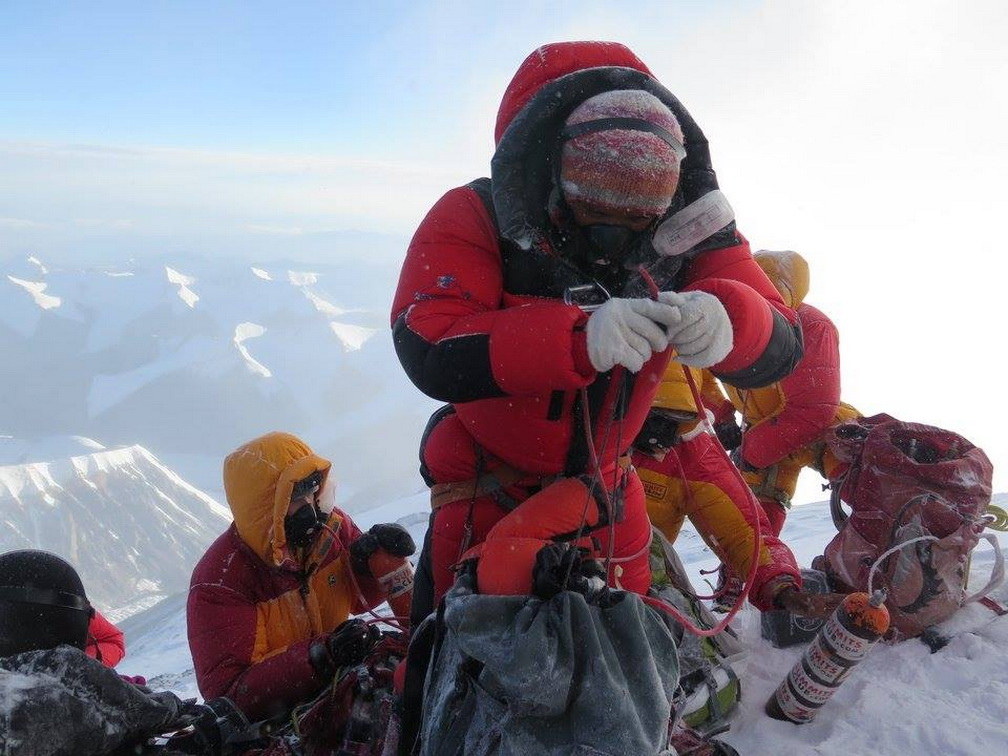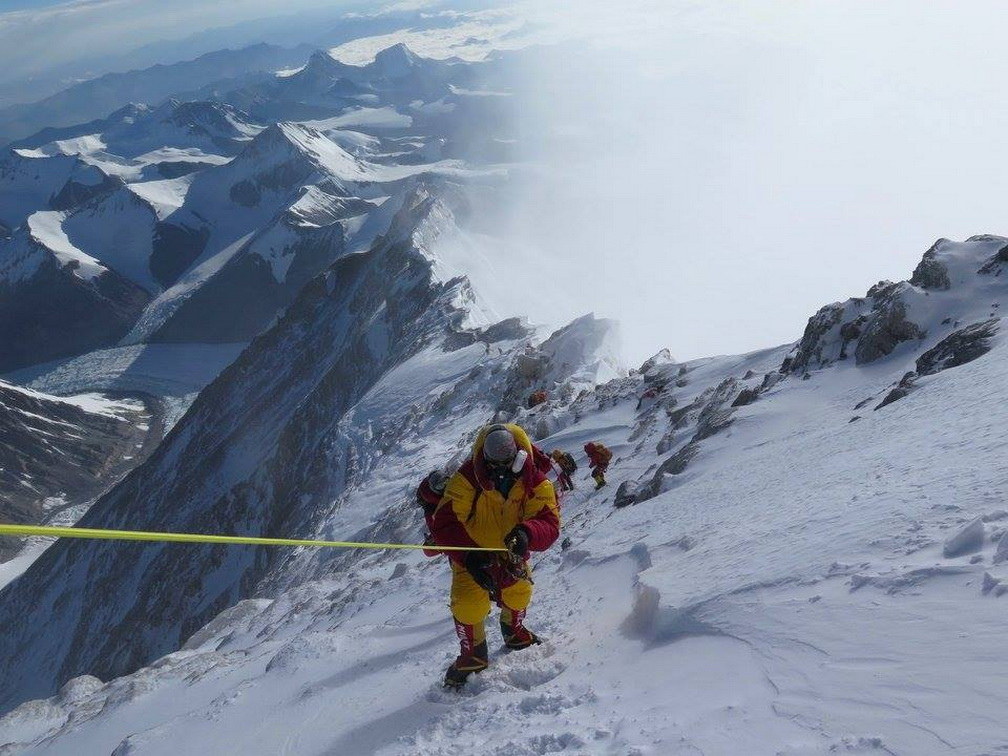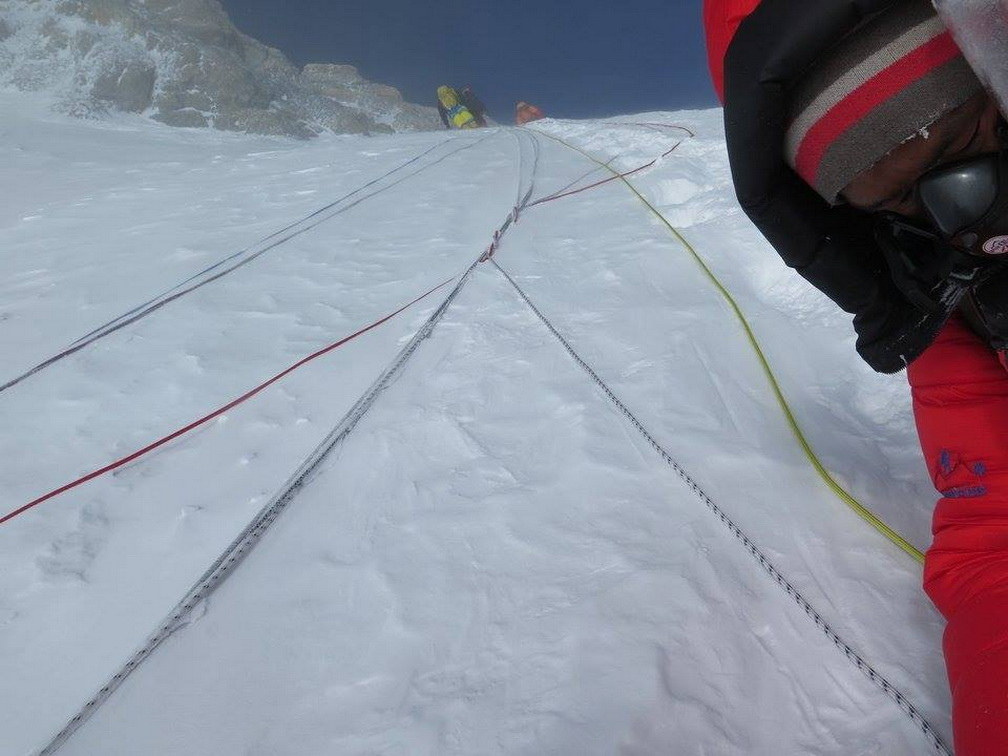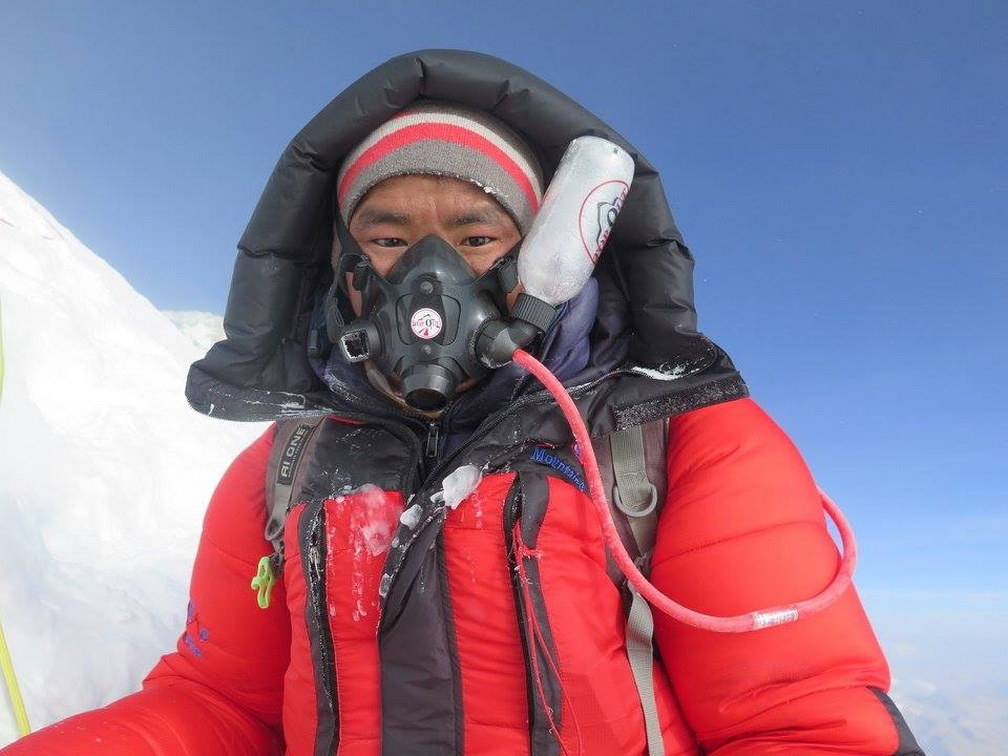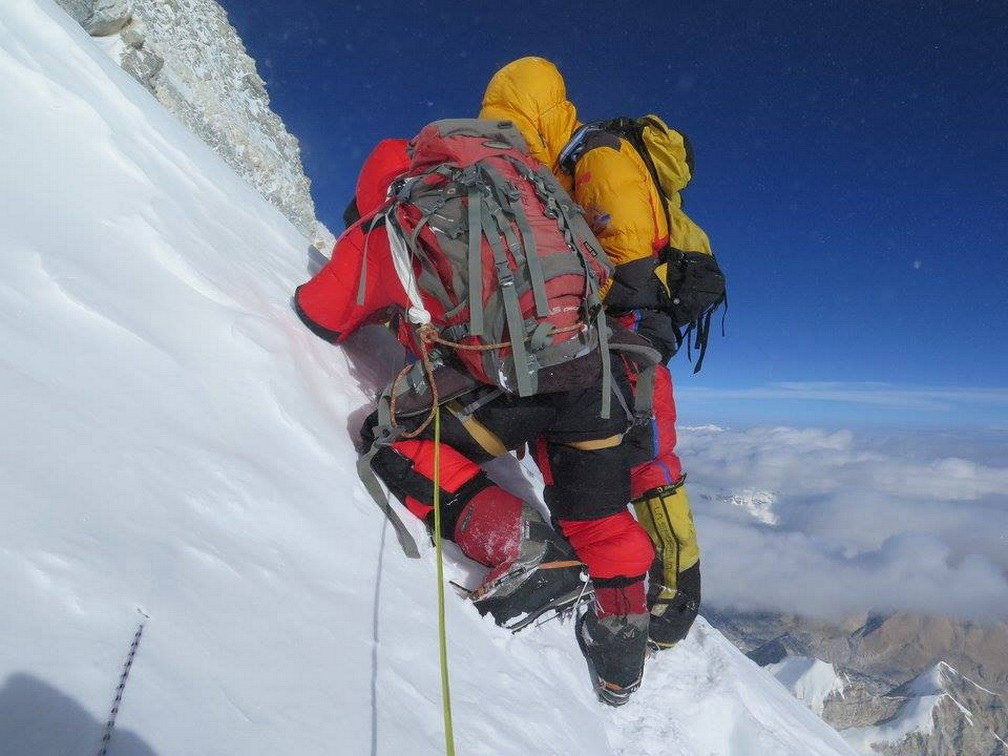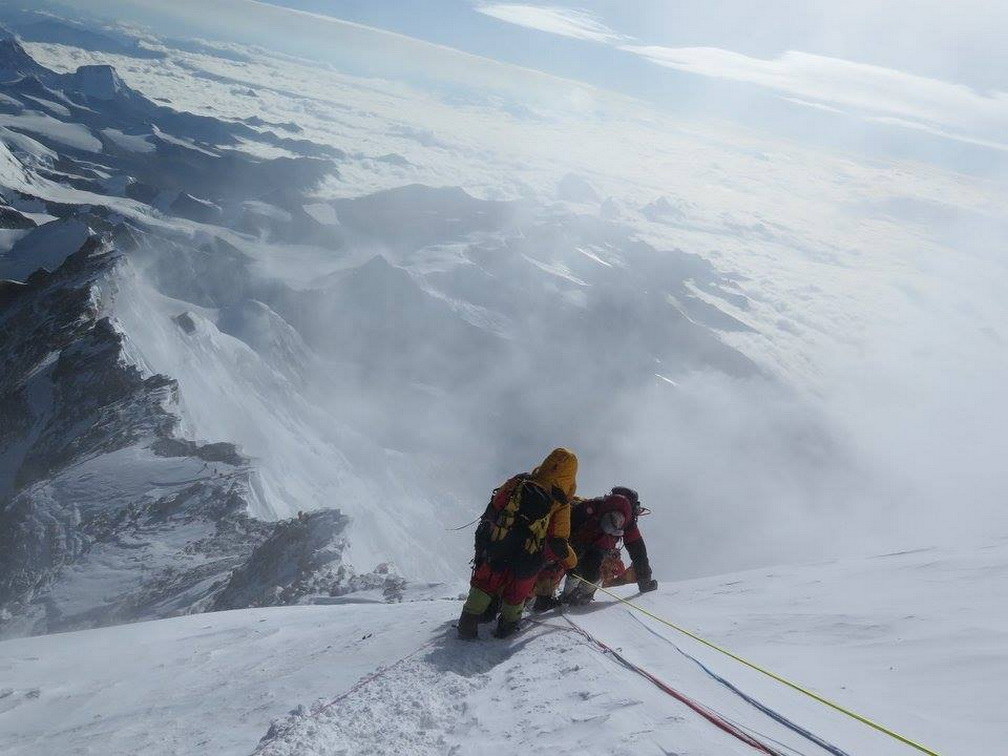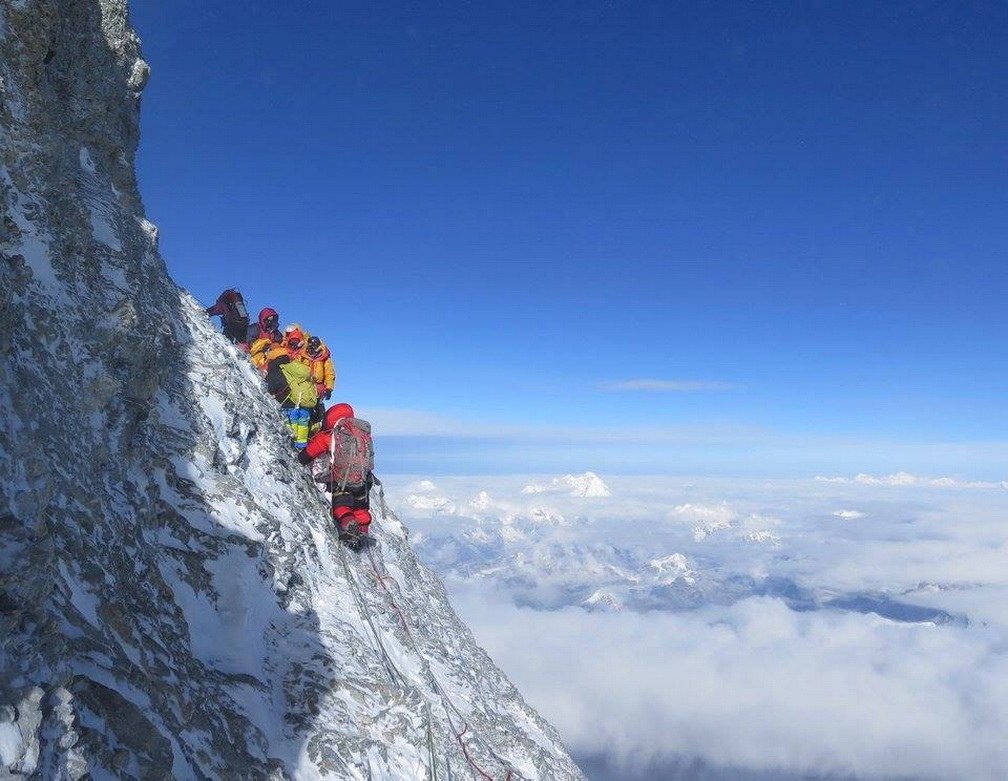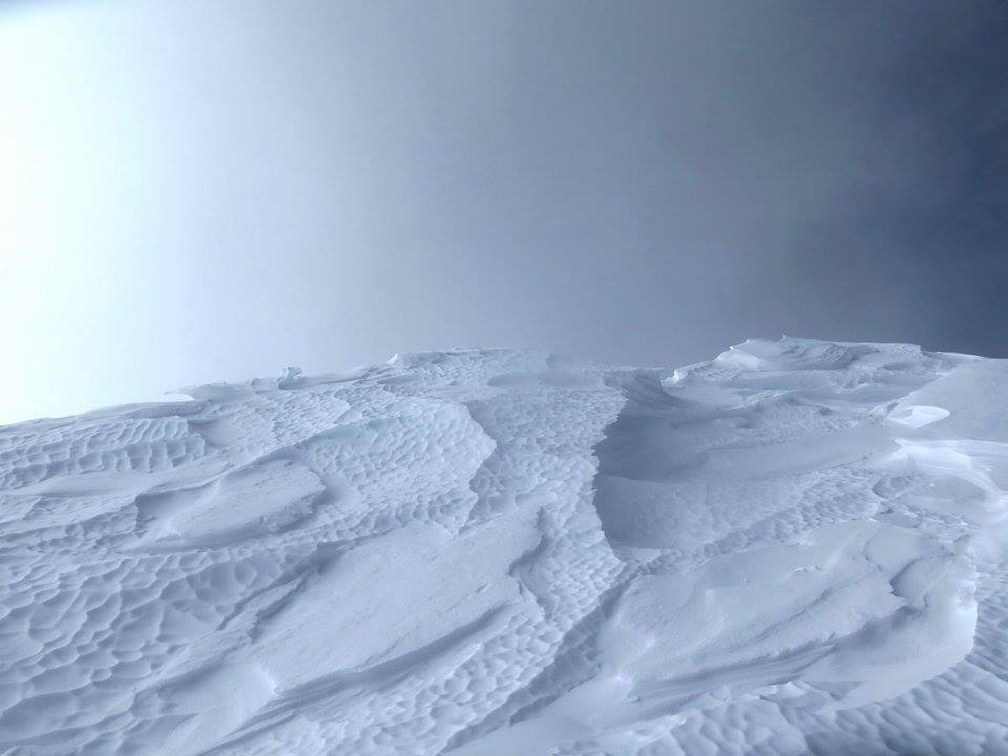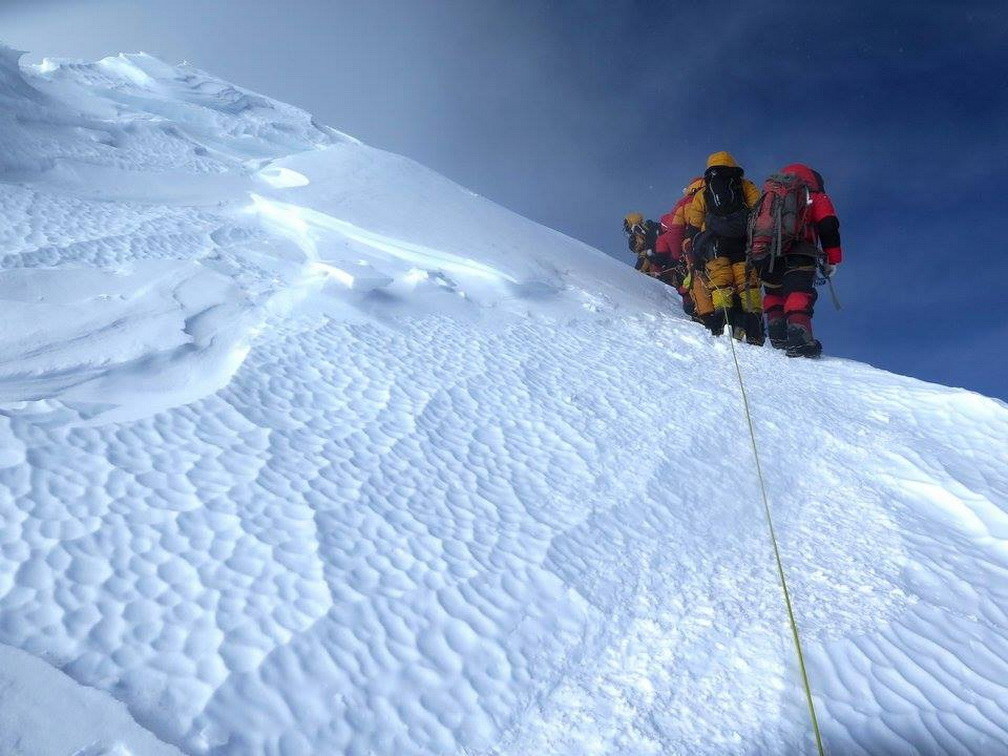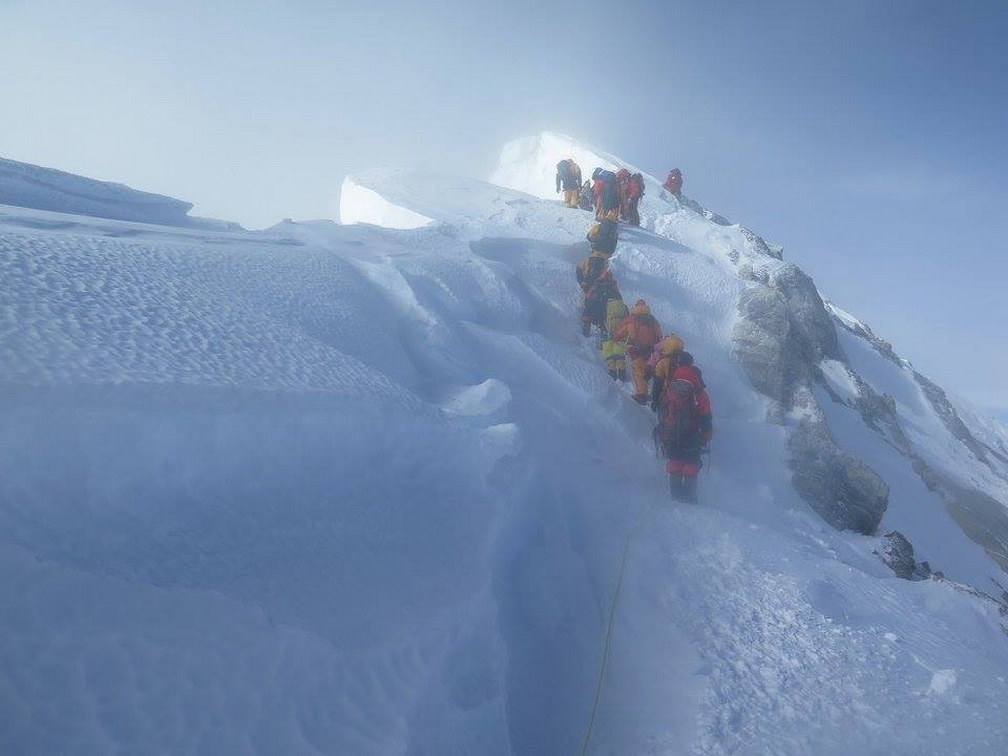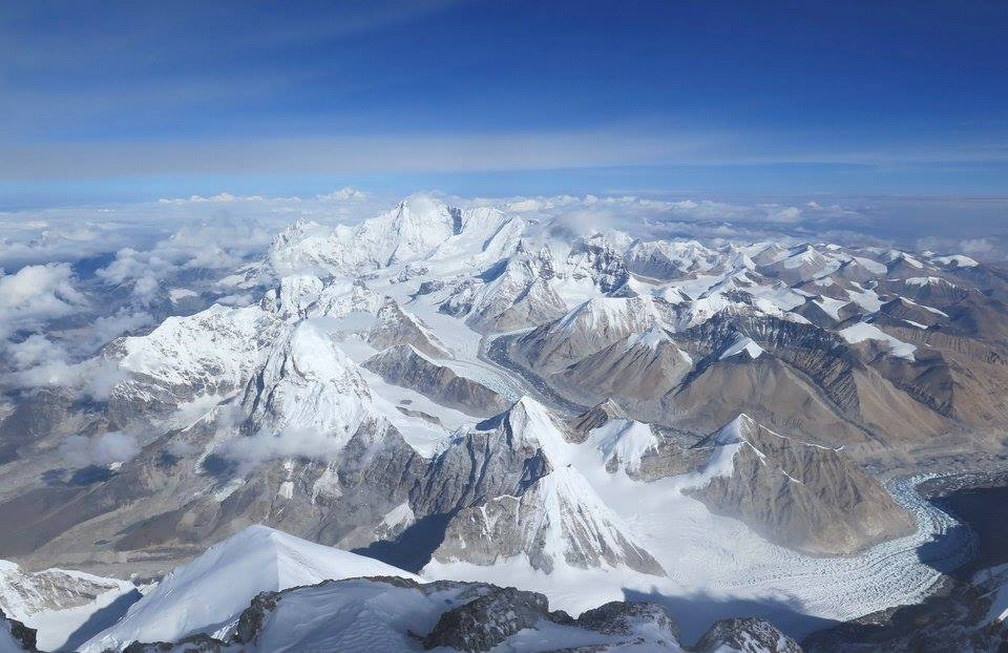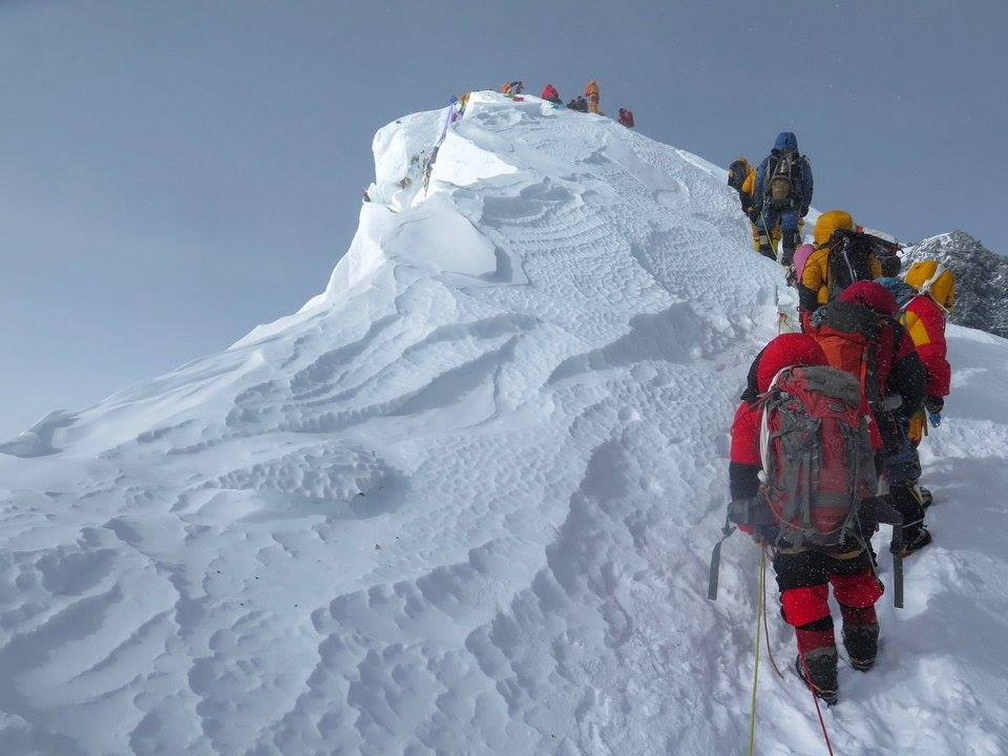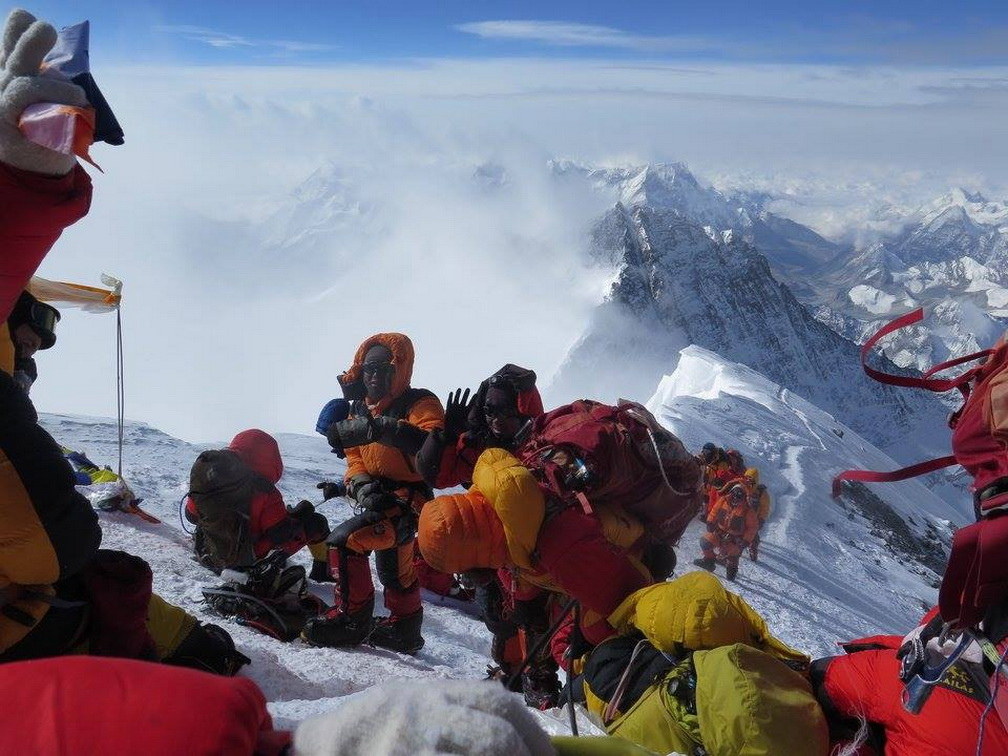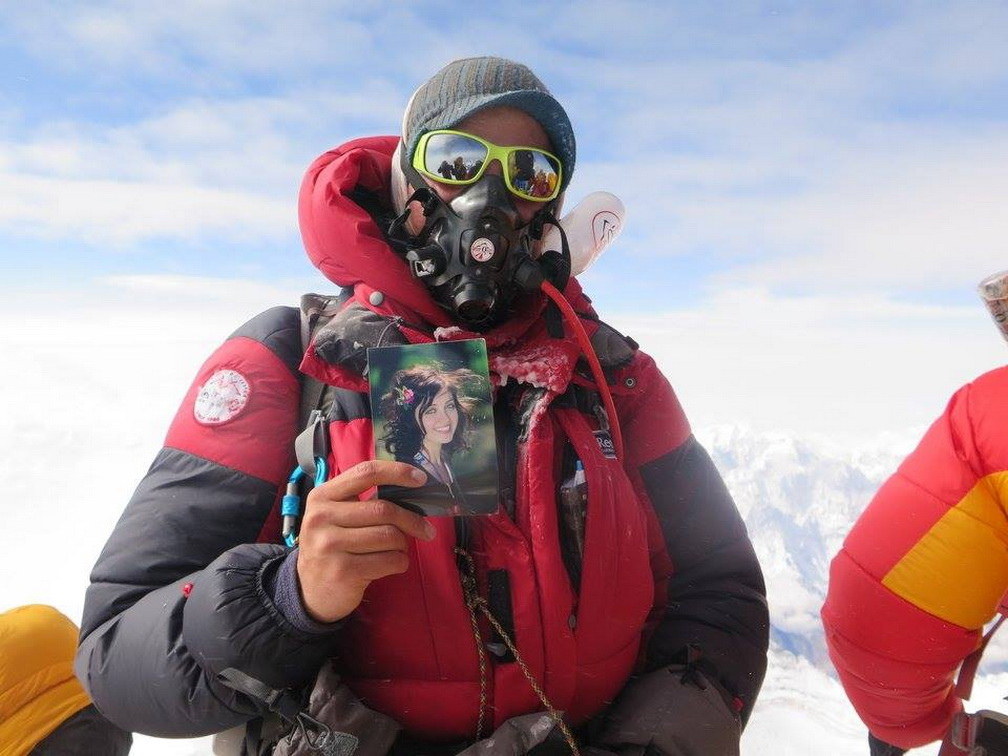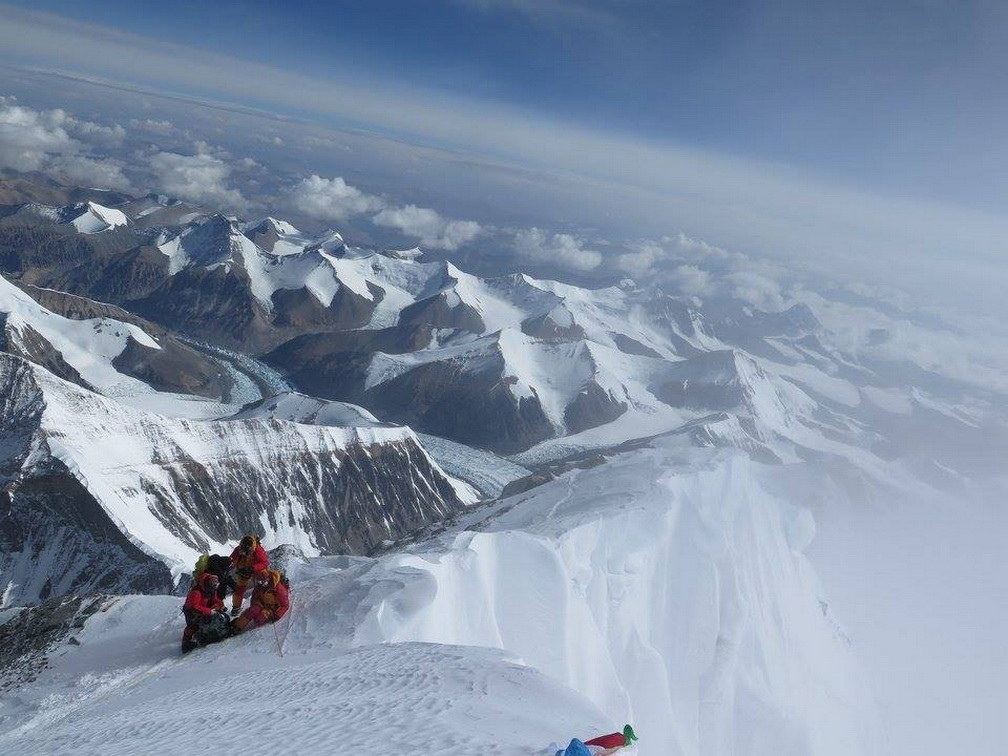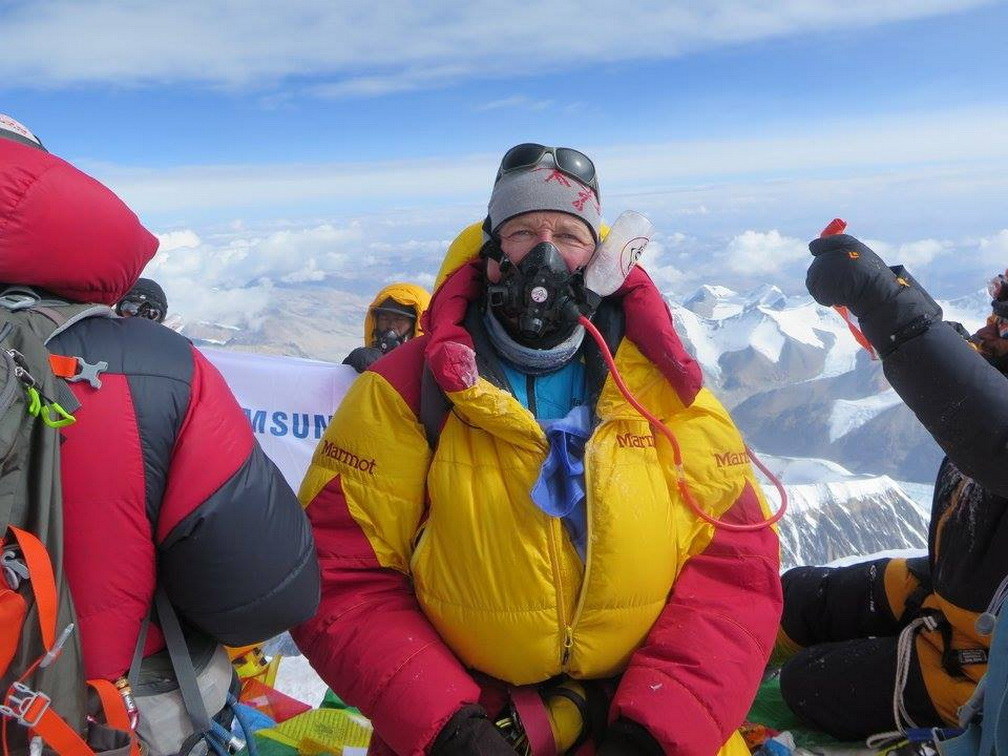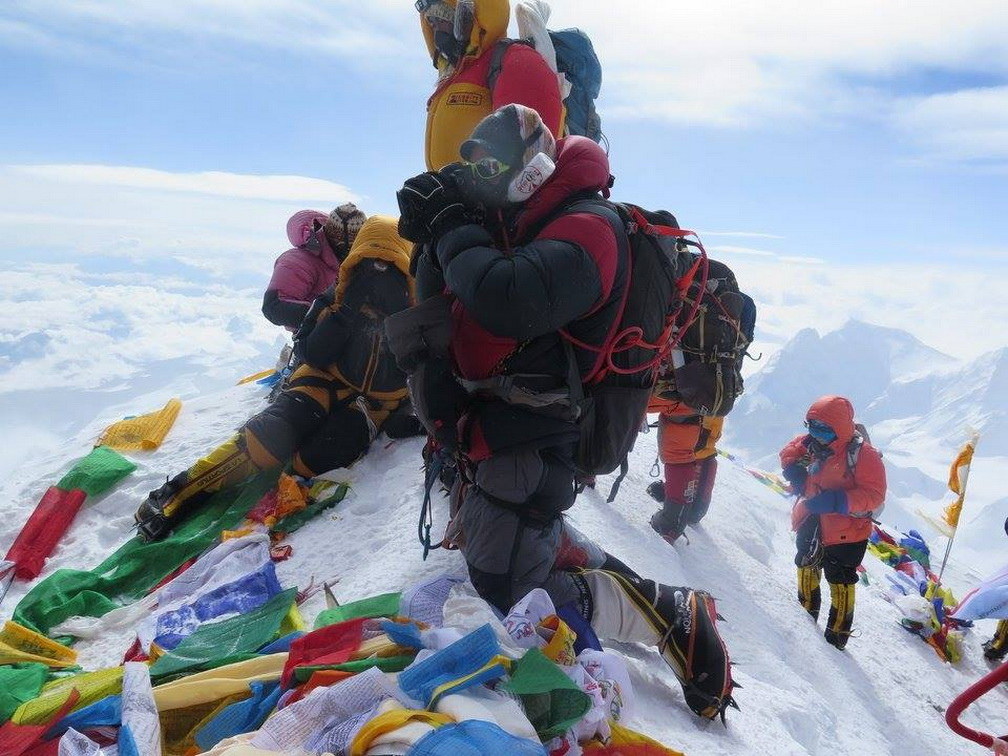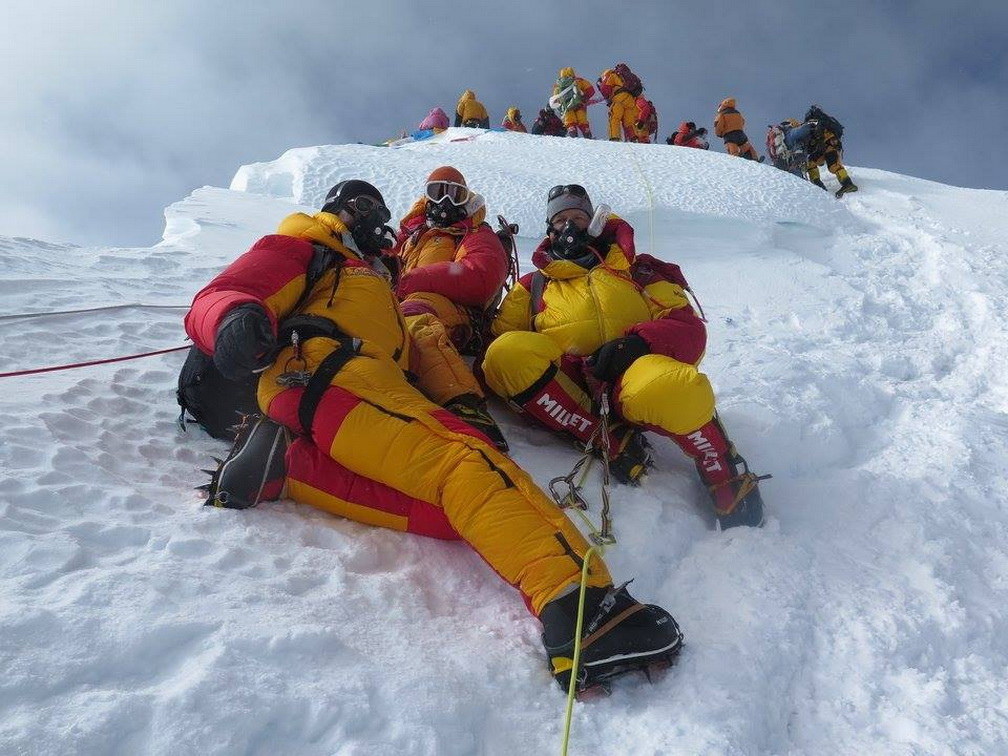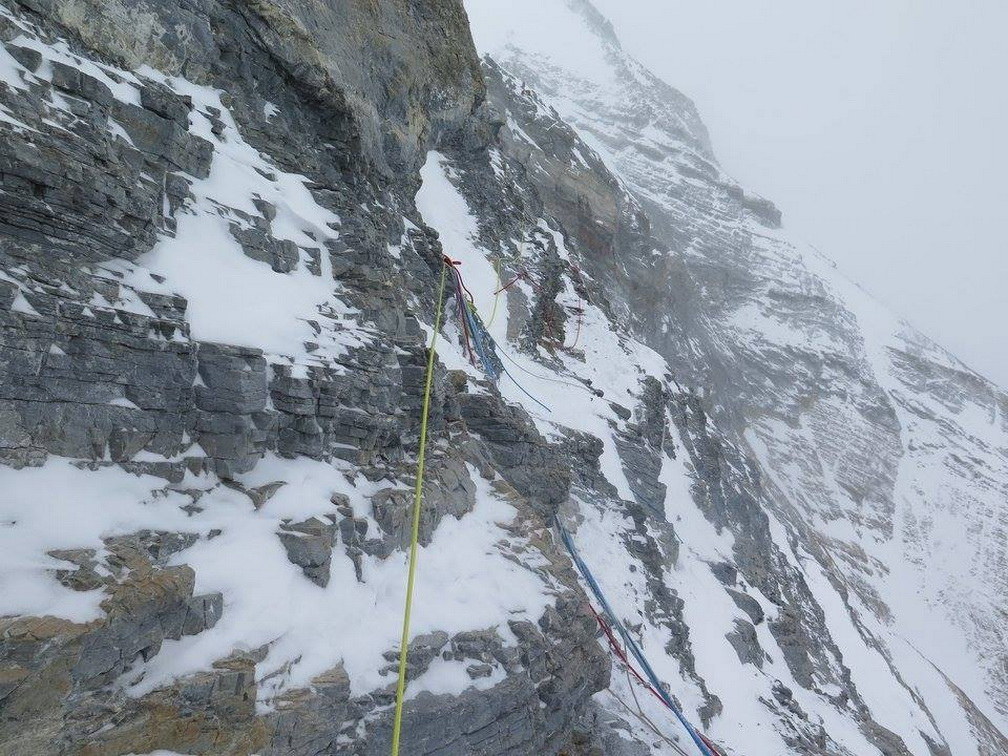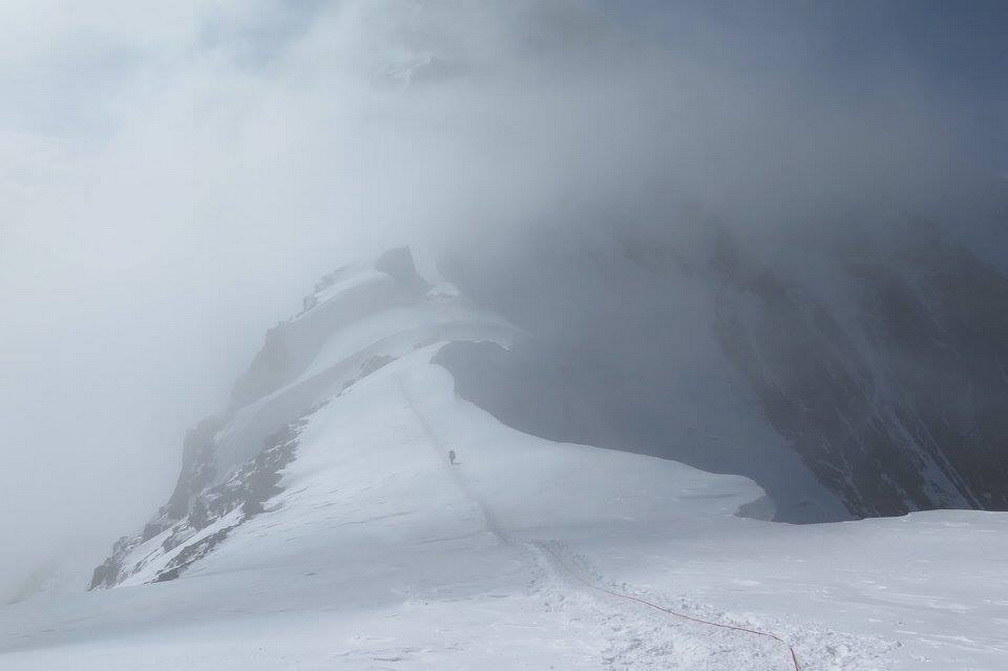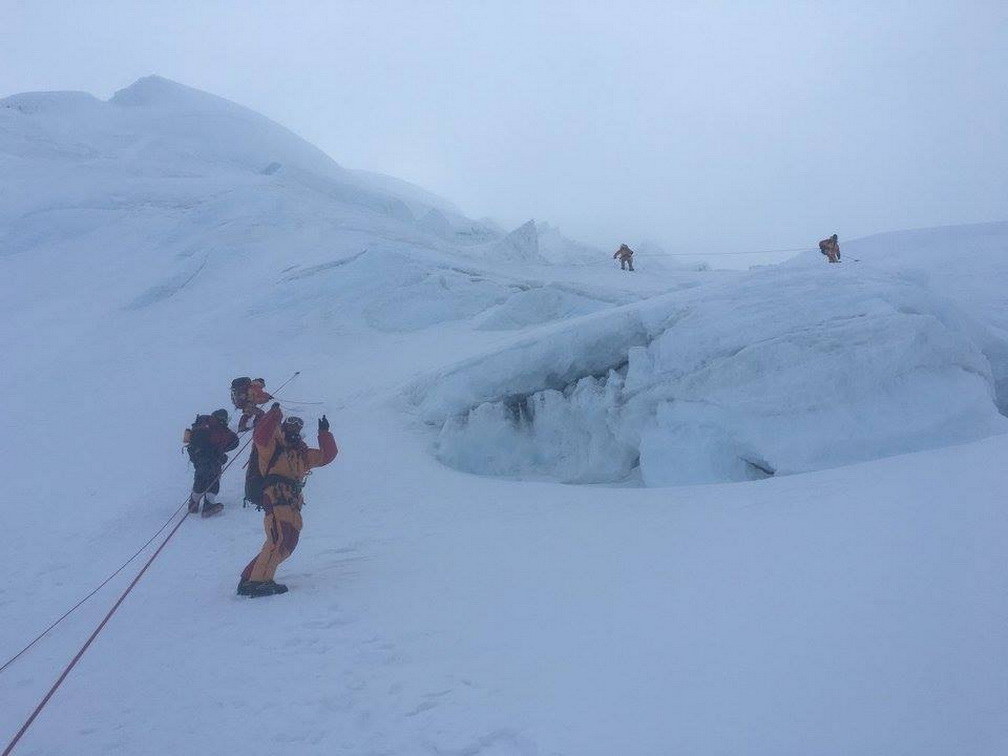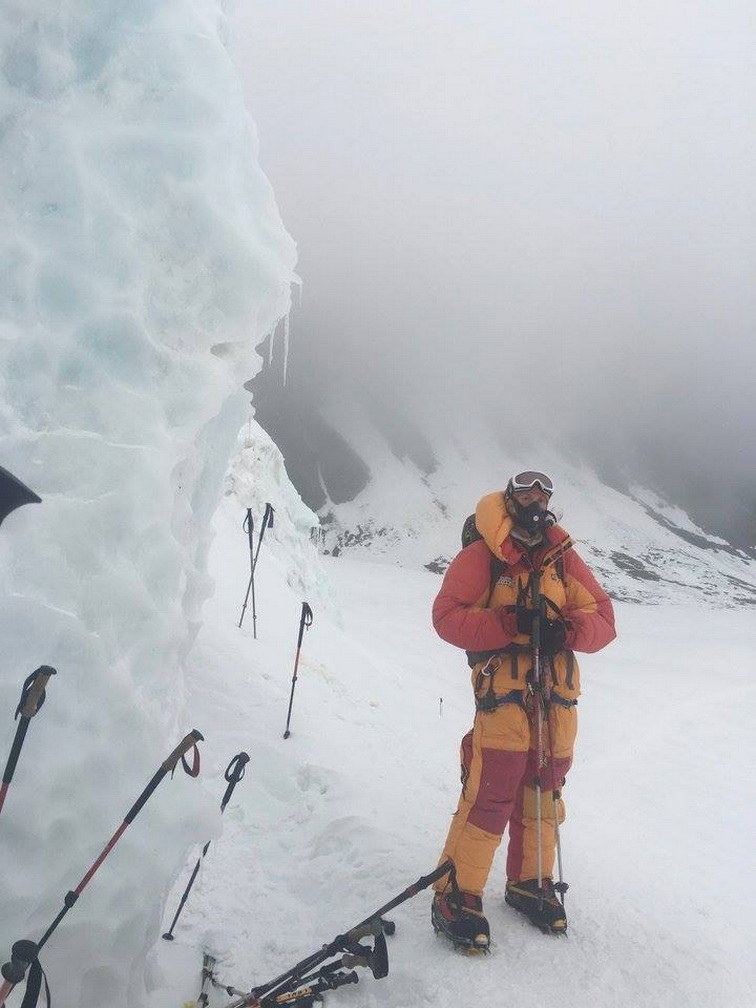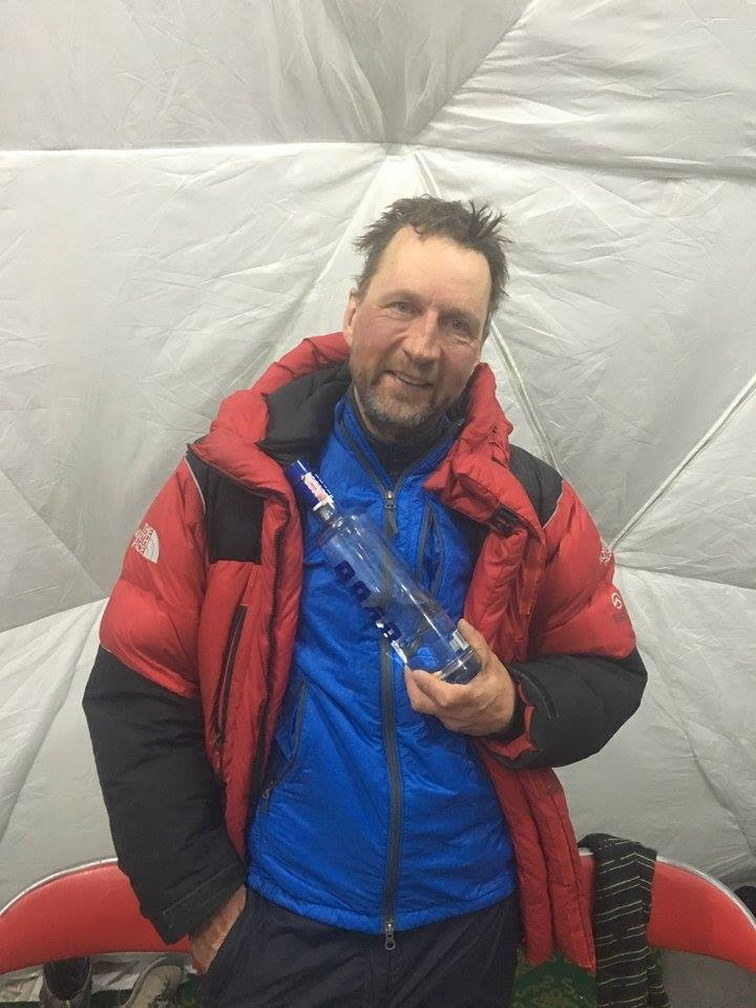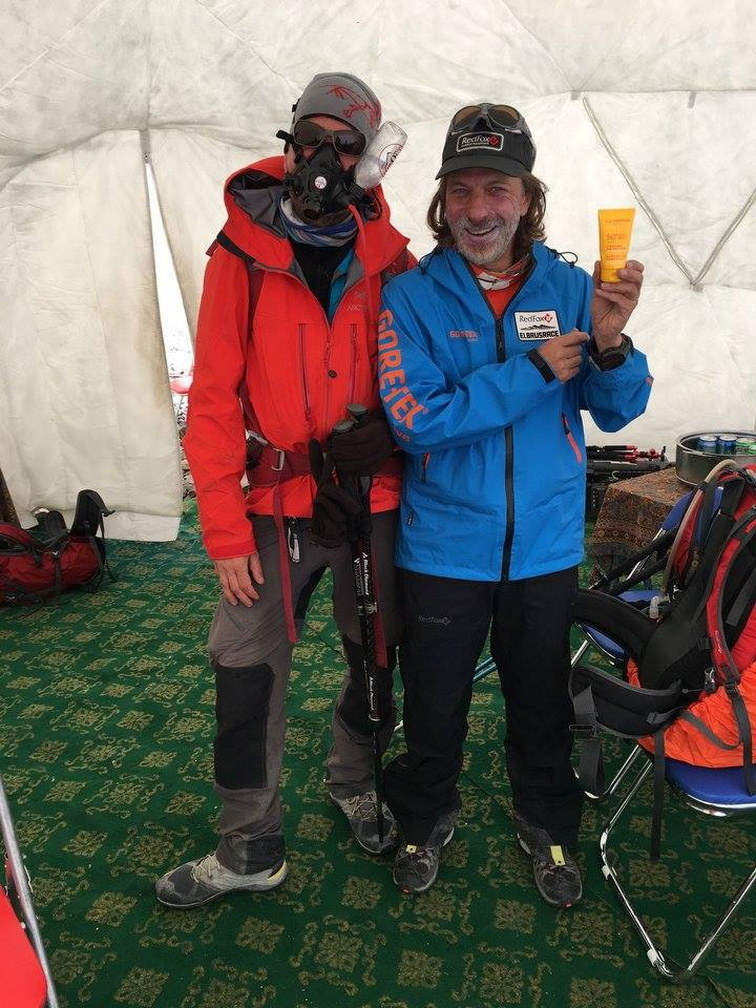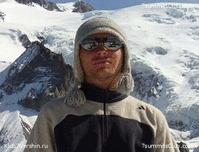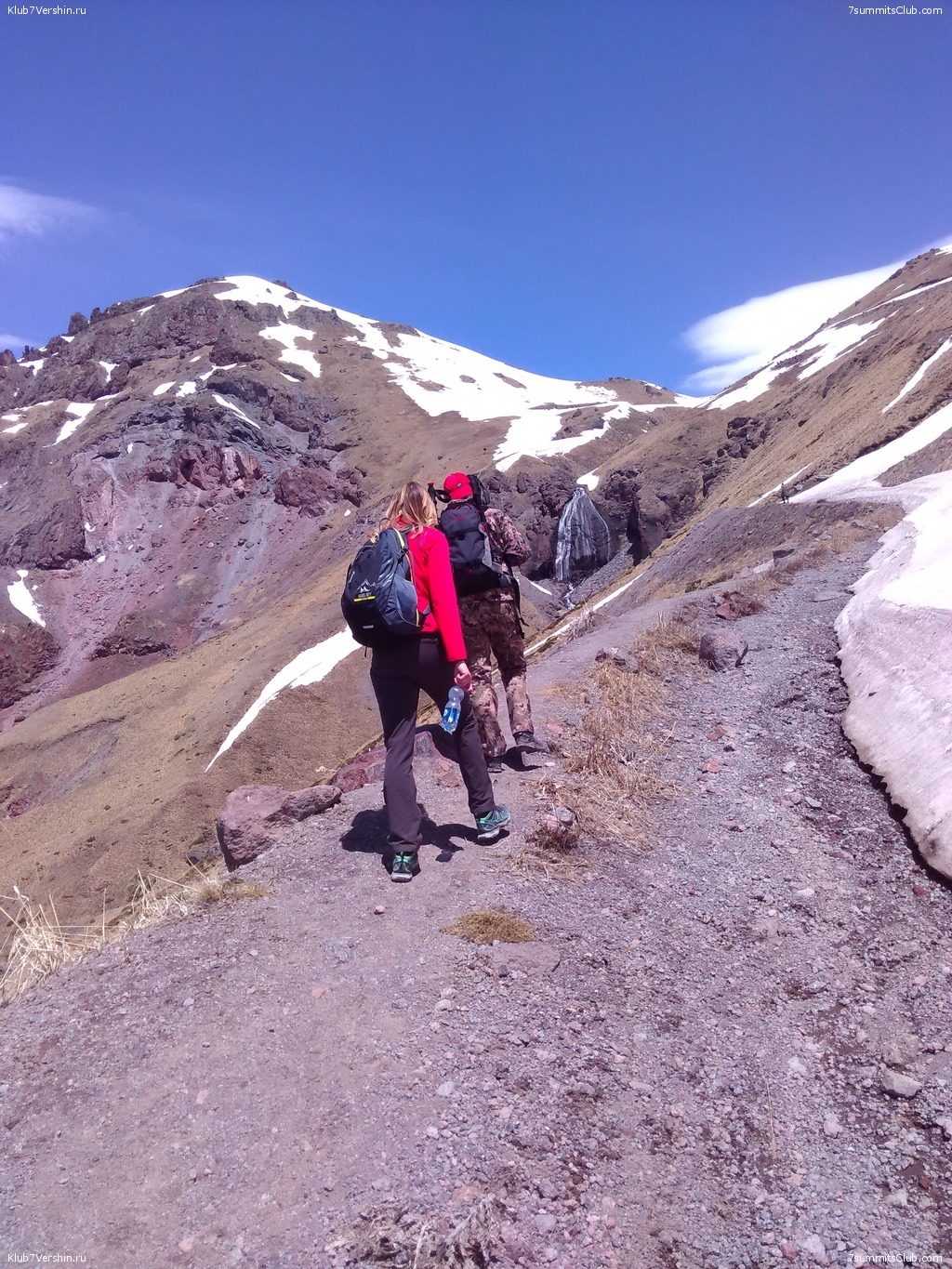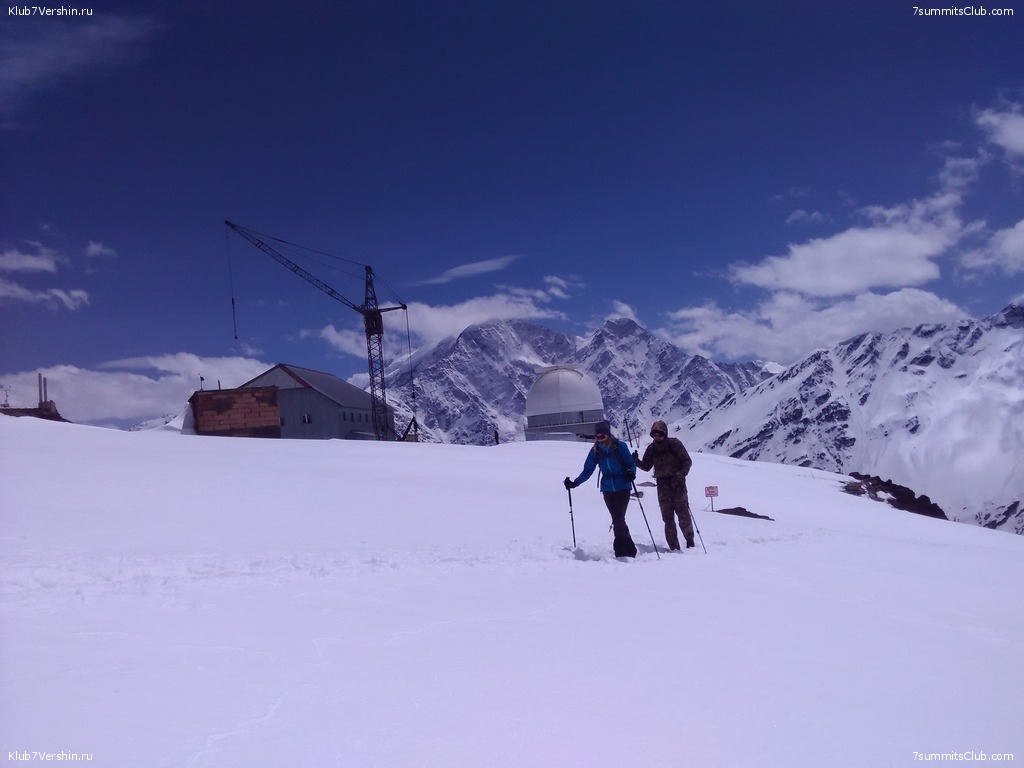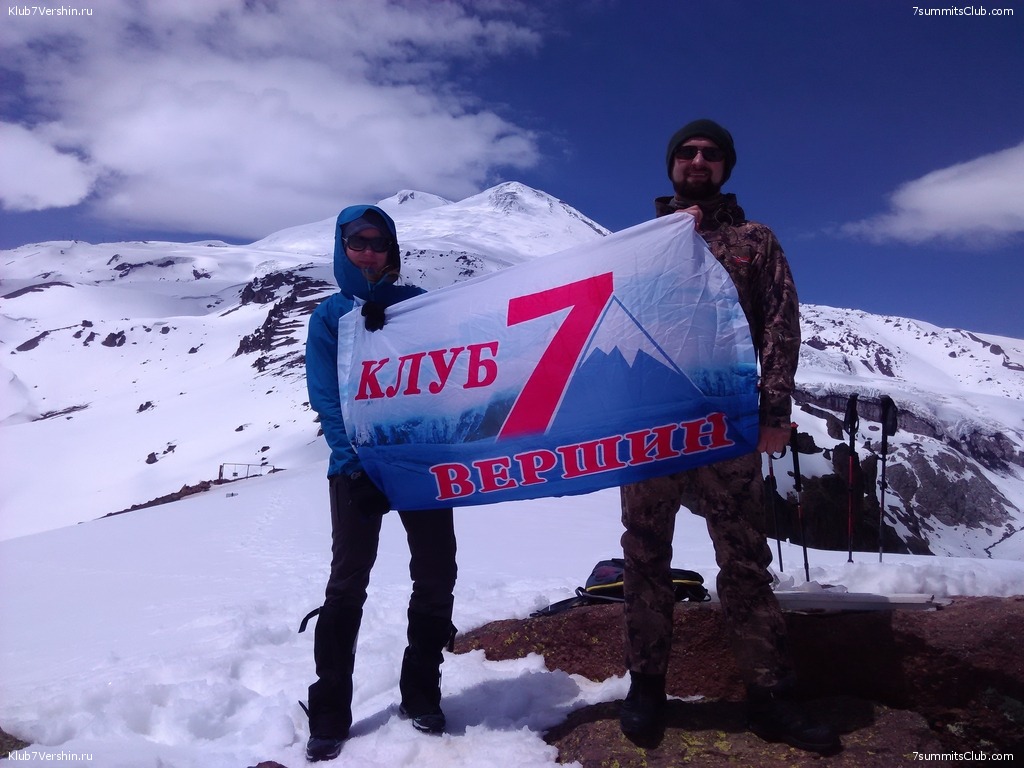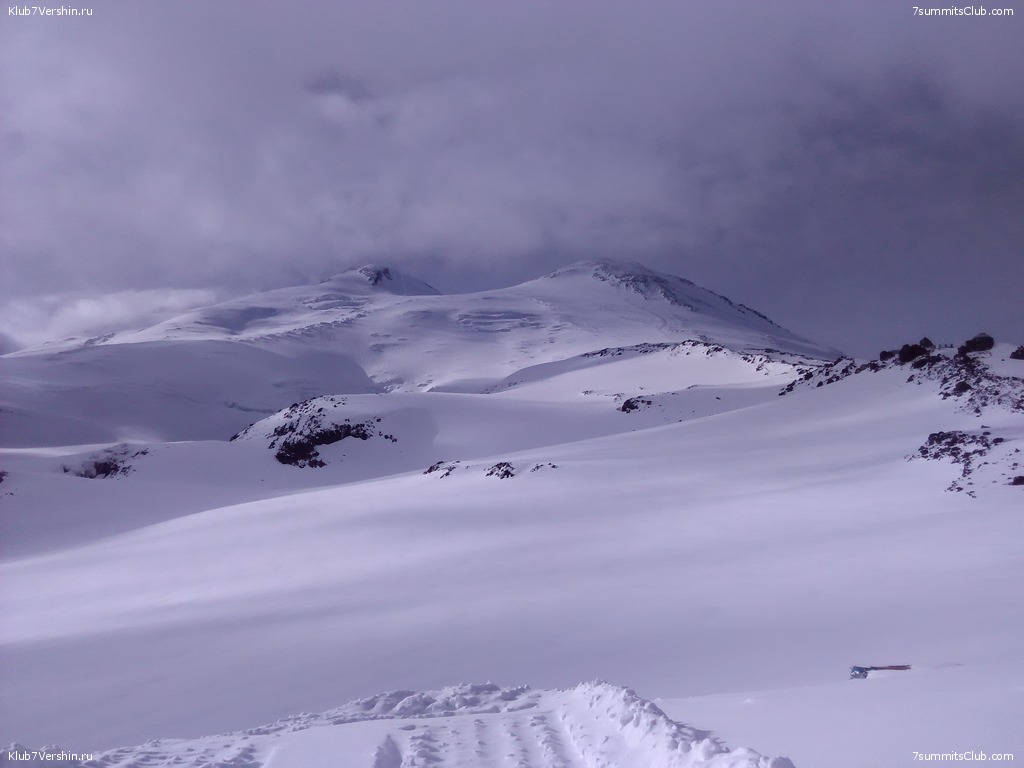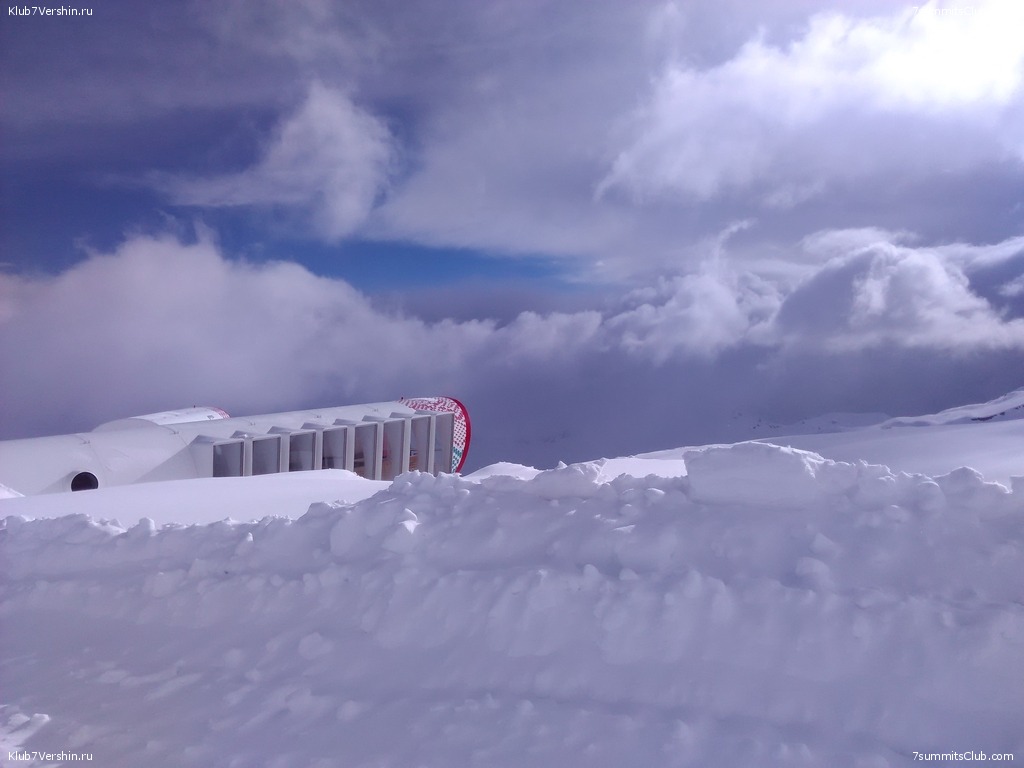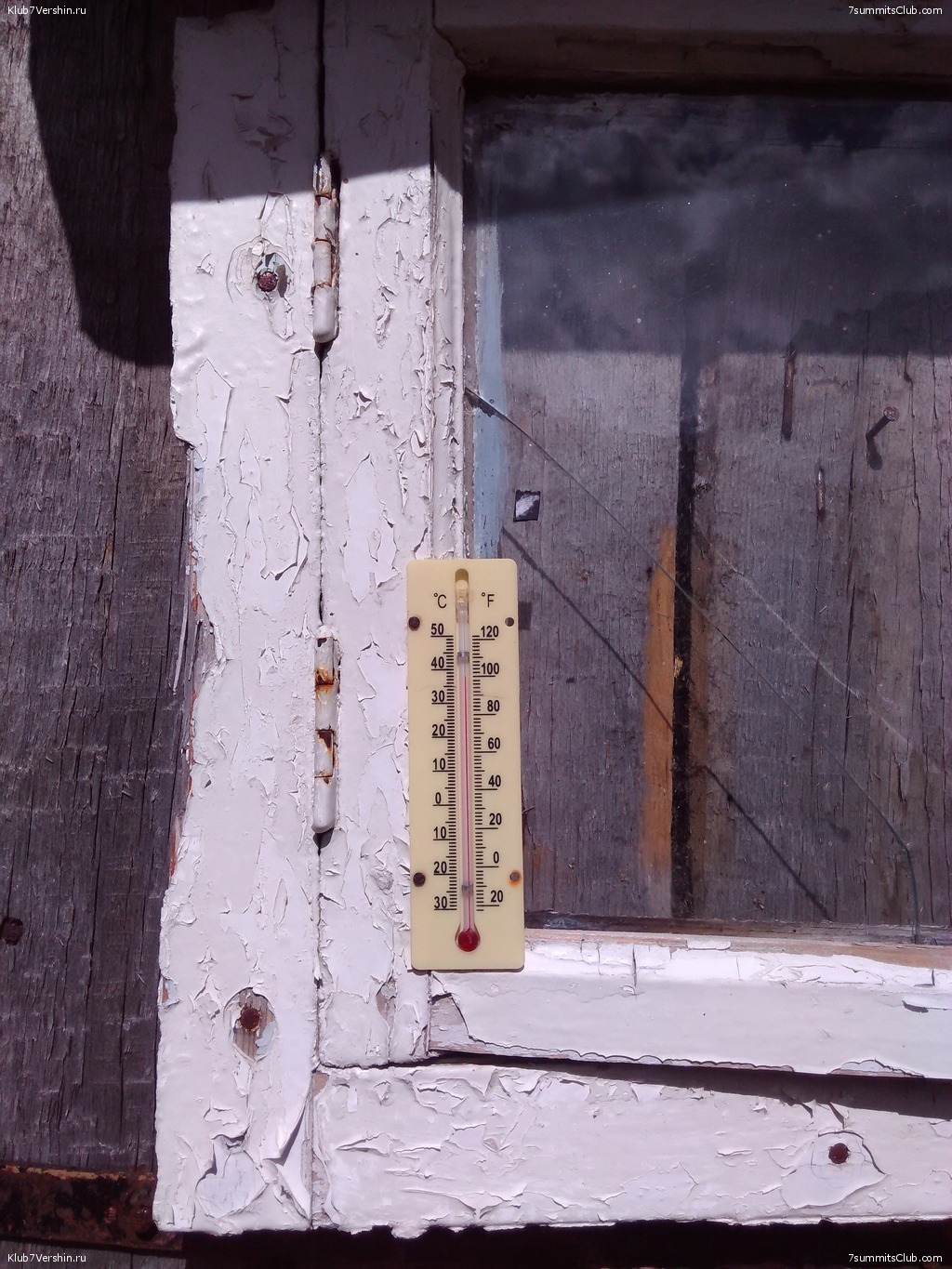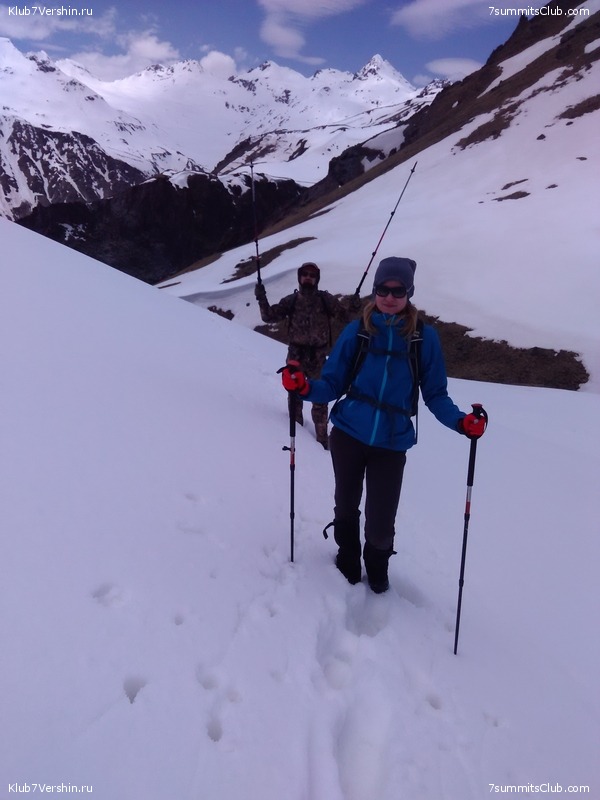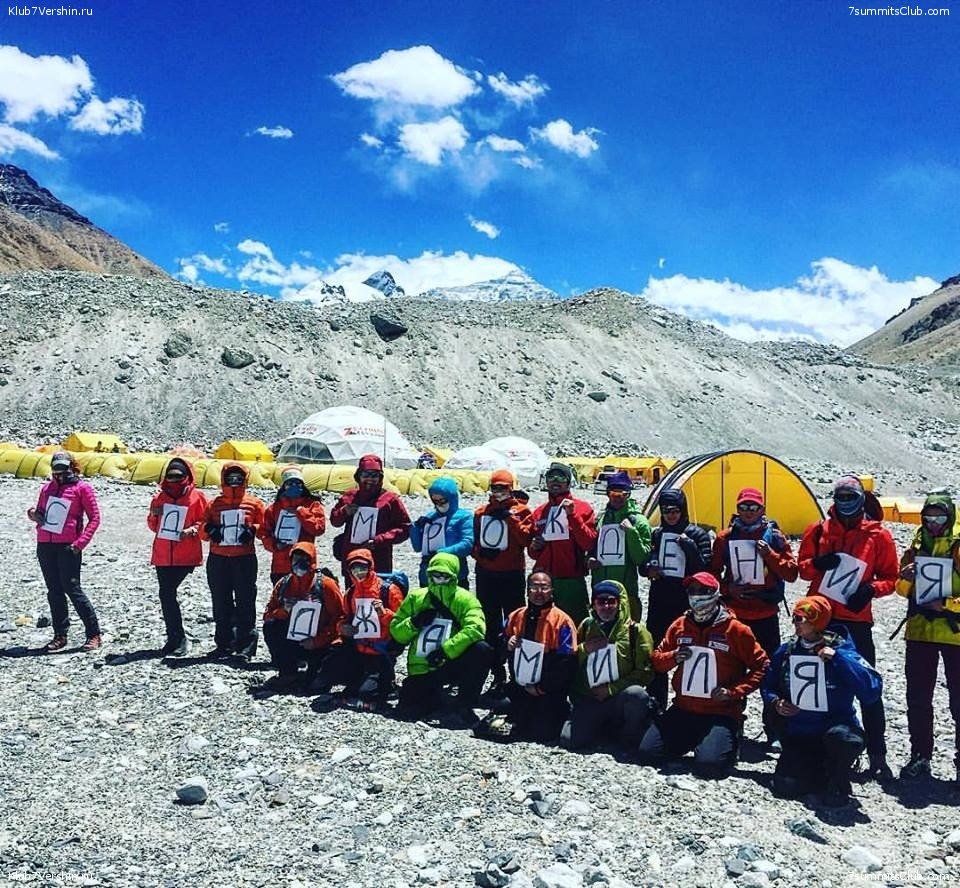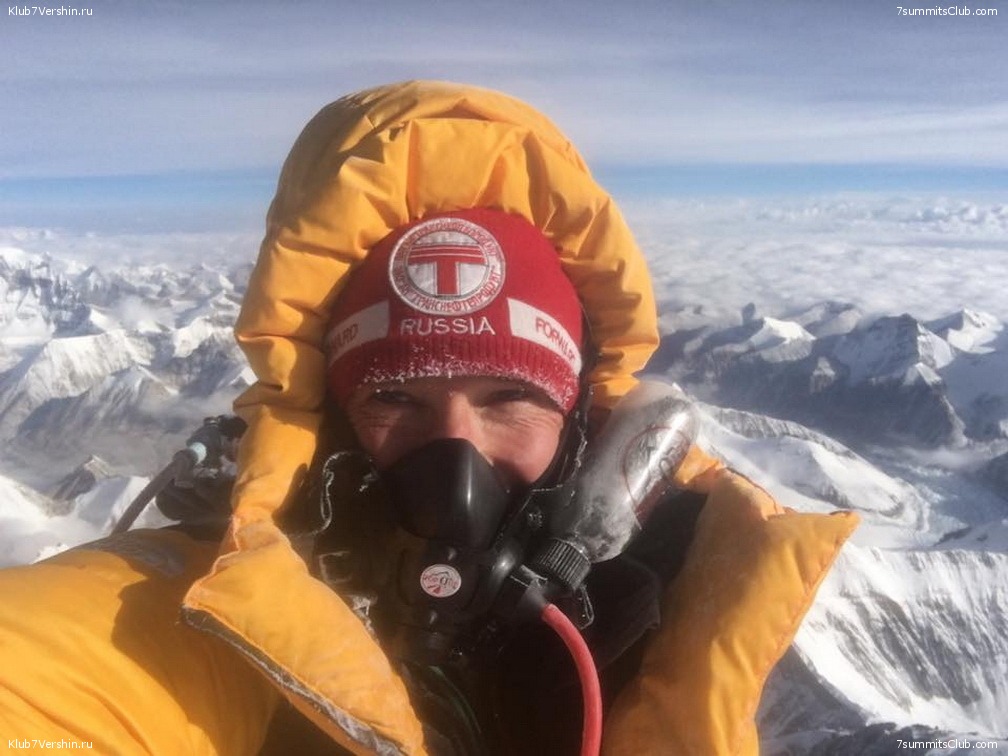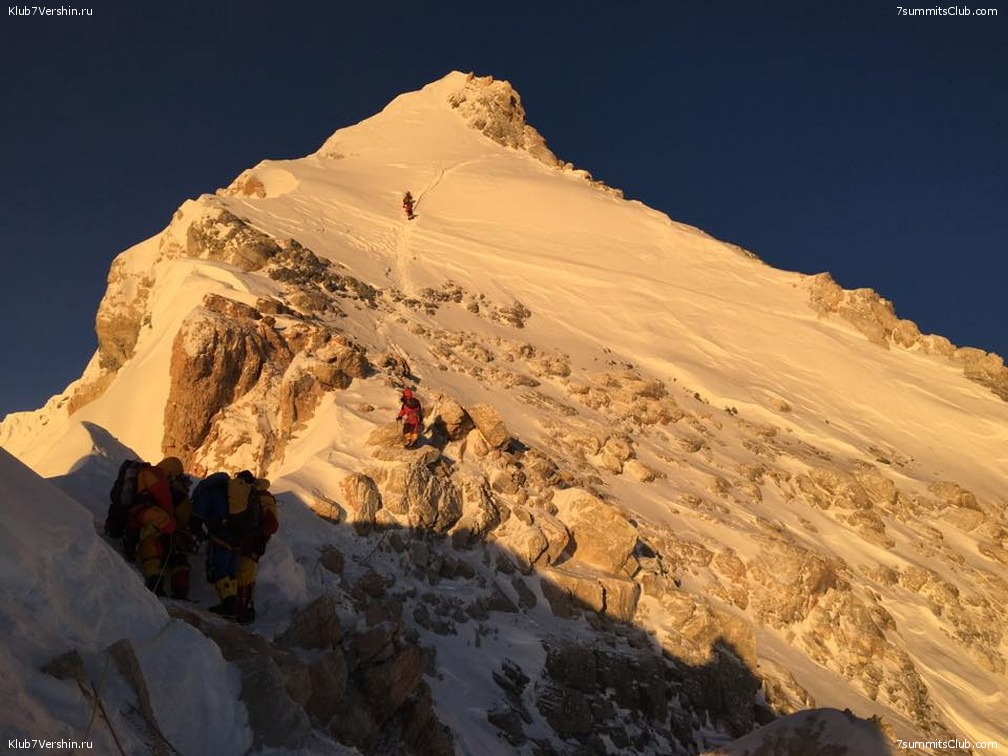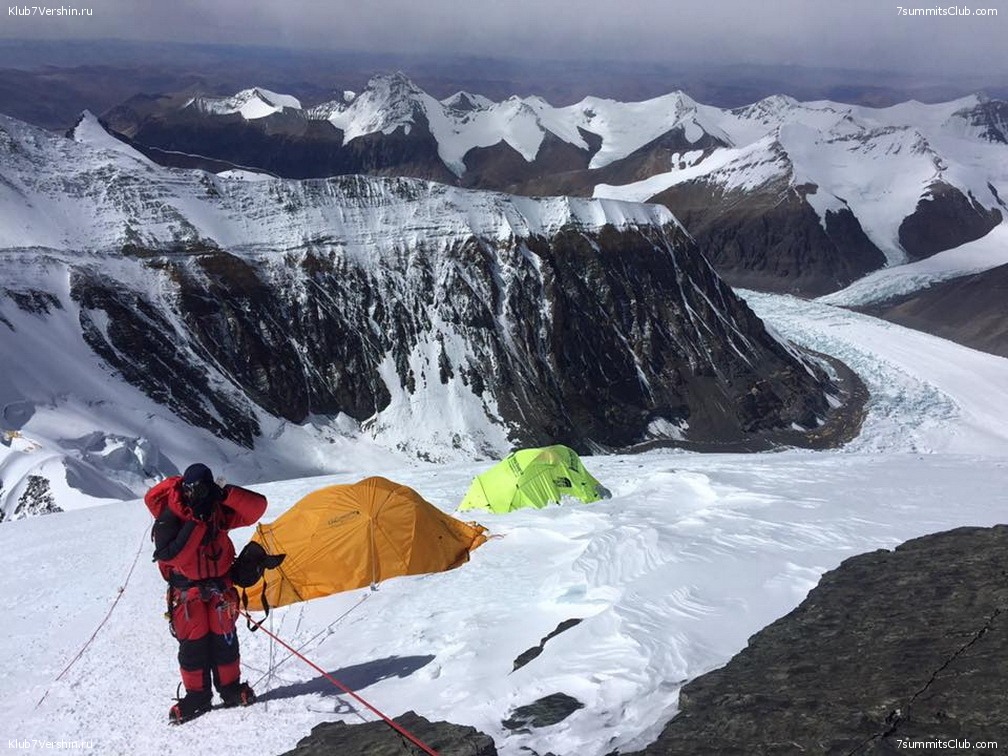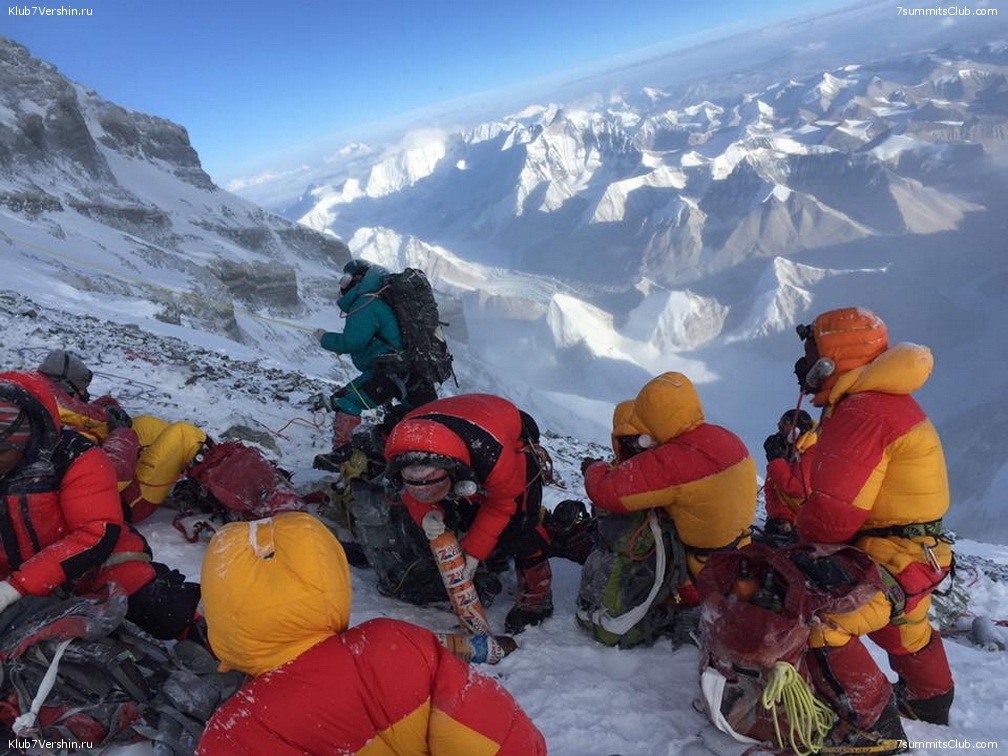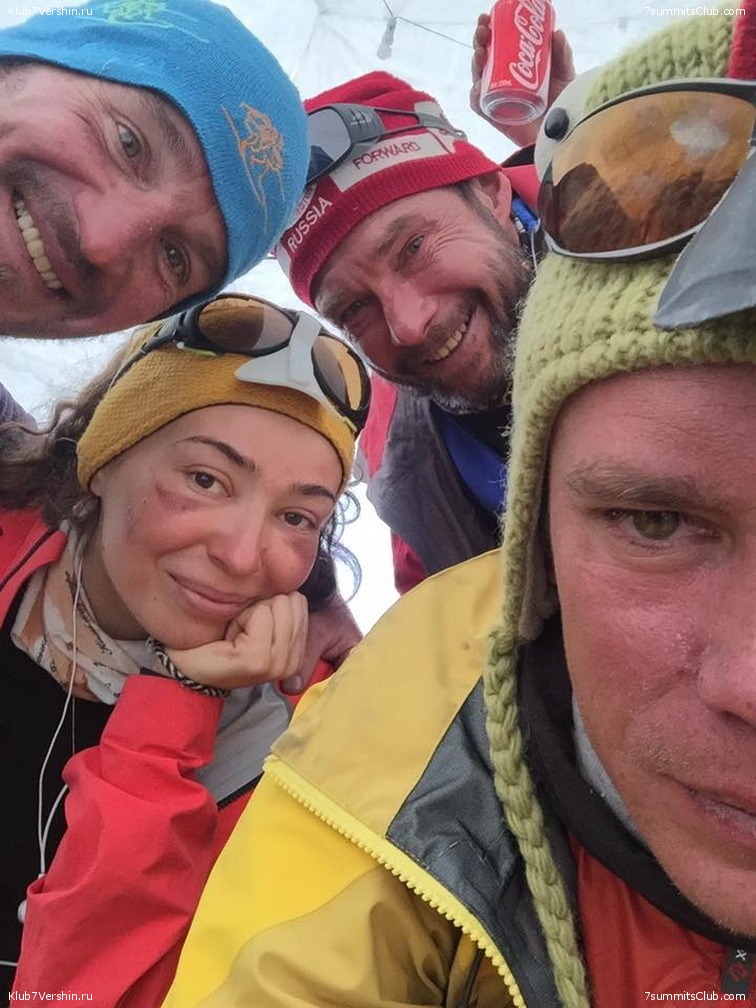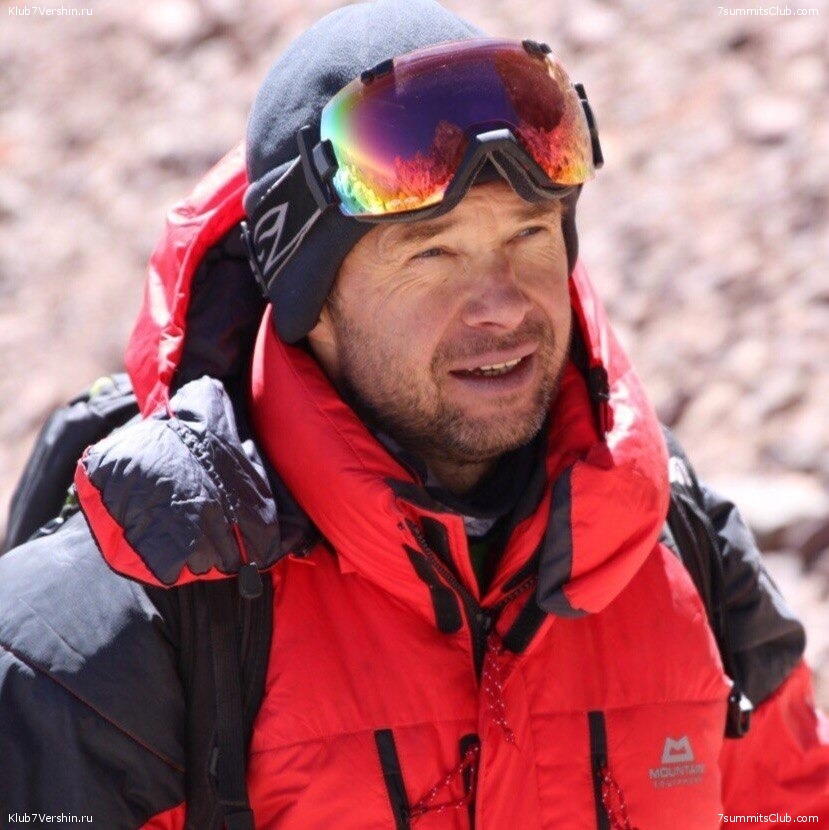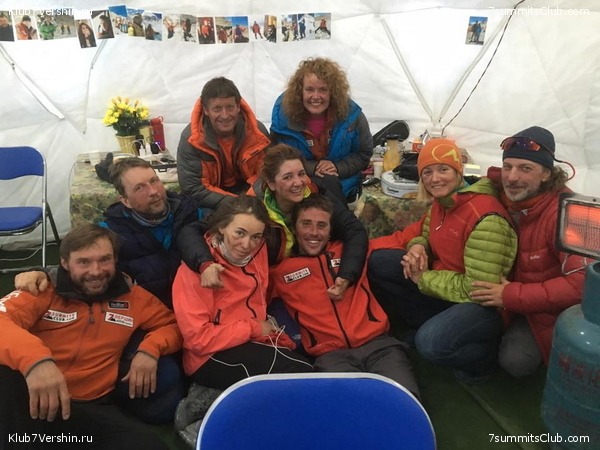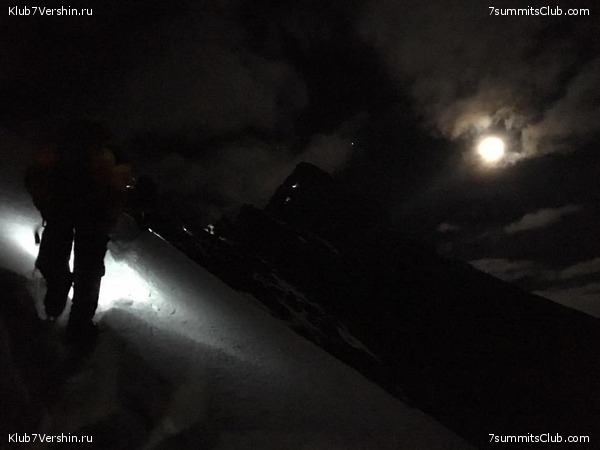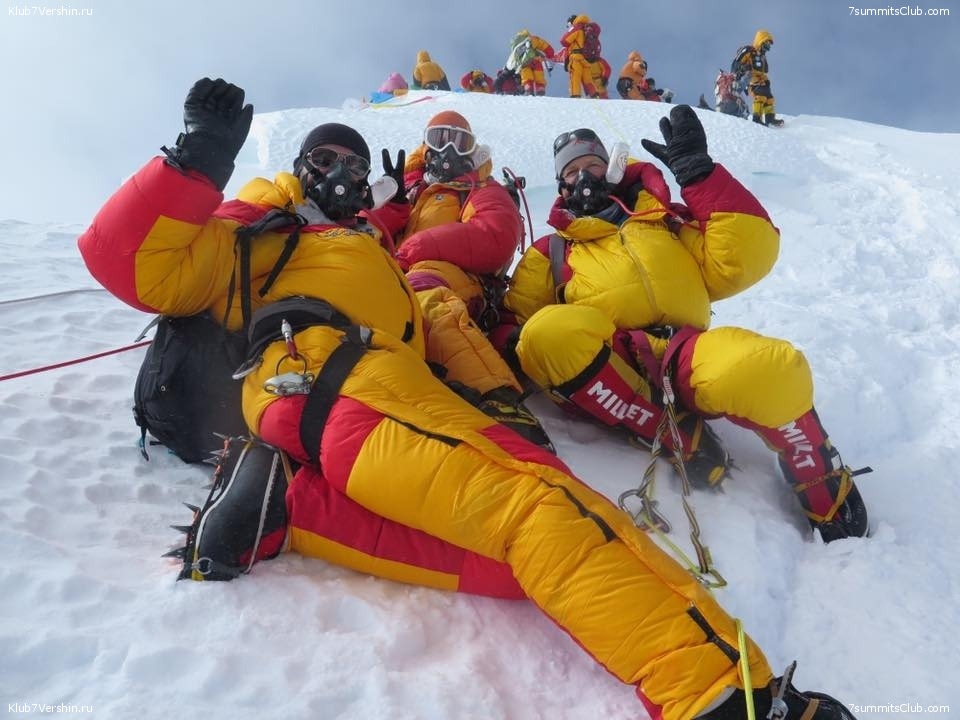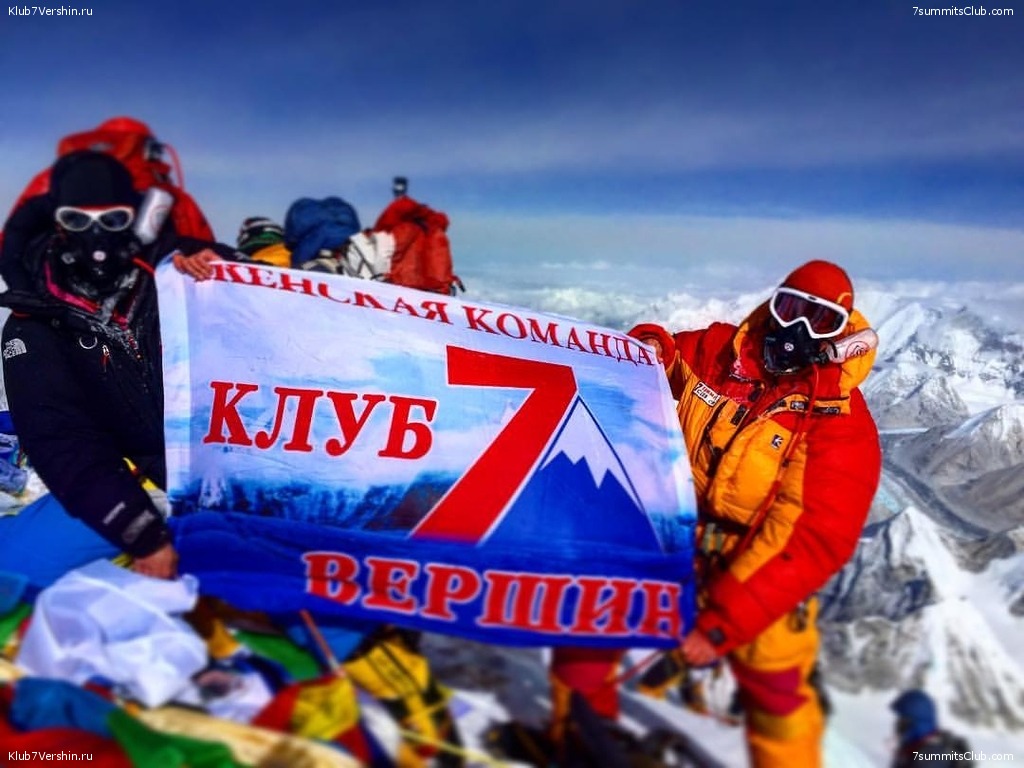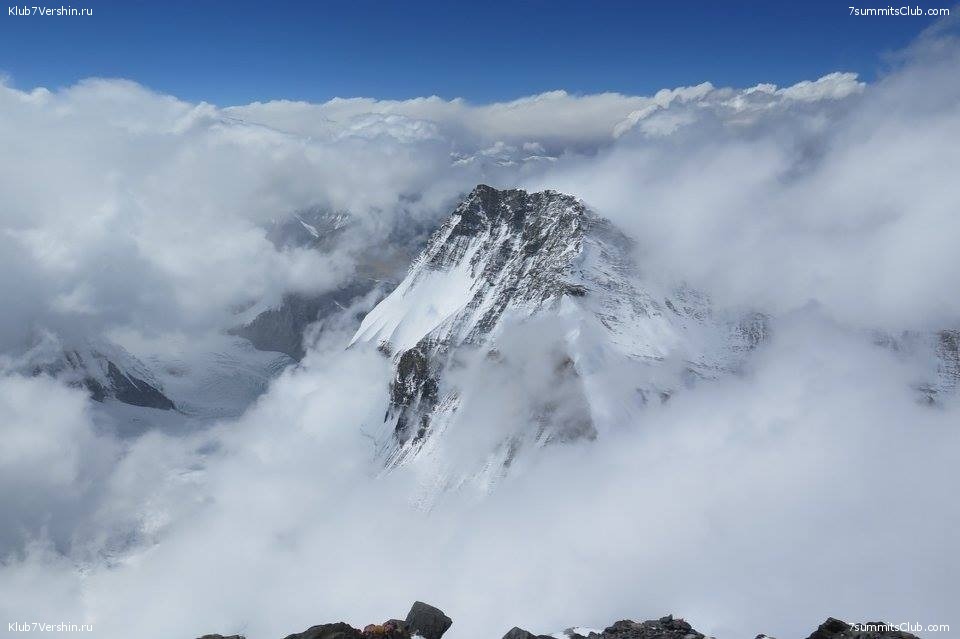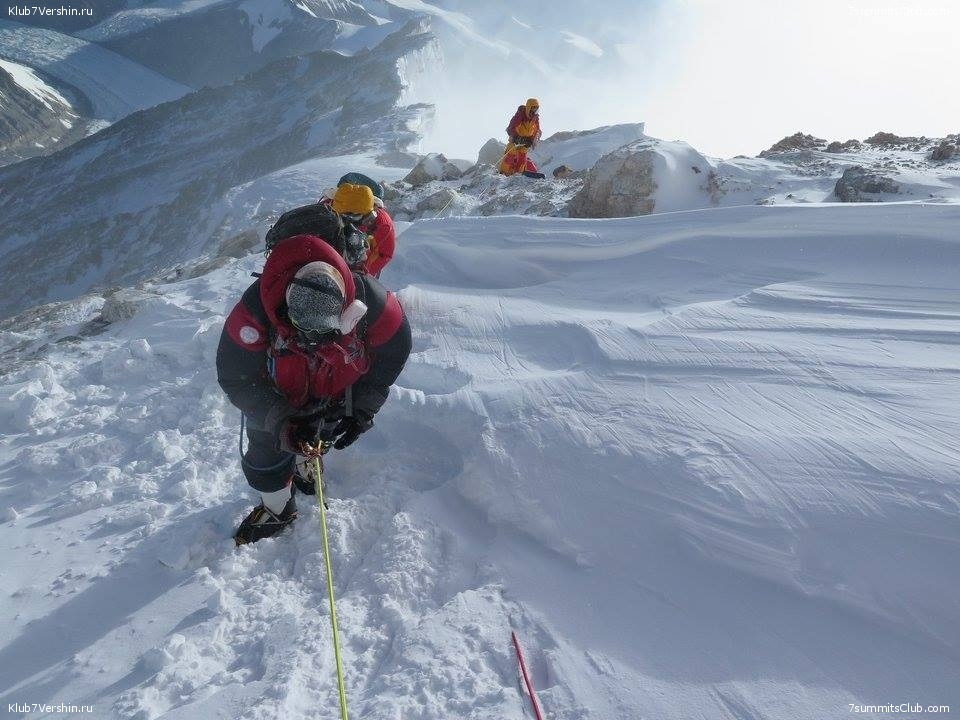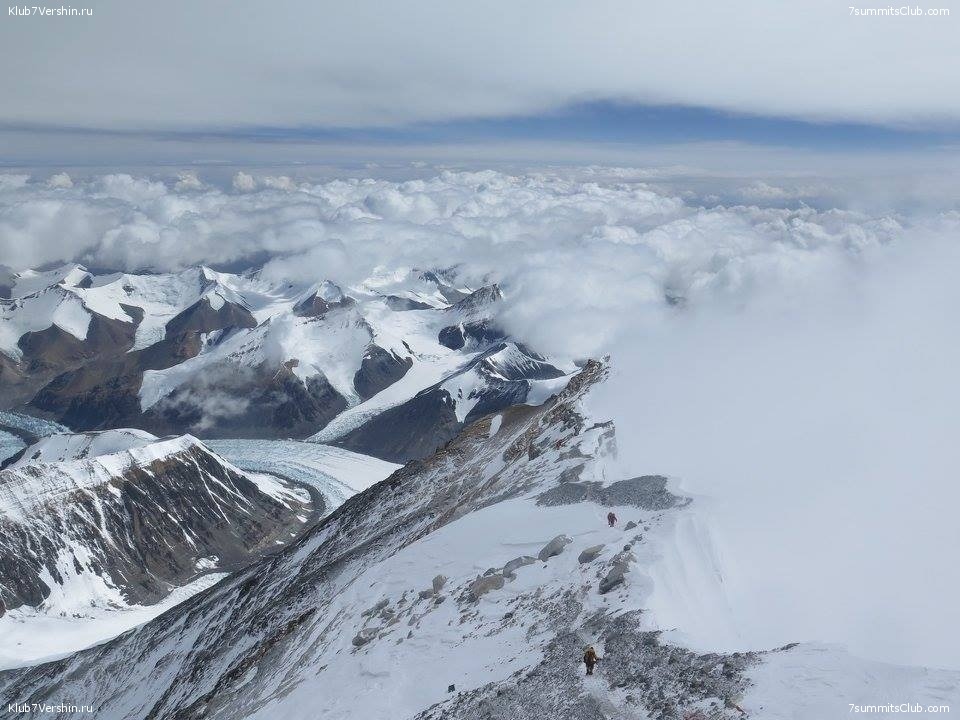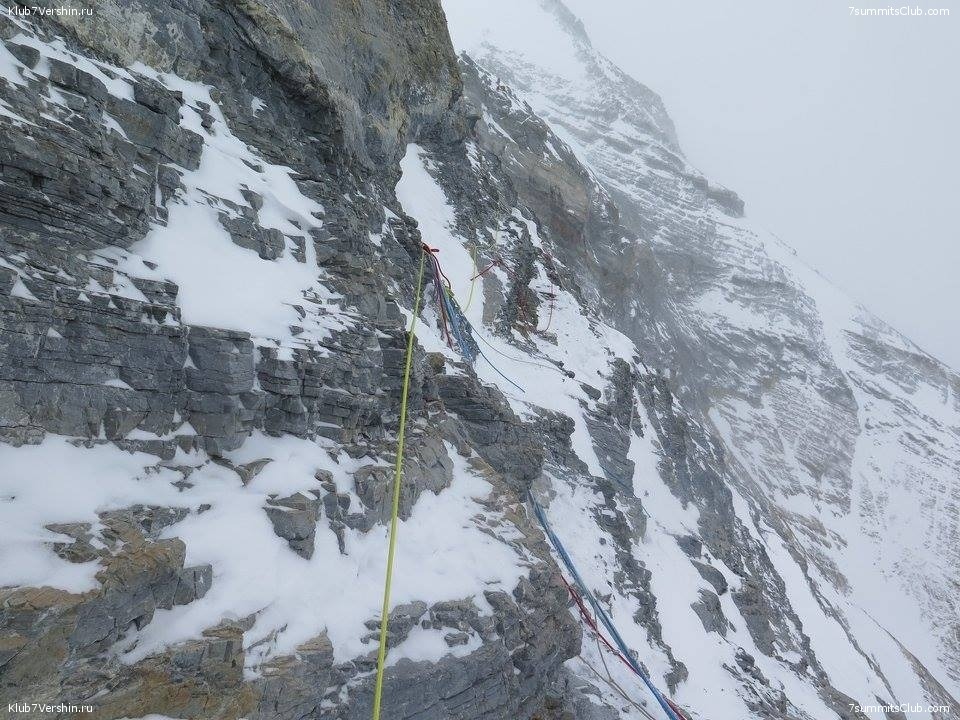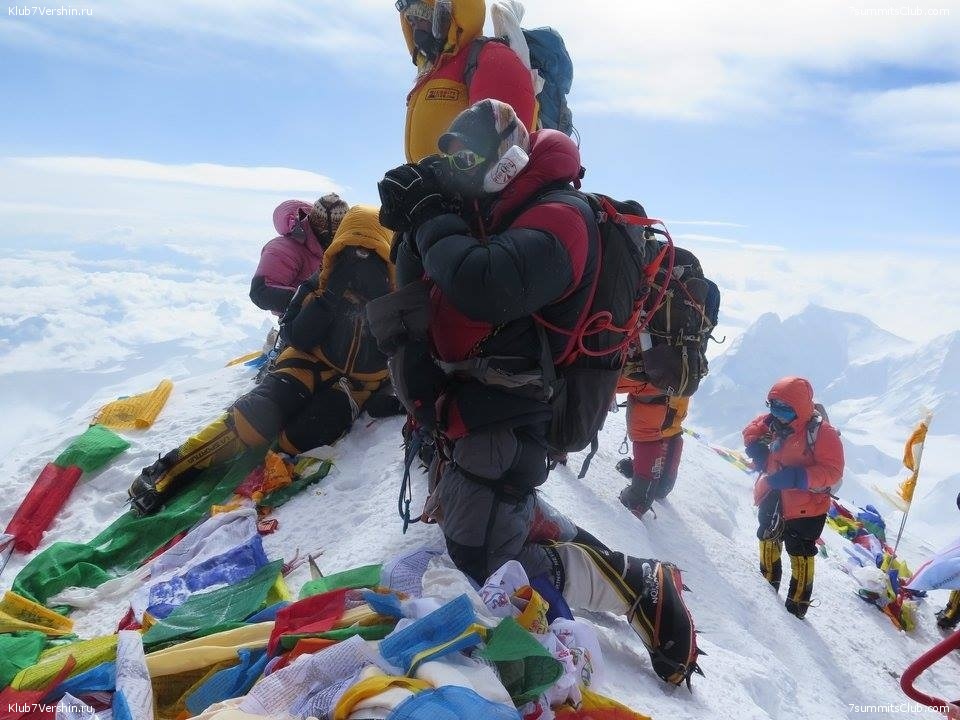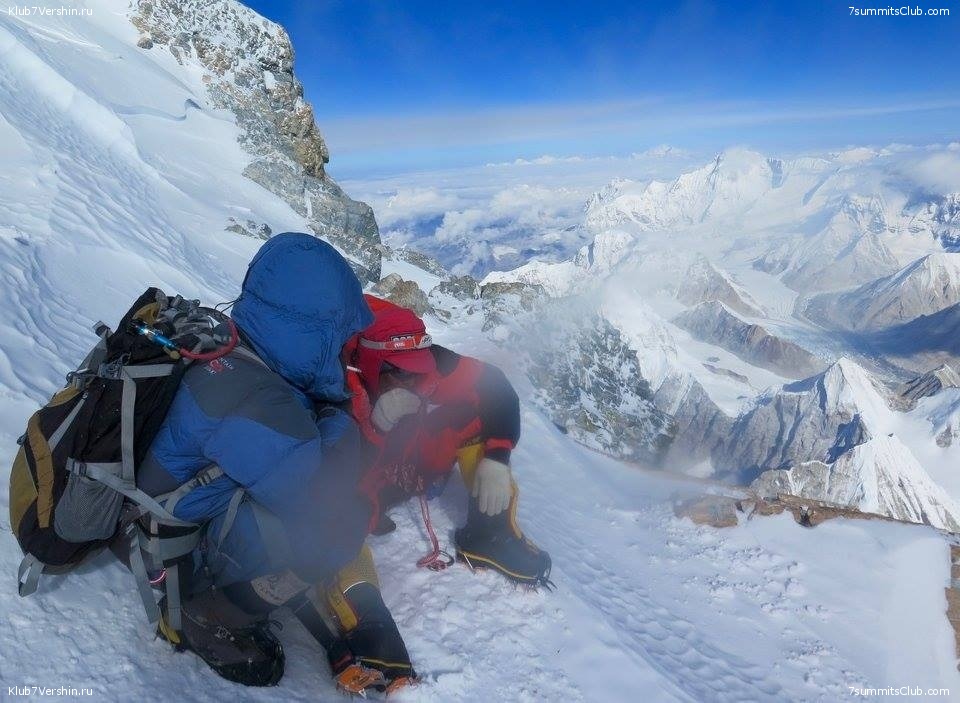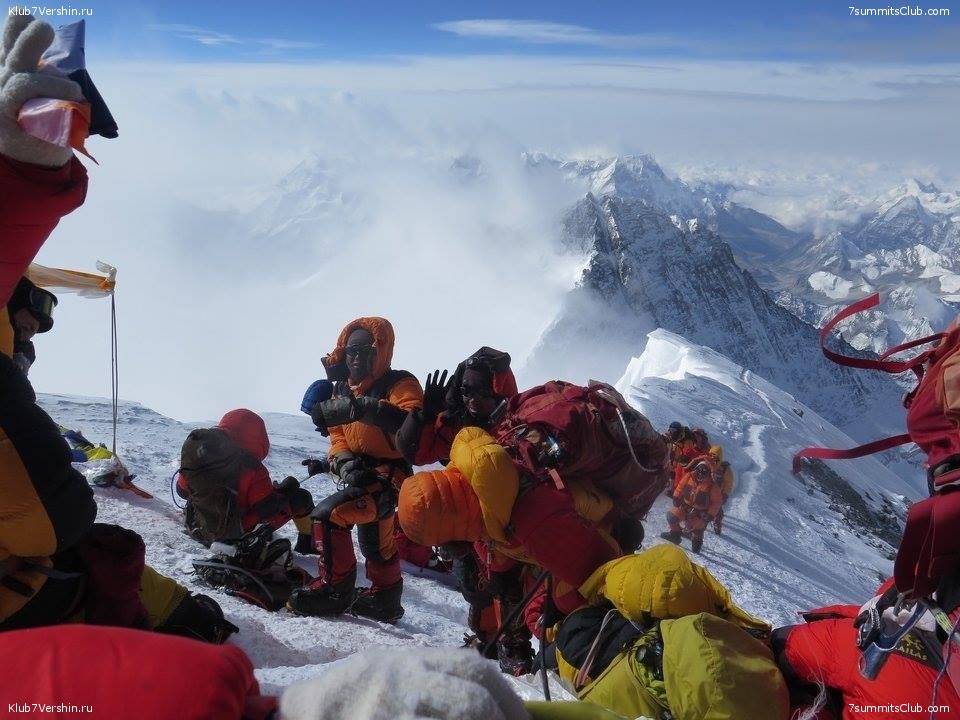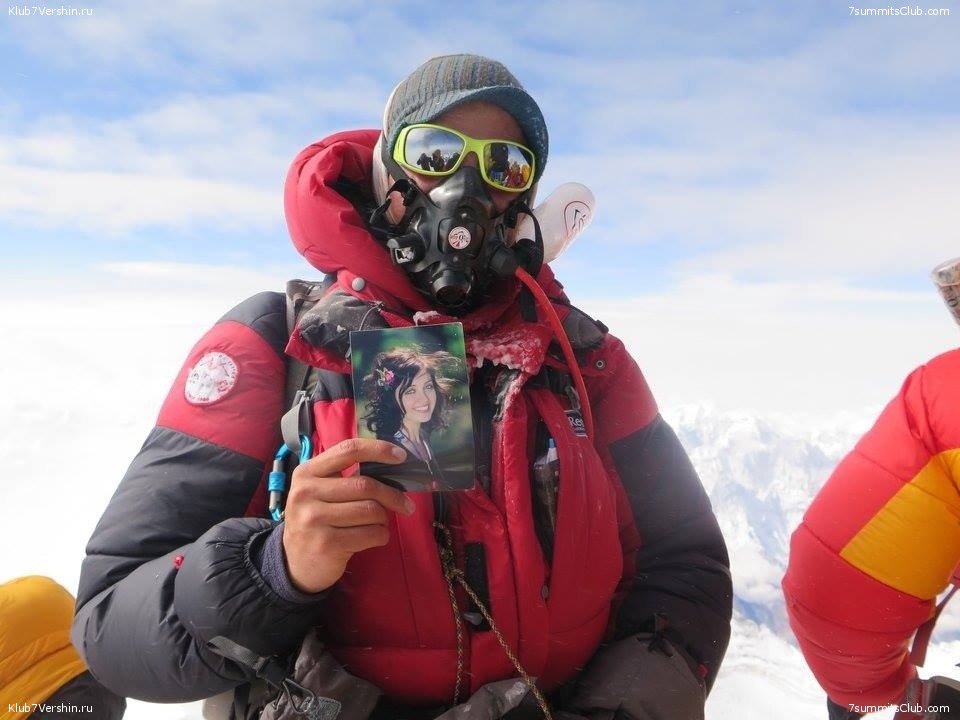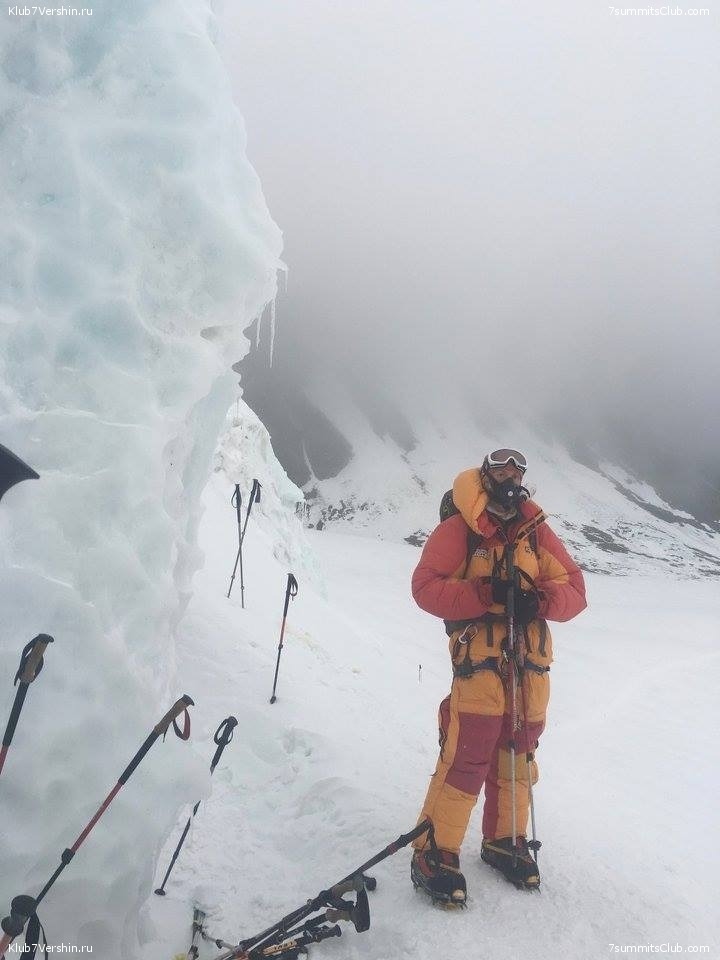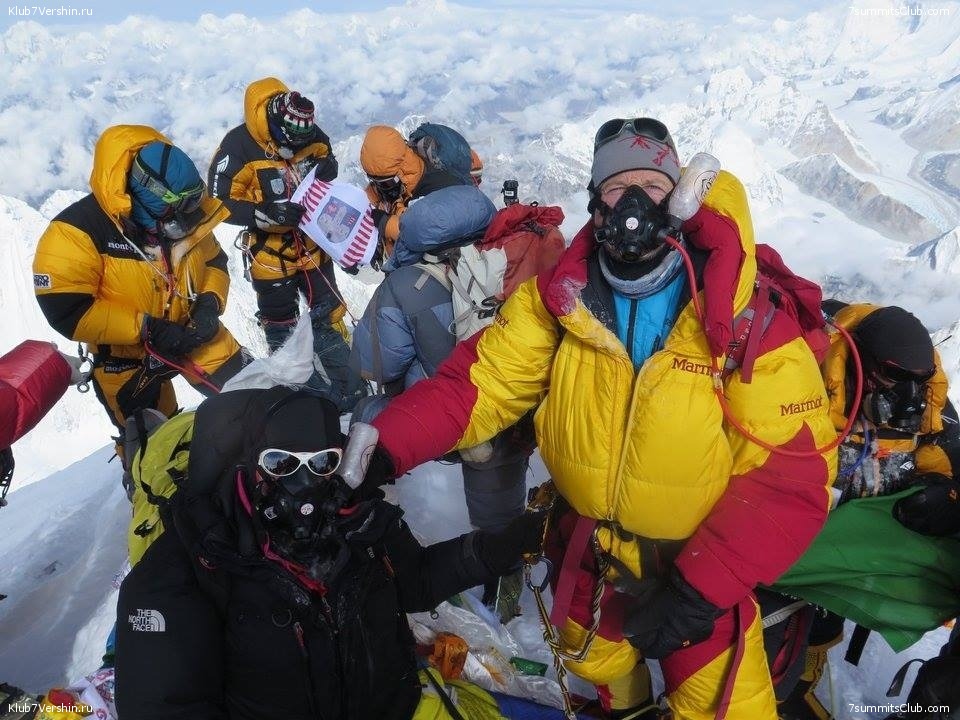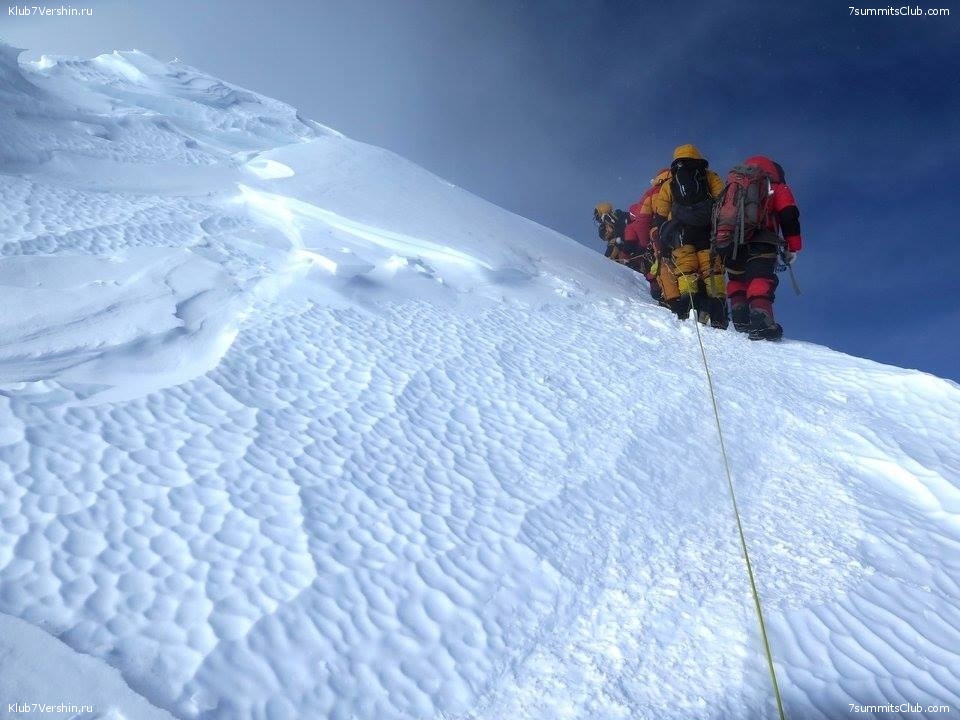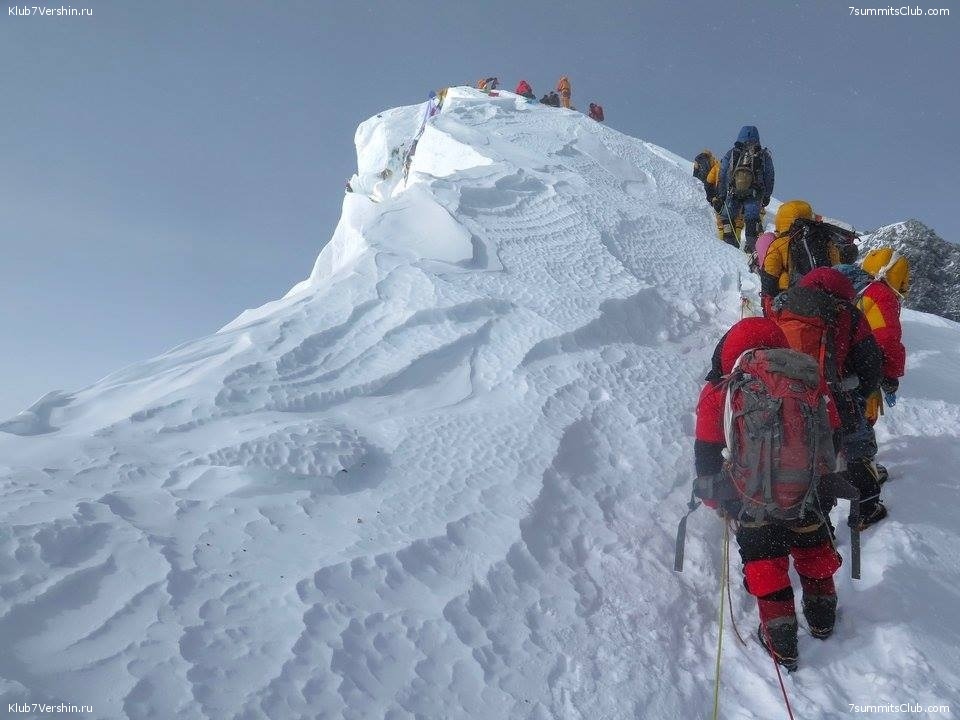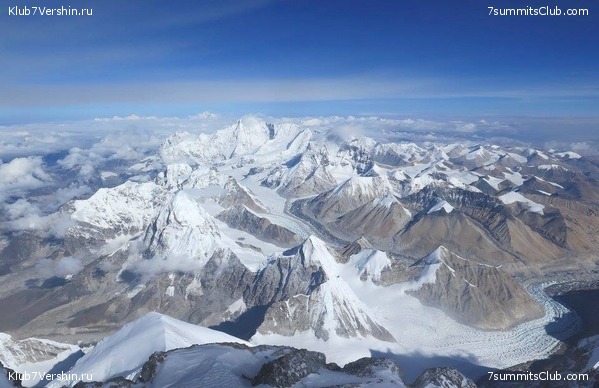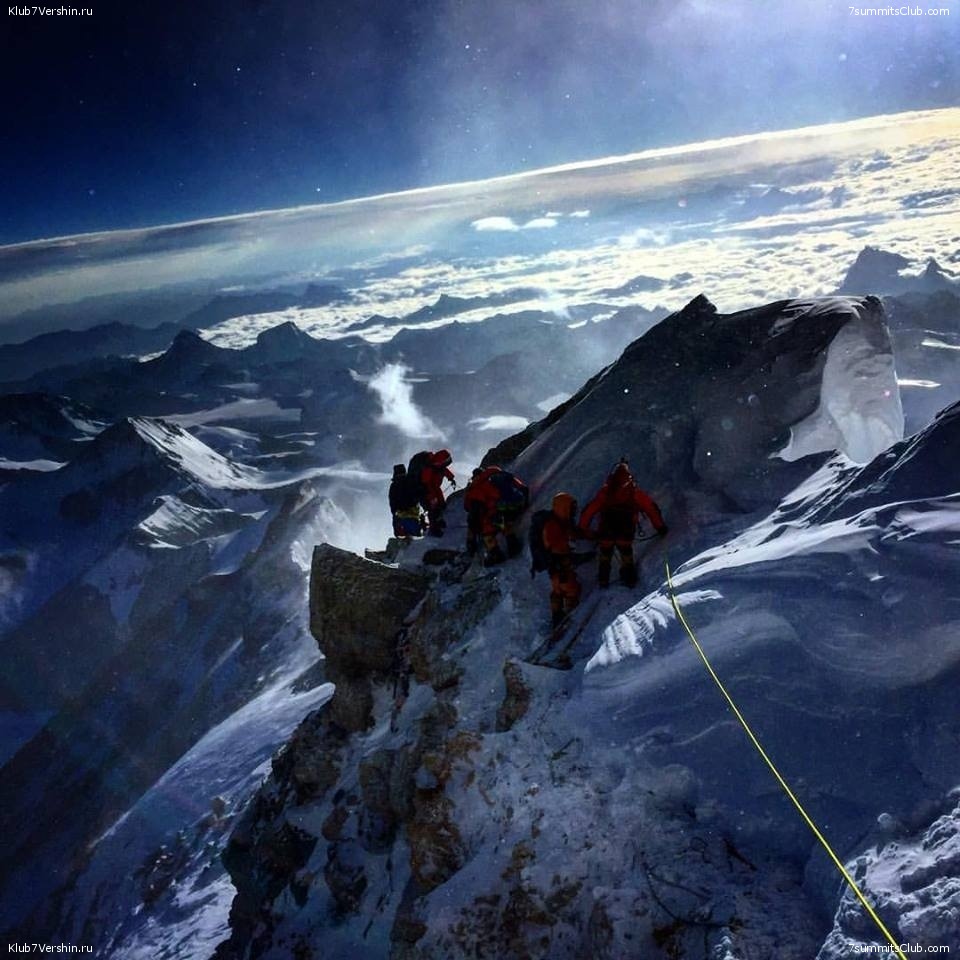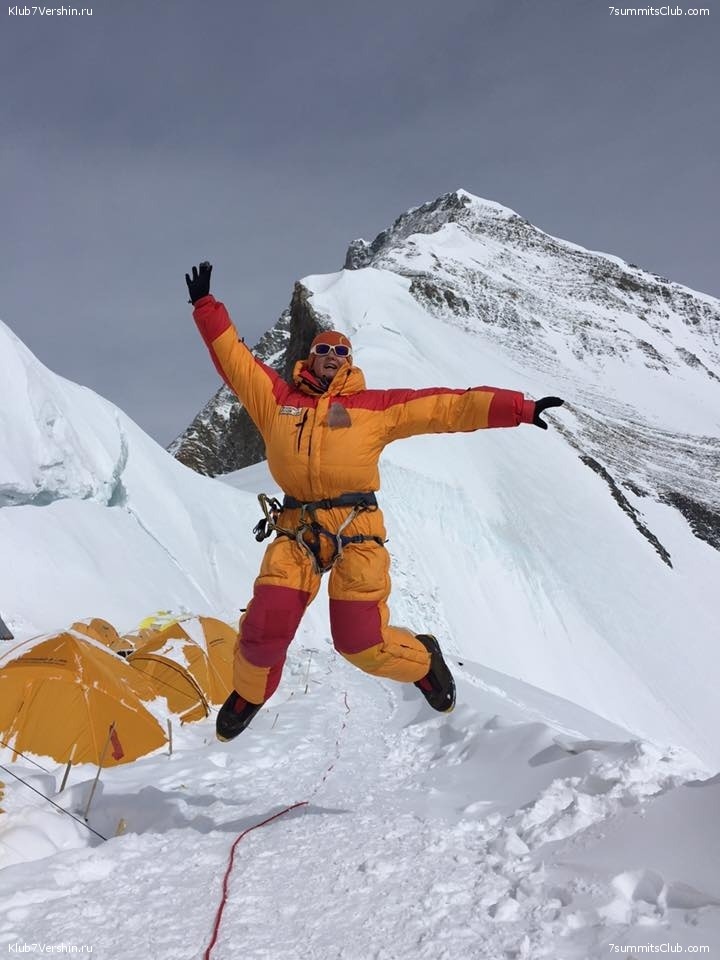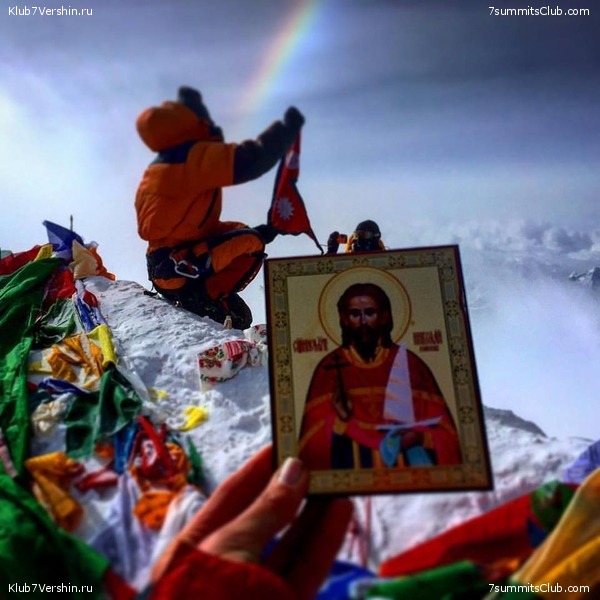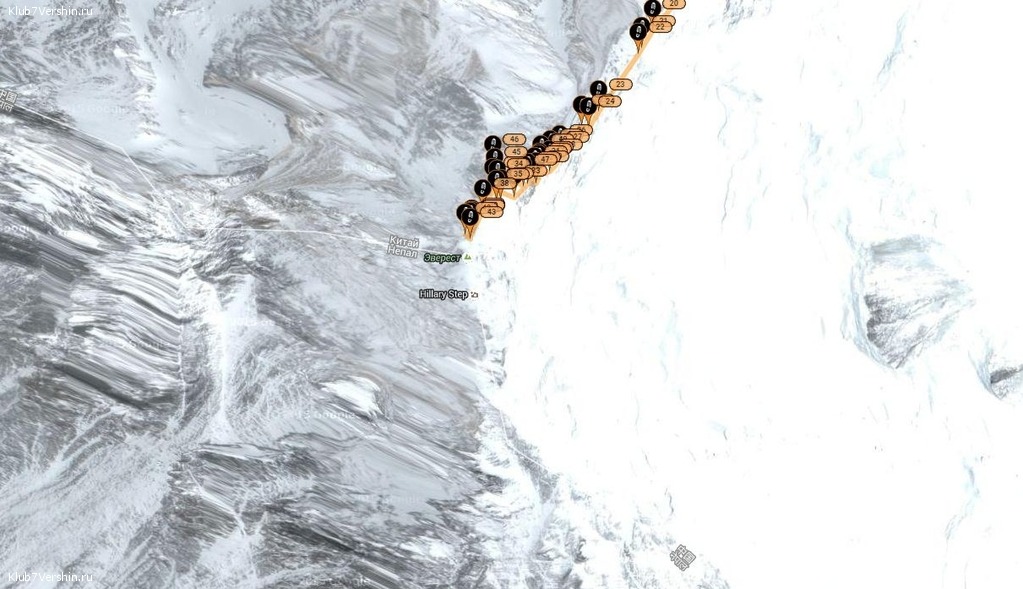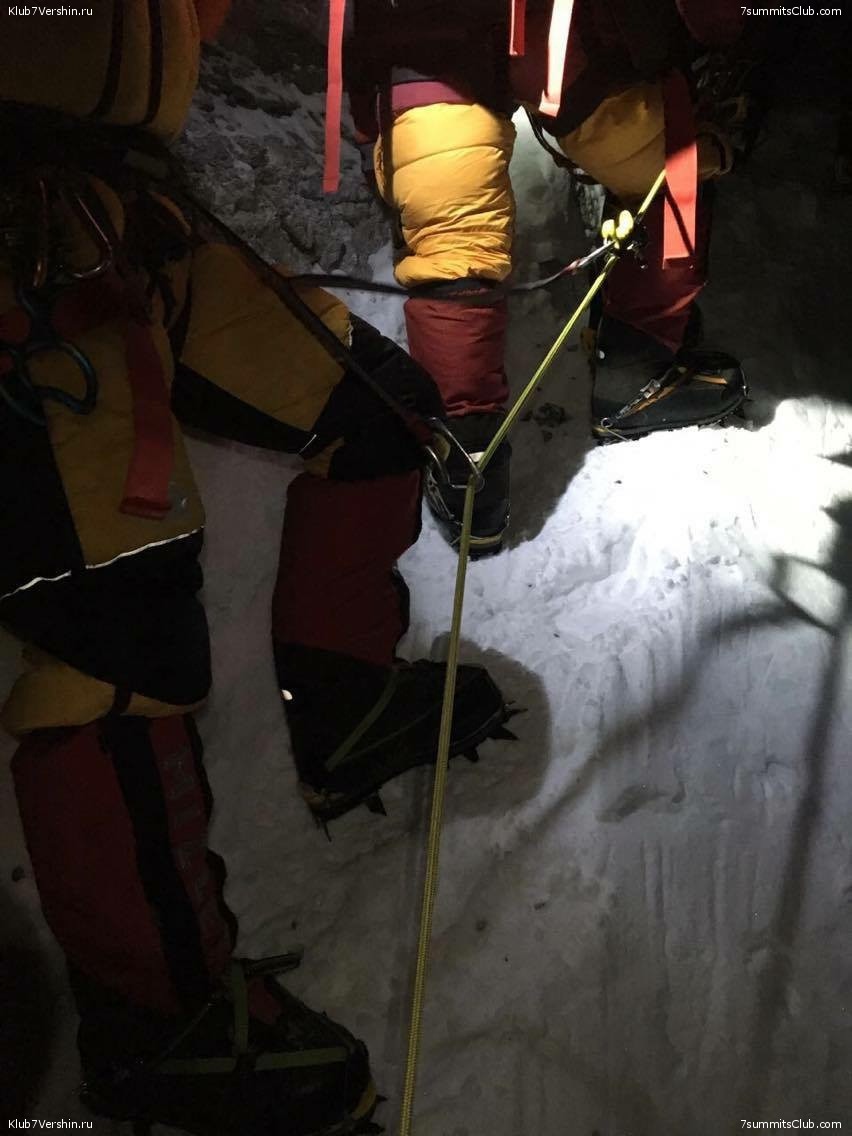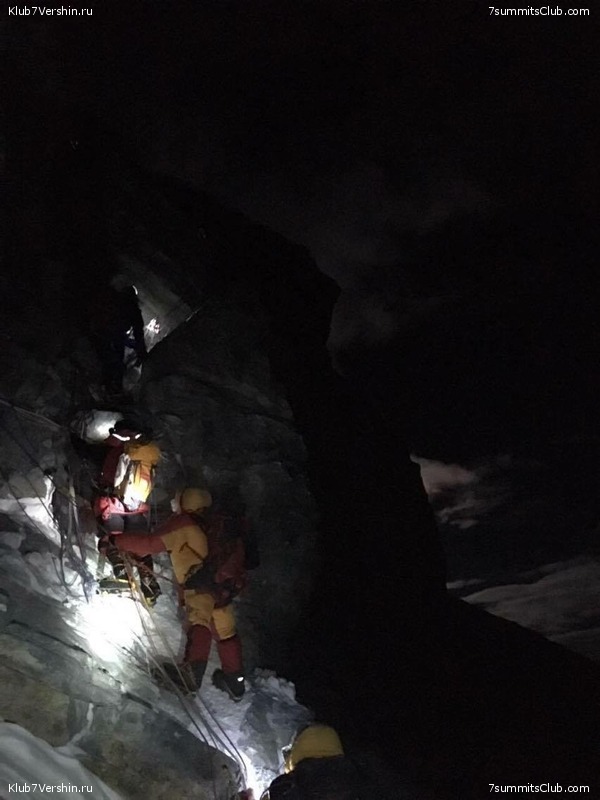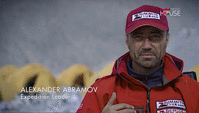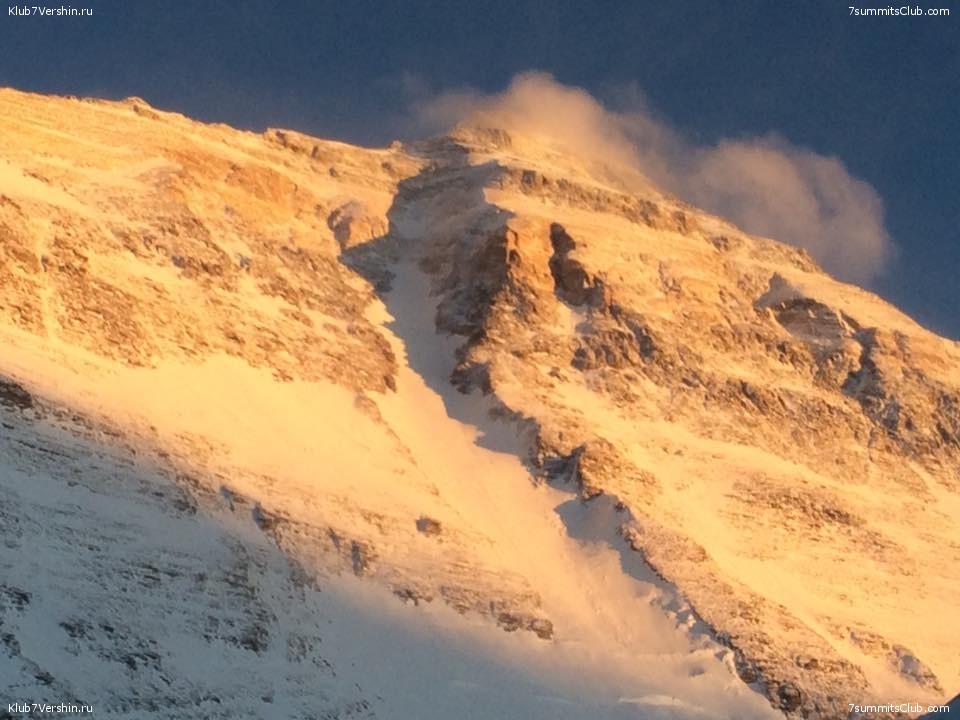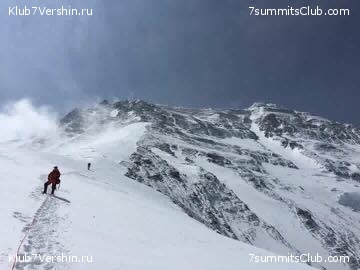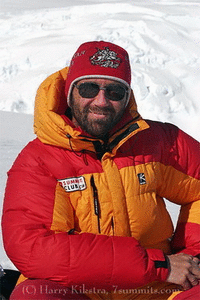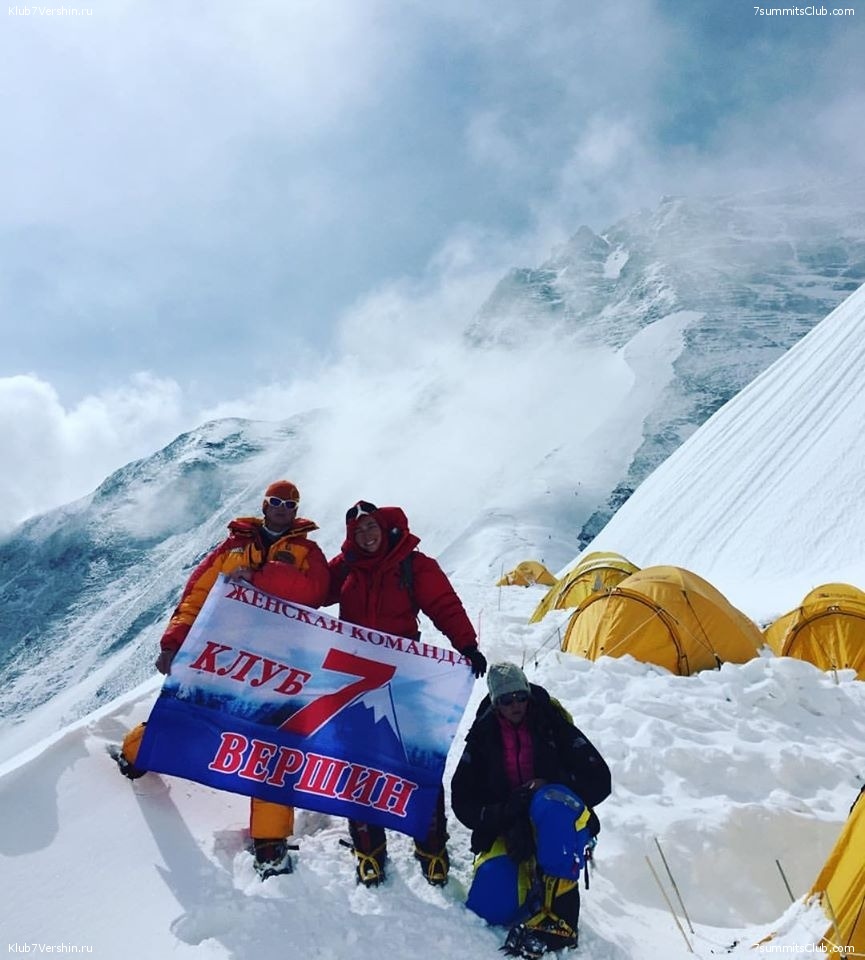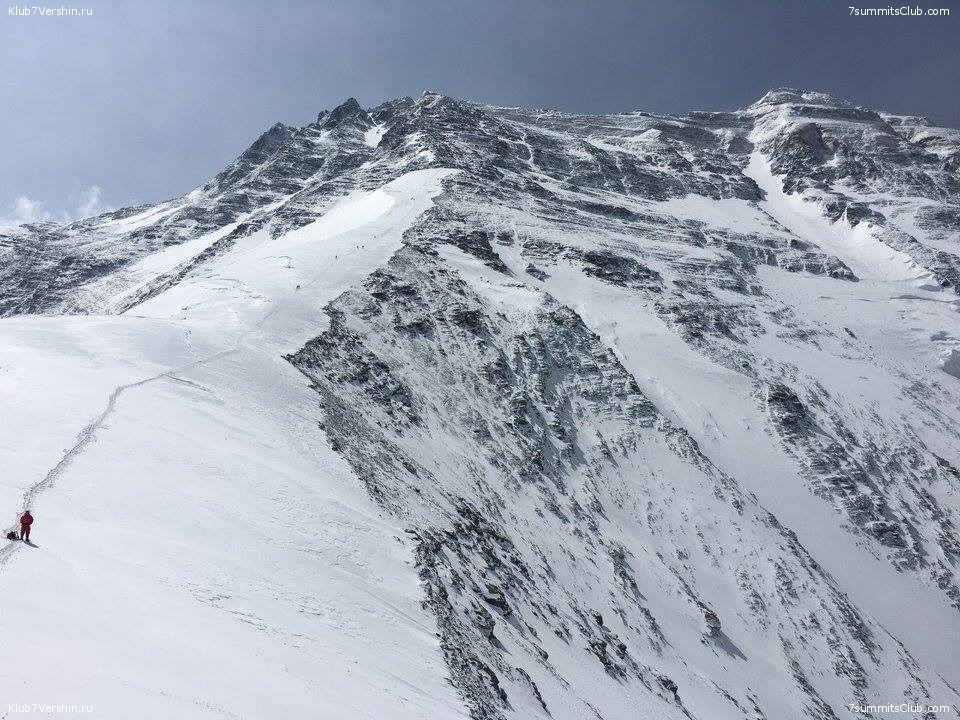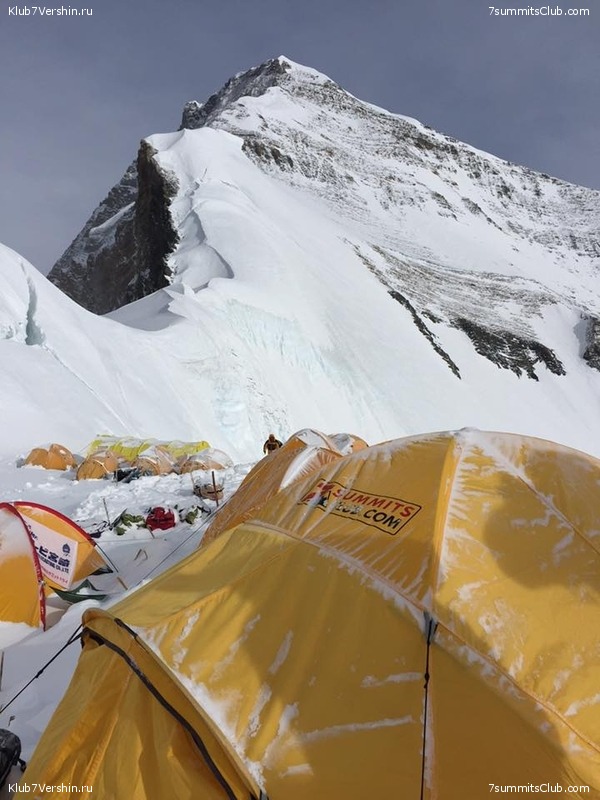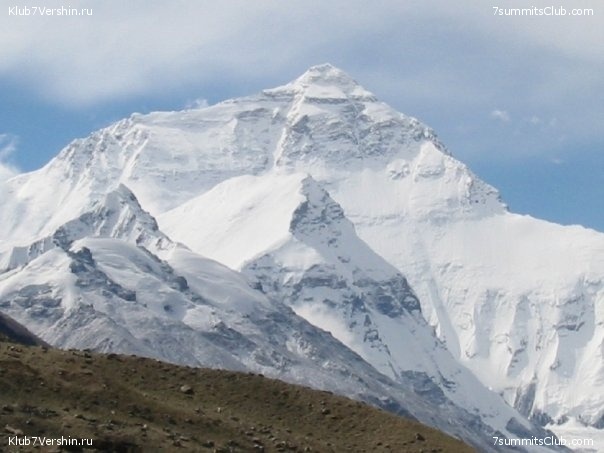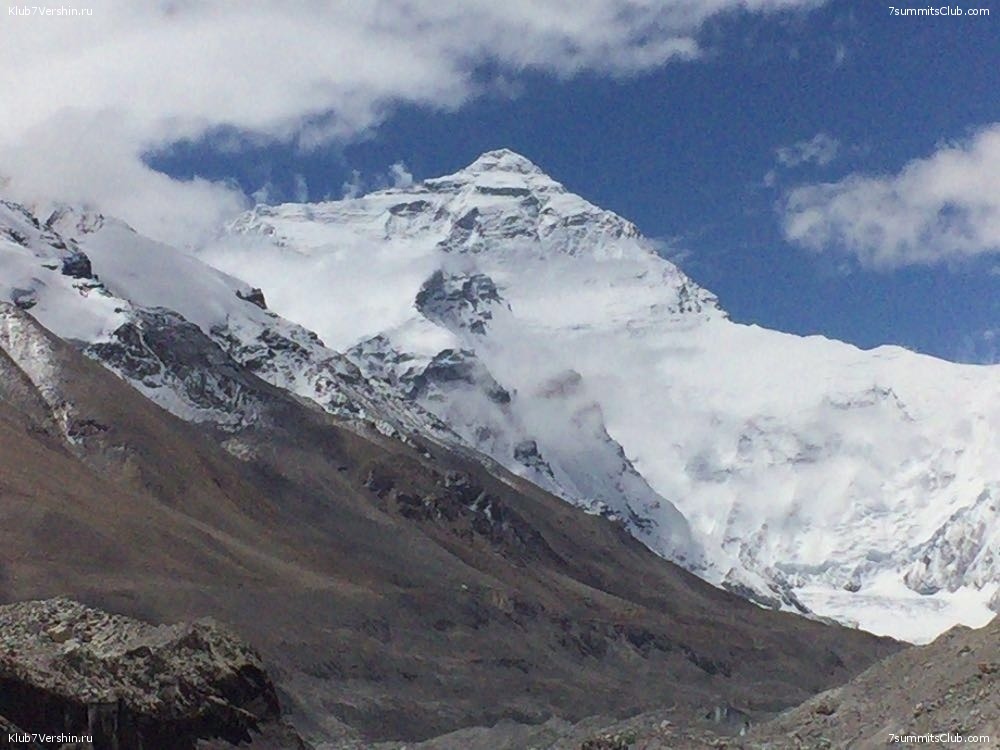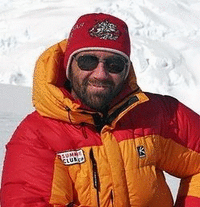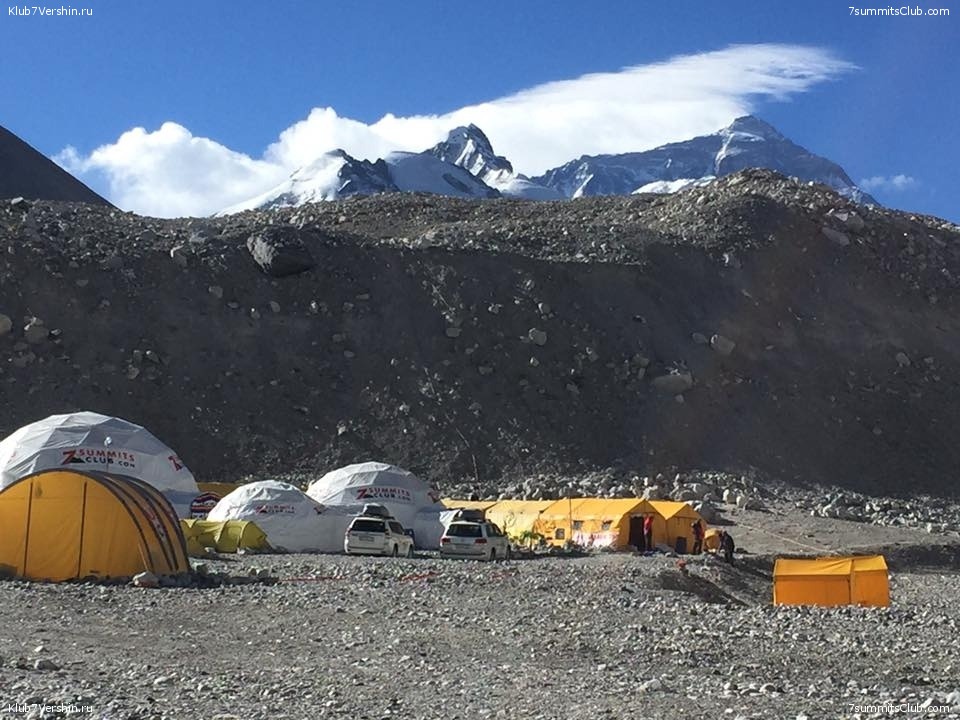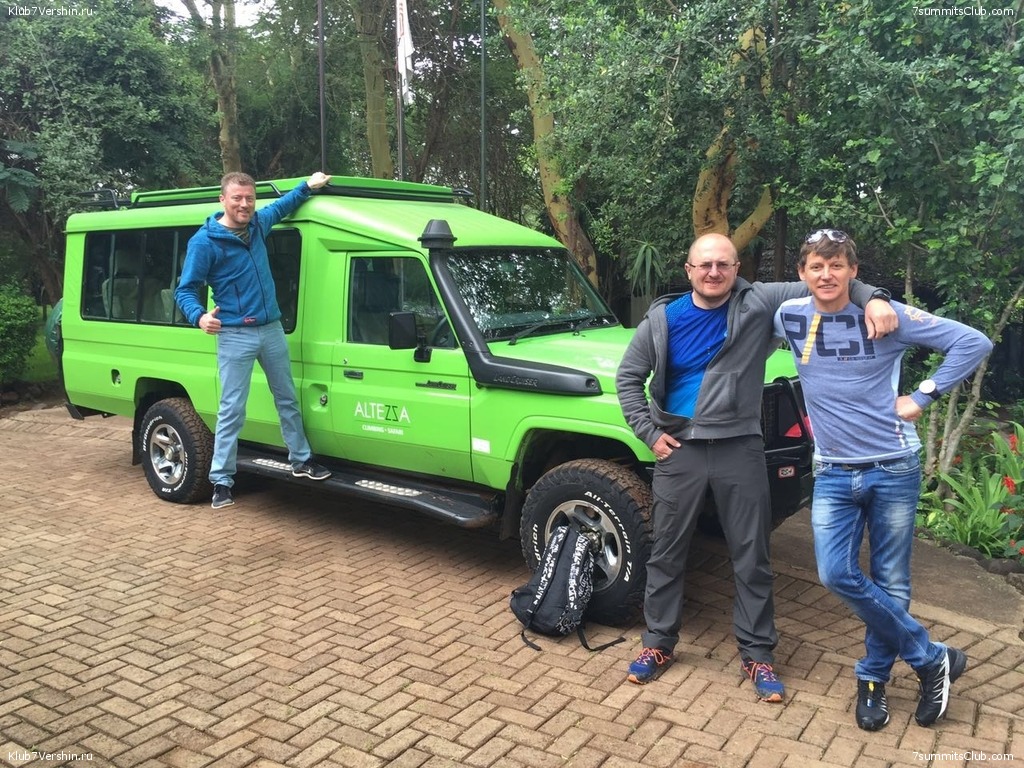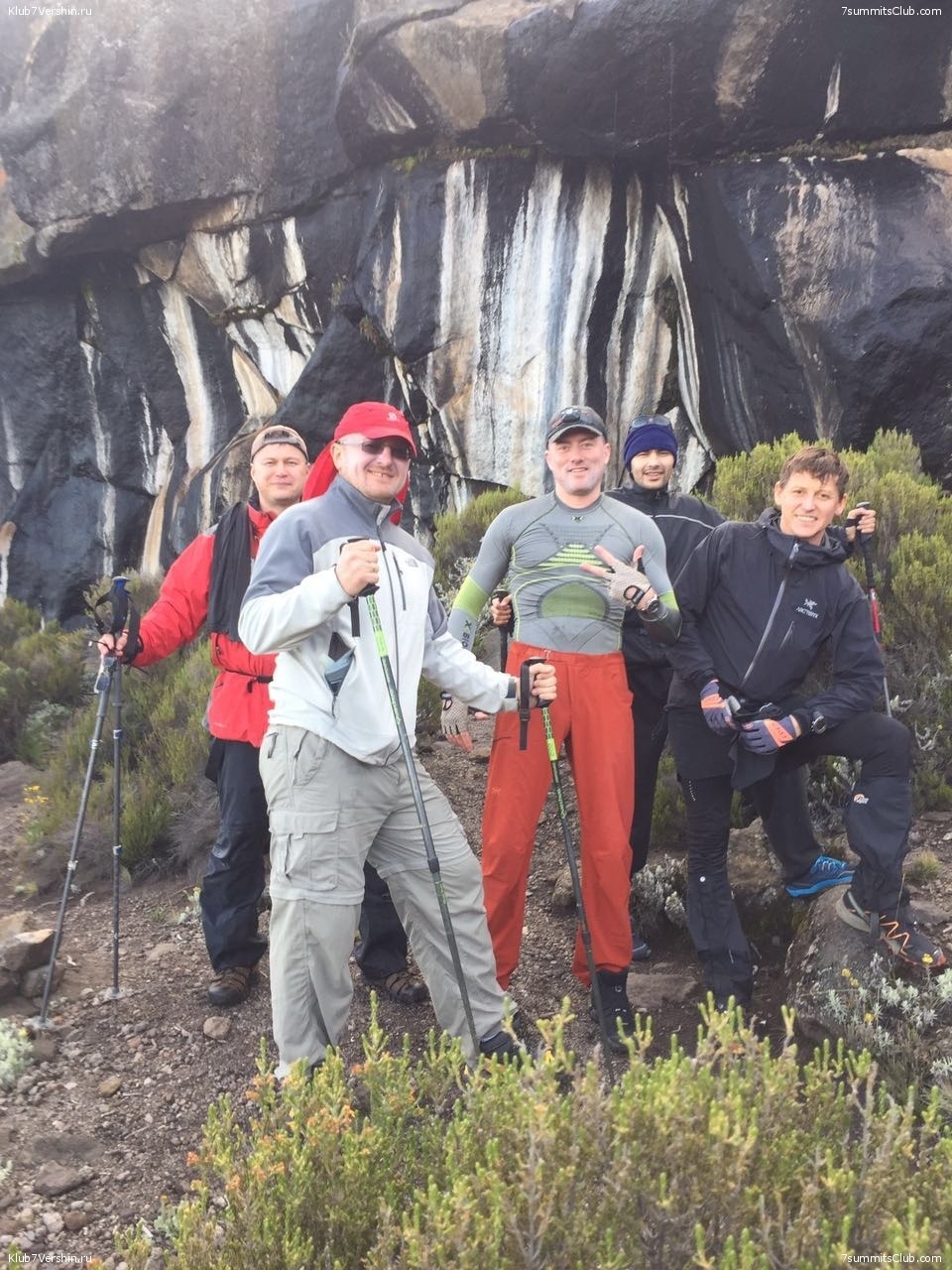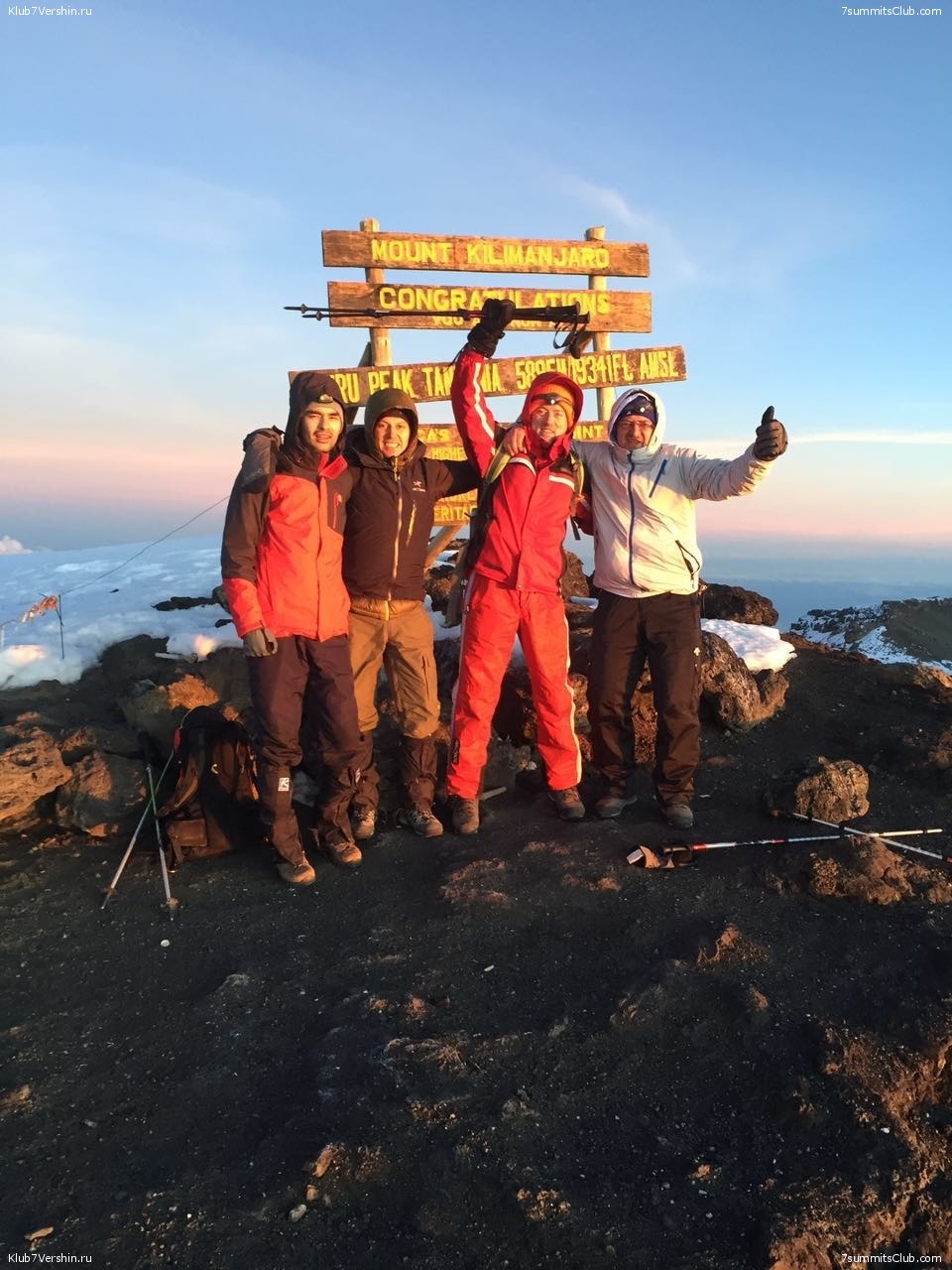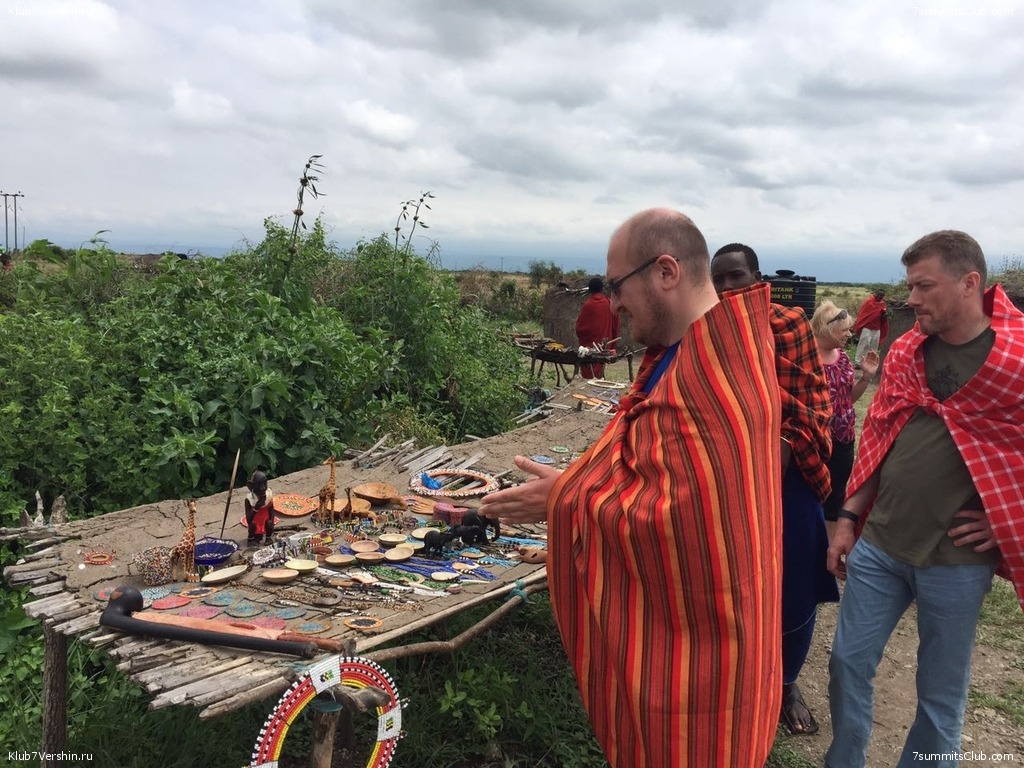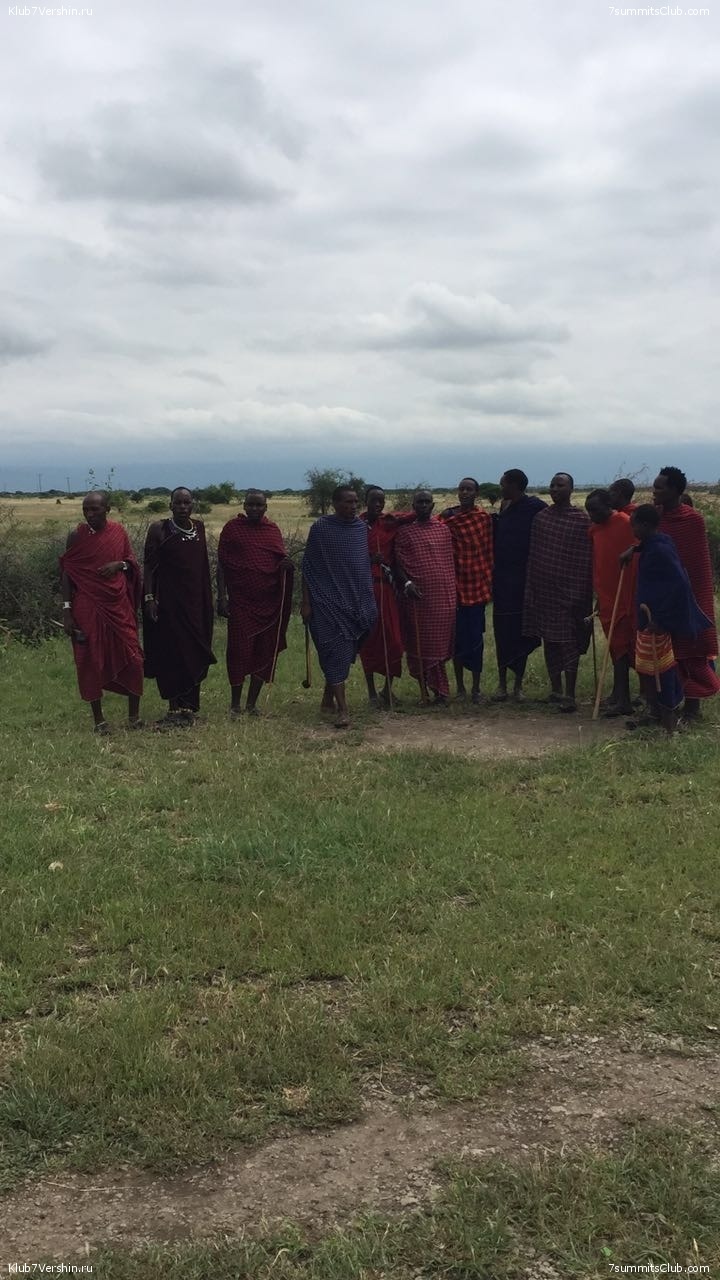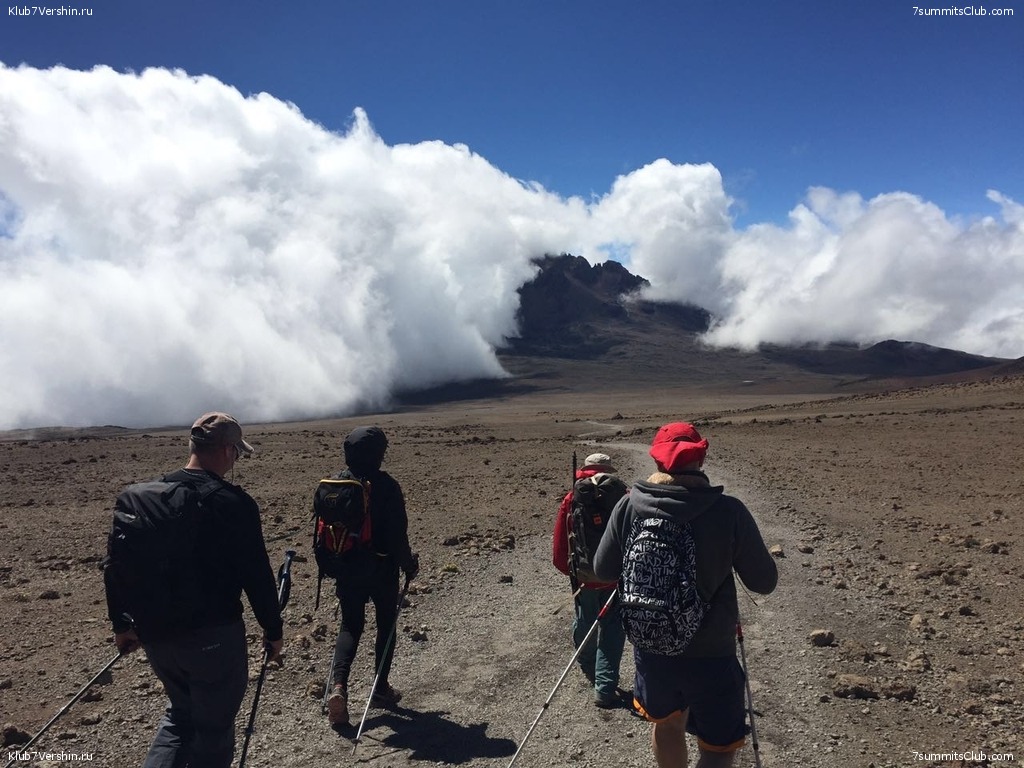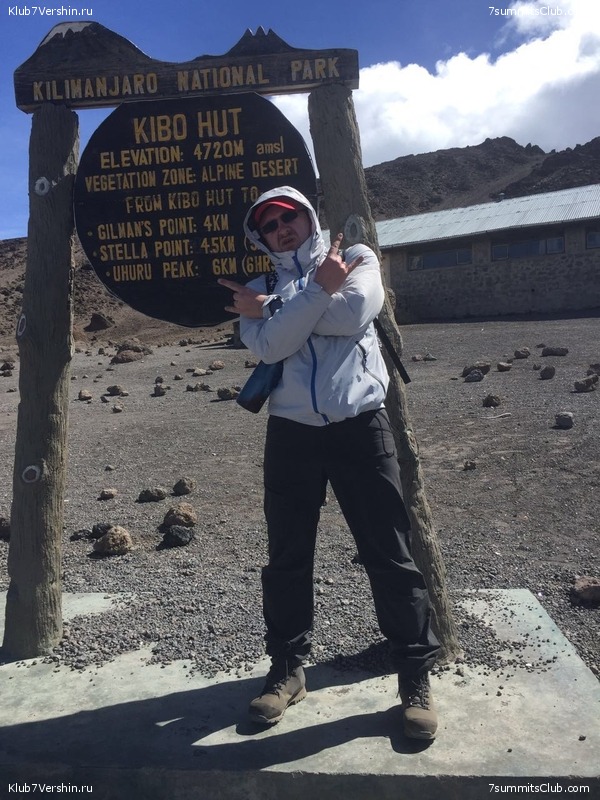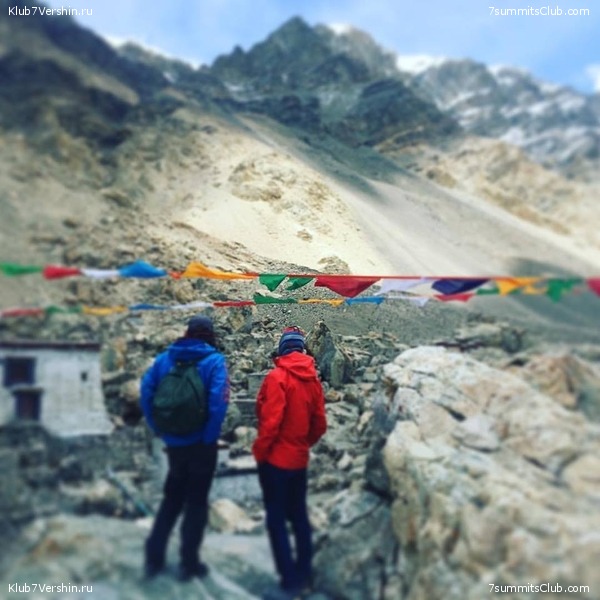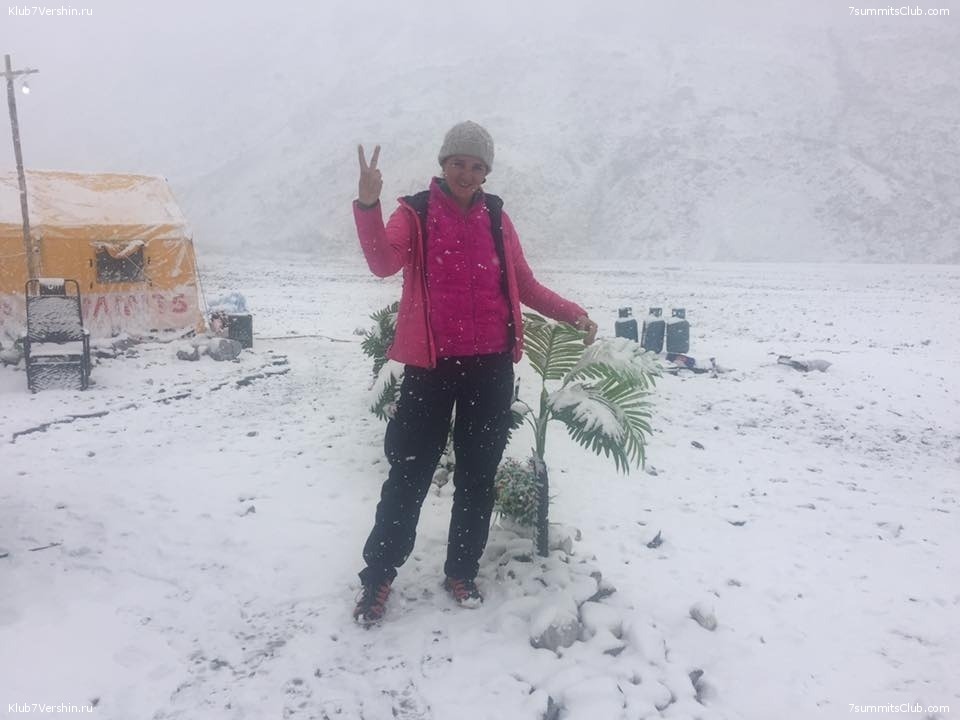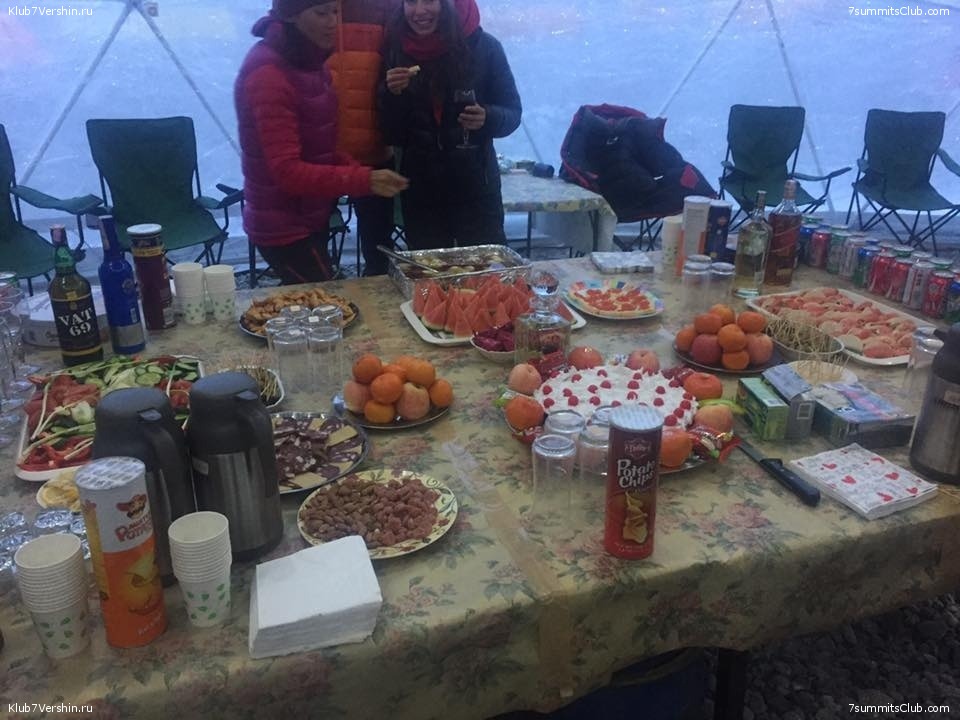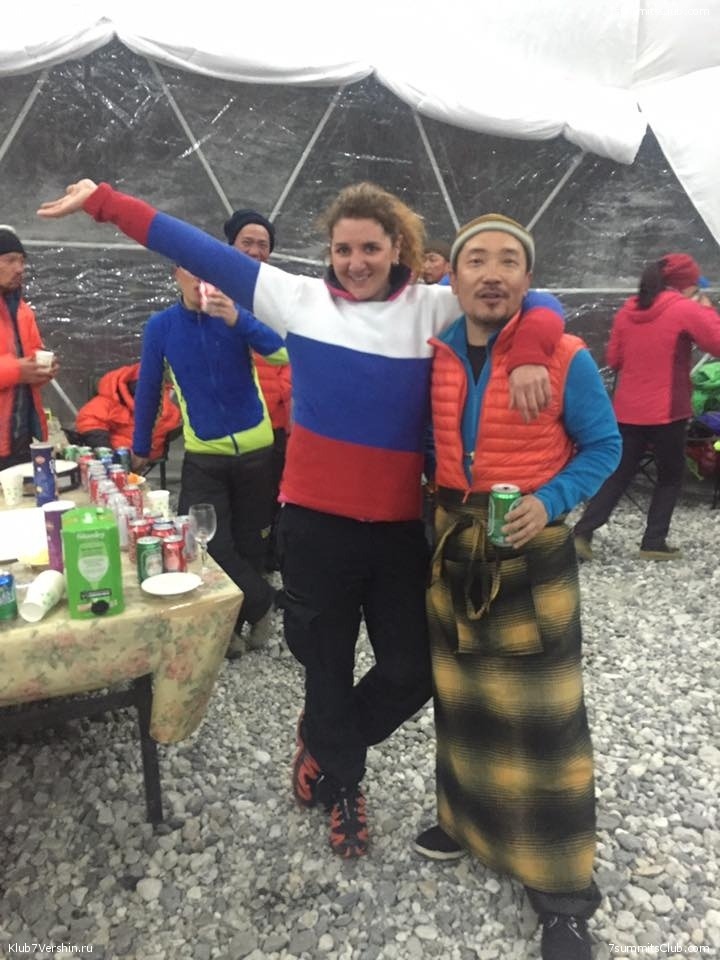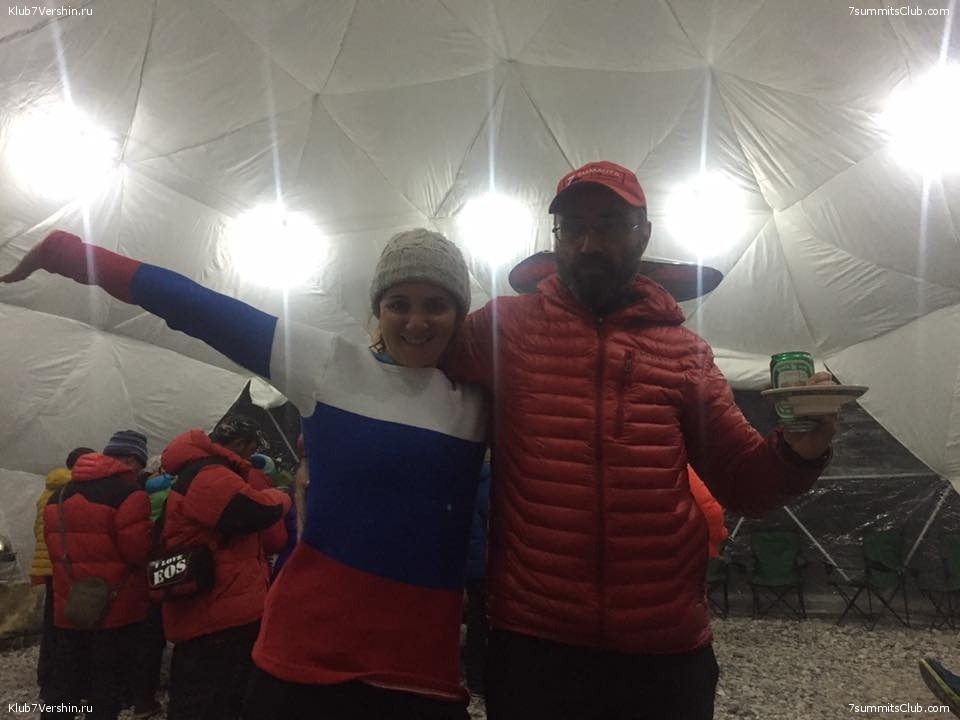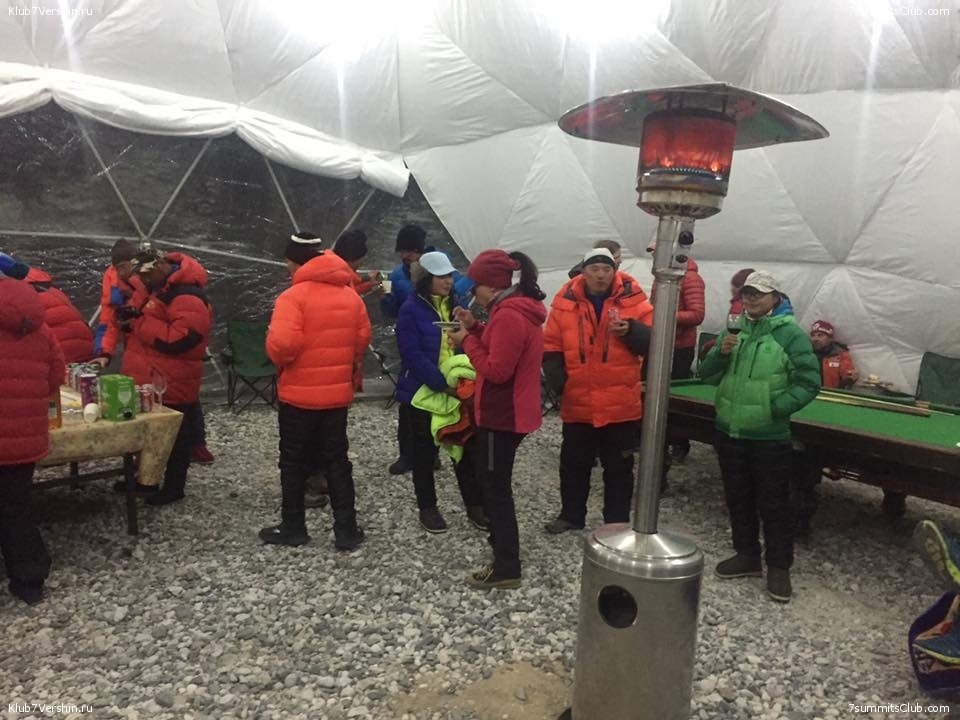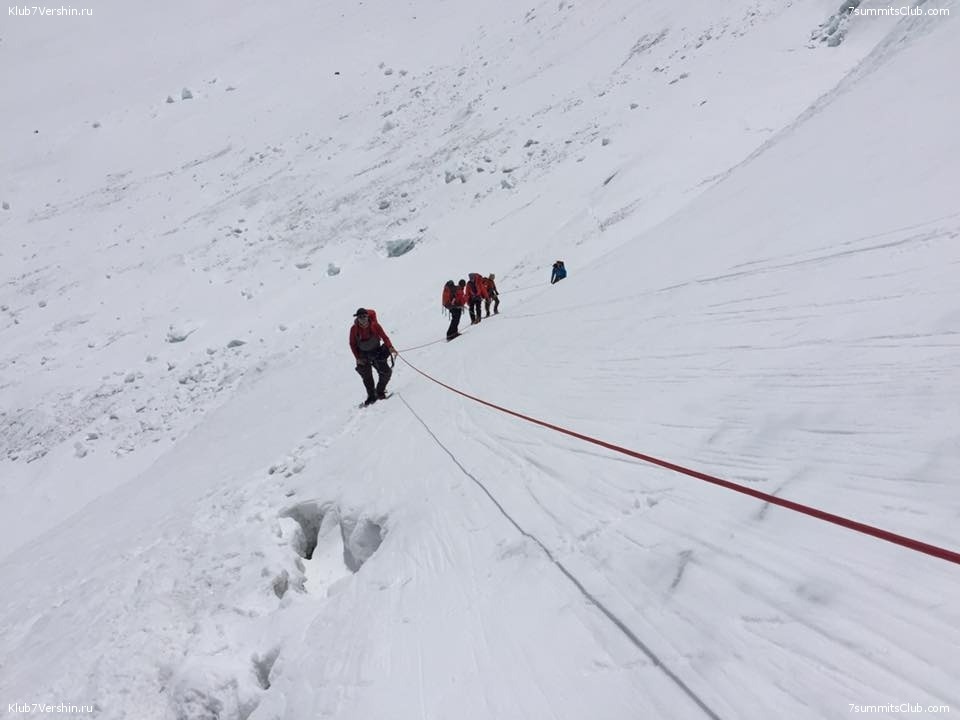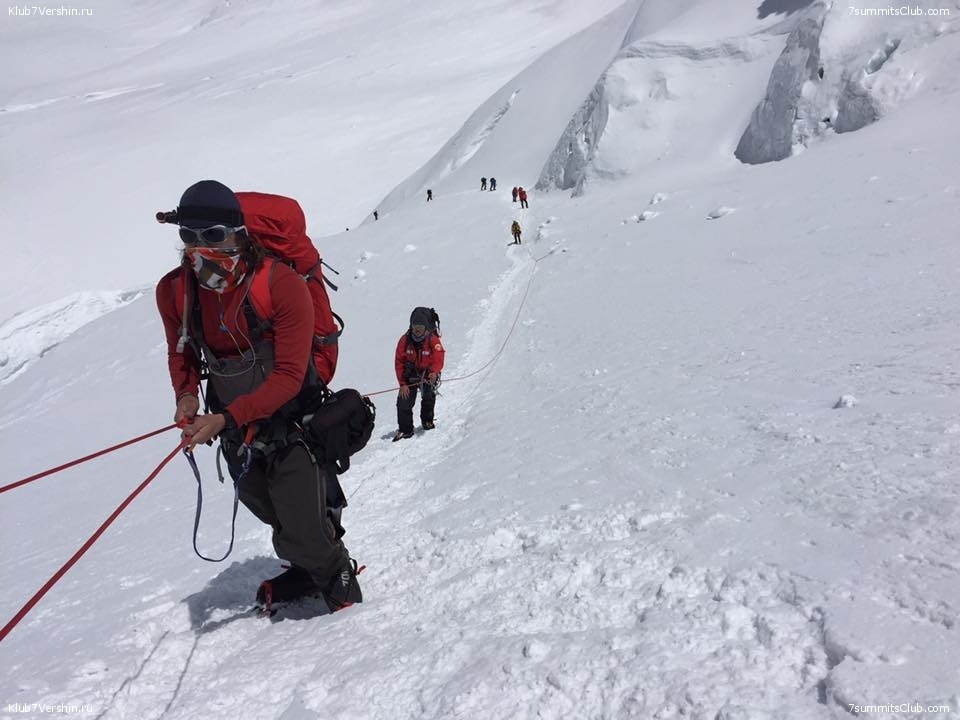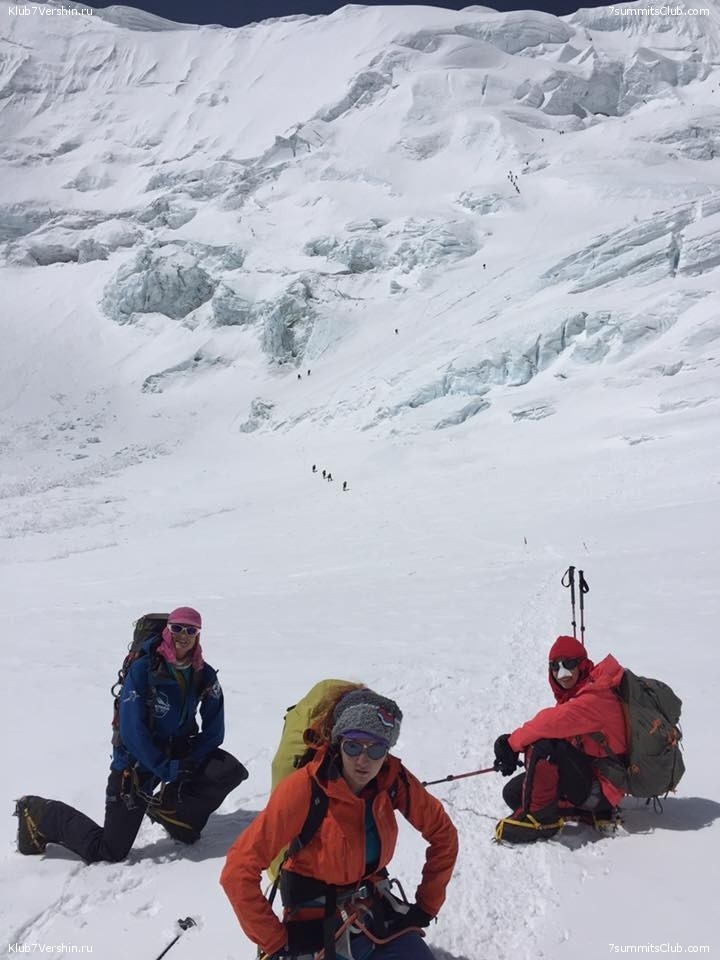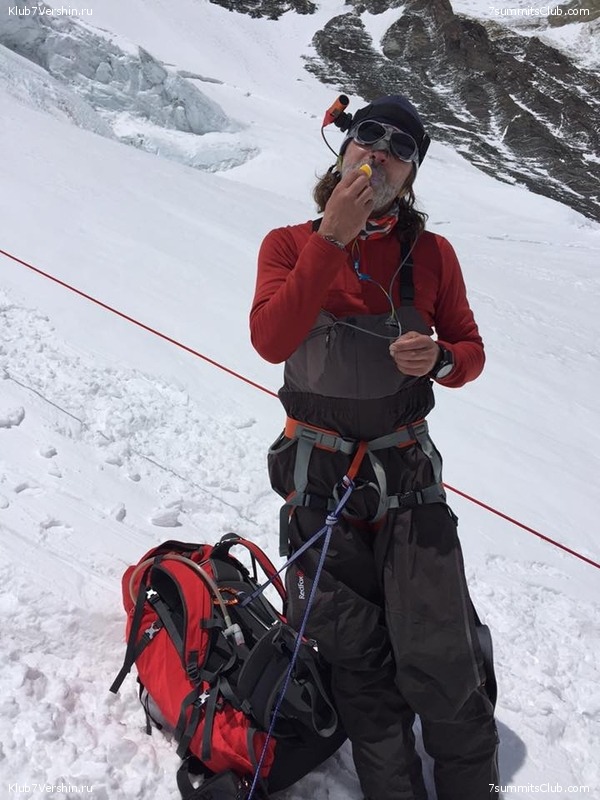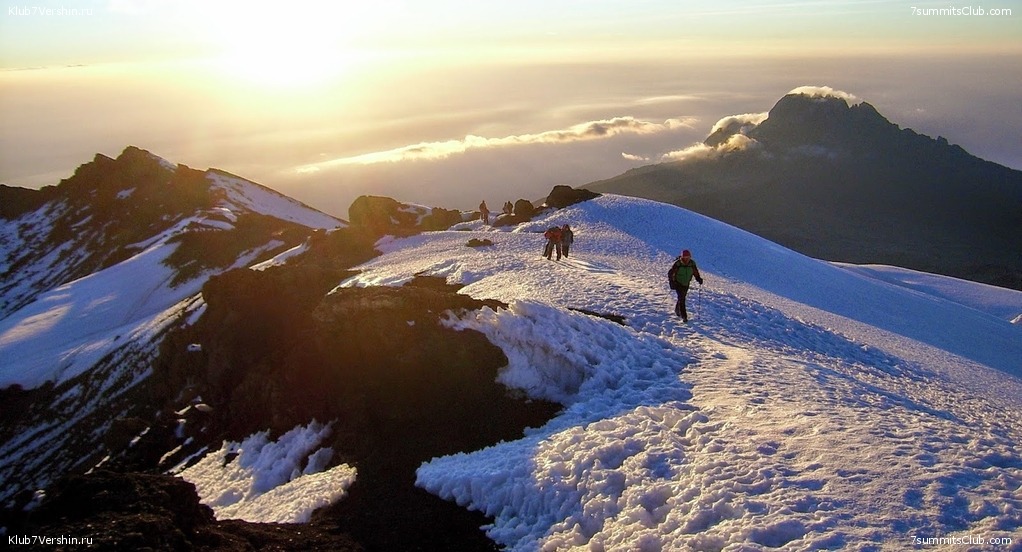"7 Summits + 2 Poles" project news - Page 128
Tatiana Yalovchak Ukrainian summiter of Mount Everest
Everest.
Tatiana Yalovchak climbed Mount Everest in the team of the 7 Summits Club. She reached the summit with one of the symbols of Ukraine – an embroidered towel. "I am happy that I brought the rushnyk with me. Our symbol of strength, ...
Tatiana Yalovchak climbed Mount Everest in the team of the 7 Summits Club. She reached the summit with one of the symbols of Ukraine – an embroidered towel.
"I am happy that I brought the rushnyk with me. Our symbol of strength, goodness, beauty and peace And a part of my soul with him. Hope for prosperity and peace in Ukraine"
Oleg Pimenovs Everest 2016 report
Everest.
Oleg Pimenov climbed Mount Everest as a member of the first group of the 7 Summits Club. He published a collection of photos on Facebook, that we remade in the report ... … We decided that the ...
Oleg Pimenov climbed Mount Everest as a member of the first group of the 7 Summits Club. He published a collection of photos on Facebook, that we remade in the report ...
…
We decided that the best window will be on May 20-21
15th May we come in midlle camp. Everest was clean
On the morning of the 16th Everest began to smoke. Getting worse...)
16th of May. In the advanced base camp (ABC) there were classes on the basics of survival. The technical part of the oxygen equipment and work with it
In the palm there is your life. Regulator. Wear near your heart!
May 17th the familiar path to the saddle of Mount Everest to 7000m. Ahead - a string of Chinese expedition. Ropes on top yet not fixed. All hopes for Chinese
North Col
On the morning of May 18åð the Chinese have moved to the top of ...
We go after (for the Chinese)
Centered under stones there is our advanced base camp – yellow spots
5 and a half hours, it took the way to the camp 7,700. Without oxygen it would be all 7-8. Someone put in a poor tent
Here I am at home. 7700m. Behind, our goal looms
May 19th morning Sherpas moved to put the last camp. We have further 5 hours of relaxation
I admire climbers by the window
It blows, however. Abramov said that the weather was perfect. Although sometimes difficult to resist
Traces of the past
That last camp 8300. The summit meets with flags
Everyday life above the clouds. All a bit nervous
The start is scheduled for an hour in the morning on 20 May. We skip ahead only Chinese. They go out at 11 pm. Breakfast
Half an hour later we reached the crest. The first stage of 8564m passed in the night, not noticed, green shoes covered with snow. IPhone had made 2 photos of second step and had cold.
View of the third step, a pyramid and Chinese
Stylish design
Go along the ridge. Abramov said that it is just a walk.
The oxygen plan was to climb with two cylinders, and one for the descent. One cylinder at maximum flow gives life for 4 hours. Before the third step we are changing the first balloon
The third stage and slow Chinese
We have passed the third step, 8710m. In front of the pyramid. With Irena Kharazova
A snowy field in front of the pyramid. With Vladimir Kotlyar and Roman Reutov
I go on the field ...
Fixed or non-fixed ropes
My Sherpa Mingma, he was on Everest 3 times from both sides
On the Everest better to climb at night. Pyramid
Sometimes it blows. A bit....
With acrophobia it will be hard on Everest. Pyramid, 70 meters from the top.
What's the first thing you need to do at the top? Smoke break (Sherpas)
So how it looks. 8830
Group photo. 8848m - with Irena Kharazova
In the background, a group of climbers is coming from Nepal. 8848m
Guides, video operator and my friend makes a proposal to his girlfriend. 8848m - Vladimir Kotlyar
Abramov think, in what direction to go down, Tibet or Nepal. Lyudmila Korobeshko and Alexander Abramov
Like the portrait. 8848m
No higher point is on the planet. - Vladimir Kotlyar
We rest under the roof - with Alexander Abramov and Ludmila Korobeshko
Everest crest
Fixed rope on the crest
Changze, the northern peak of Everest.7680m
A short rest on the descent. No sleep here - the greatest risk not to wake up
Saddle or 4th camp on the horizon
Yet we have to descend from the saddle. To stay alive and healthy, you need to go down to the 4 day go up to 8848 down to 6410m. If the ascent took 6.5 hours, descent – 11! Without food and water - with Vladimir Kotlyar, Alexander Abramov and Ludmila Korobeshko
At the bottom of the North Col. By tradition, the climbers on Everest left here poles - Ludmila Korobeshko
Well, 18 hours later I'm in advanced base camp
May 21th - it is too early to relax to us . There was a run 23 km on the glacier to the base camp. Savings oxygen cylinder on top to be my sail - with Vlad Moroz
SUMMIT! Group of Andrey Berezin climbed to the top of Mount Elbrus! Congratulations!
Elbrus.
Hello! It is Andrei Berezin, the 7 Summits Club guide in the Elbrus region. So, today there are news from Elbrus. summit! Today, a group of 7 Summits Club climbed to the Western summit of Elbrus. The 7 Summits Club congratulates the ...
Hello! It is Andrei Berezin, the 7 Summits Club guide in the Elbrus region. So, today there are news from Elbrus. summit! Today, a group of 7 Summits Club climbed to the Western summit of Elbrus. The 7 Summits Club congratulates the couple of Tomilins climbed the highest point of Europe! Today it was a very busy day. We left at 3:30 am, and at the top we were in 11:30, went down to the refuge at about 3 pm. Now we are already in Terskol, all are resting after the climb. And about he weather. The forecast was bad, but the day was sunny and calm. We went back all tanned and happy. Best regards! Andrey Berezin from Elbrus.
The 7 Summits Club: We congratulate Igor Demyanenko with the completion of the "Seven Summits" program!
Everest.
May 20th , Igor reached the summit of Everest. This is the best way to complete the epic of ascents on the highest peaks of all continents. And great when there is your spouse next to you. By the way, we congratulate her. Not ...
May 20th , Igor reached the summit of Everest. This is the best way to complete the epic of ascents on the highest peaks of all continents.
And great when there is your spouse next to you. By the way, we congratulate her. Not only to the achievement of her husband. Jamila Murtazina on May 18th climbed to the North Col, setting his personal altitude record. Congratulations - congratulations! Have new goals and new victories!
Igor’s photos from the expedition on Everest:
Alexander Abramov from the base camp on the results of the Everest expedition of the 7 Summits Club
Everest.
Now the entire team of 7 Summits Club successfully descended from the mountains and now is preparing packs. Tomorrow, on the 25th we leave by cars in Shigatse and the day after (May 26) we plan on the flight from Lhasa to ...
Now the entire team of 7 Summits Club successfully descended from the mountains and now is preparing packs.
Tomorrow, on the 25th we leave by cars in Shigatse and the day after (May 26) we plan on the flight from Lhasa to Kathmandu.
And now for an hour to relax and to take stock:
27 people on the top of Mount Everest!
15 members and guides + 12 Sherpas.
Several Russian and World Records! About its - below ...
Decisions on the graphics were difficult this year. Weather did not allow to take unequivocal decisions. Always it was snowing and it seemed that the monsoon has arrived. But the state of the route for the ascent was terrific. All the rocky areas and sloping rock slabs were covered with a thick layer of snow and firn. This allowed the speed of movement along the entire route to be the fastest.
And, nevertheless, we note that the long experience of leadership helped us to choose the best two days for climbing. That led to such a great success!
Summiters of May 20:
Abramov Alexander (7 times)
Korobeshko Lyudmila (3 times) woman,
Kharazova Irena woman,
Moroz Vladislav,
Reutov Roman,
Pimenov Oleg,
Kotlyar Vladimir (all – Russia),
and a woman Lakpa Sherpa, USA - Nepal (7th time at the top of Mount Everest)
plus 7 Sherpas.
Summiters on May 21:
Hannah Noel (8 times),
Hannah Lynn (2 times), woman both – Northern Ireland,
Sergey Larin (5 times),
Provalov Denis (2 times),
Demyanenko Igor (Russia),
Kochanski Janusz (Poland),
Yalovchak Tatiana, woman (Ukraine),
Plus 5 Sherpas.
We have once again proved that the 7 Summits Club team was not only the biggest and well secured on the North side of Everest, but also the most experienced and most successful. 15 of the 16 members of the expedition reached the summit. One participant climbed up only to 8500 m, for health reasons.
And most importantly, that all are alive and healthy, cheerful and happy, and all remained friends.
The leader of the 14th expedition on Everest of the 7 Summits Club
Alexander Abramov
Record achievements of the expedition:
** Lhakpa Sherpa - the first woman of the 7th seven times ascended Mount Everest.
Alexander Abramov and Ludmila Korobeshko - the first married couple, three times to climb Mount Everest.
Noel and Lynn Hannah - the first married couple to climb Everest by two routes.
Ludmila Korobeshko – new record of Russia and Europe in the number of ascents on Mount Everest among women.
Alexander Abramov - the first Russian in the 7th time to climb Mount Everest.
World record holder Ludmila Korobeshko about climbing Mount Everest
Everest.
May 20th, 2016, 8 a.m. Nepal time. The Flag of the 1st Russian women's Everest expedition raised above the highest peak of the planet. Two climber of our women's team were able to climb to the top - Ludmila Korobeshko and Irena ...
May 20th, 2016, 8 a.m. Nepal time. The Flag of the 1st Russian women's Everest expedition raised above the highest peak of the planet.
Two climber of our women's team were able to climb to the top - Ludmila Korobeshko and Irena Kharazova. Liana Chabdarova is not reached about 300 m vertically.
The last days before the assault she was on analgesics, overcoming back pain. On the night of the assault, it became clear that if the whole team will go at the pace of Liana, the successful achievement of the summit can be jeopardized. Liana was able to take a courageous decision not to delay the group and turn back from the ridge.
On the day of a successful assault on the top of May 20, all participants descended in the evening into the advanced base camp ABC at 6400.
May 21th the second group of 7 Summits Club climbed to the top - under the direction of Sergei Larin and Noel Hanna. Today, May 22th, after almost some rest all members descended to the base camp at 5200 (some people are still on the way and will come in an hour or two).
All members feel well. Tomorrow, May 23th – for celebration. May 24th, we hope to go in the direction of Lhasa and 26 May to fly to Kathmandu.
Space. We are at 8700 m, passed the third stage.
It is about an hour before the top.
The yellow-blue trousers - it is Irena Kharazova. She clearly knew that the Cosmos begins after the Second Step (a key part of the route) - here every man is for himself, no one can save ...
Only after passing the SecondStep and approaching the Third, she accidentally discovered with horror that is already more than an hour in space, cruel and merciless ...
The only thing she begged her Sherpa - in the event of her death, he did not leave her body there, among other bodies. So he will found the opportunity to bring the Sherpa team and to pull down her body.
Thank God - she is now healthy and very happy sitting in BC and enjoying life :)
As promised, we took at the top of Everest a small icon, which we gave Fedor Konyukhov, blessing our expedition in Moscow before leaving. More Fedor said that he will continue to pray for us. I think, also thanks to his prayers, we all went well.
By the way!
Luda became the record holder of Europe in the number of climbing Mount Everest!
She is also the only woman in the world twice to finish the program "Seven Summits".
And with Alexander Abramov - the first three times the couple ascended Mount Everest!
Information about climbing Everest by the second group of 7 Summits Club: All at the top!
Everest.
The second group is at the top: Dennis Provalov and Igor Demyanenko (at 6:20), Noel Hannah (at 6:45), Lynn Hannah, Janusz Kochanski, Sergej Larin and Tatiana Yalovchak! Successful descent! Members of the first ...
The second group is at the top:
Dennis Provalov and Igor Demyanenko (at 6:20),
Noel Hannah (at 6:45),
Lynn Hannah,
Janusz Kochanski,
Sergej Larin and Tatiana Yalovchak!
Successful descent!
Members of the first group safely descended to ABC camp yesterday and today go to base camp: Liana Chabdarova, Irena Hazarova, Oleg Pimenov, Vlad Moroz and Vladimir Kotlyar. Alexander Abramov and Ludmila Korobeshko will be waiting for the descent of the second group.
Roman Reutov stopped at the North Col for making pictures, and now he plans to descend to base camp ...
Information about summit of Everest of the first group of the 7 Summits Club
Everest.
Today at 5 a.m. on Nepal Lhakpa Sherpa reached the summit of Everest. This is her 7th summit (the world record for the women). By 8 a.m., the first group of 7 Summits Club expedition was standing on top of the world, as ...
Today at 5 a.m. on Nepal Lhakpa Sherpa reached the summit of Everest. This is her 7th summit (the world record for the women). By 8 a.m., the first group of 7 Summits Club expedition was standing on top of the world, as follows:
Alexander Abramov (7th time at the top)
Lyudmila Korobeshko (3rd time at the top)
Alex and Luda - the world's first couple three times climbed Mount Everest
Vladimir Kotlyar,
Roman Reutov,
Irena Kharazova,
Vlad Moroz,
Oleg Pimenov.
Liana Chabdarova was forced to stop climbing on 8500 due to a headache.
Now all go down in order to reach to the evening camp ABC at 6400 ...
Follow the progress of the second group on-line !!!
From Press release The 7 Summits Club Everest expedition:
Number of members - 26 people, including 16 people who plan to climb to the highest point - 8,848 meters. The climb will be carried out by the classical route from the north, from Tibet. All members of the expedition are planning to climb using artificial oxygen produced in Russia. A large group of high-altitude porters and kitchen staff (Sherpas nationality) will run with the expedition team. The service will be provided by Nepalese company 7 Summits Adventures.
Expedition leader - Alexander Abramov. This will be his 14th expedition as leader on the world's highest peak
List of participants:
With Permit Everest (8848 m)
Olegs Pimenovs. Latvia.
Igor Demyanenko. Russia.
Janusz Kochanski. Poland.
Vladislav Moroz. Russia.
Roman Reutov. Russia. The representative of the company Yandex.
Liana Chabdarova. Russia.
Irena Kharazova. Russia.
Lynn Hanna. Northern Ireland.
Lay Kwai Chung. China.
Tatiana Yalovchak. Ukraine.
Cameramen (permit for Everest - 8,848 m)
Denis Provalov. Russia.
Vladimir Kotlyar. Russia.
Guides (permit for Everest - 8,848 m)
Alexander Abramov. Russia. 6 summits.
Sergey Larin. Russia. 4 summits.
Lyudmila Korobeshko. Russia. 2 summits.
Noel Hanna. Northern Ireland. 7 summits.
Total the top of Everest climbers 16 (12 + 4)
Planned record achievements:
Alexander Abramov - Ludmila Korobeshko: 3rd ascent of couples, the first time in the world.
Lynn Hanna - Noel Hannah: 1st in the history of climbing couples on two routes (South – North).
Liana Chabdarova: first Balkar woman.
Tatiana Yalovchak: the first woman from Ukraine.
Roman Reutov: panoramic shot record on Everest.
https://yandex.ru/promo/everest/
Alexander Abramov from the slopes of Everest: The group begins to climb to the assault camp
Everest.
Hello! This is Alex Abramov, from a height of 7700 meters. Our Sherpas have already left the camp and go up. Our team will start at 11 am up to 8300. Luda Korobeshko and Liana Chabdarova will go .... a little earlier. With them Vladimir ...
Hello! This is Alex Abramov, from a height of 7700 meters. Our Sherpas have already left the camp and go up. Our team will start at 11 am up to 8300. Luda Korobeshko and Liana Chabdarova will go .... a little earlier. With them Vladimir Kotlyar will go, our operator. That's the plan. Next message, I hope to send from 8300. Weather wow, a strong wind blows. That is all, Bye!
Alex Abramov from the slopes of Everest: The first group reached camp 2 at 7700 meters
Everest.
Hello! This is Alex Abramov. We pertly went to the camp at an altitude of 7700 meters. The Weather is perfect. The team is in almost perfect condition. All participants seek for the summit. Tomorrow we go up to the camp at ...
Hello! This is Alex Abramov. We pertly went to the camp at an altitude of 7700 meters. The Weather is perfect. The team is in almost perfect condition. All participants seek for the summit. Tomorrow we go up to the camp at 8300 meters.
Bye!
The first group leaves the North Col. The weather is beautiful, everyone feels great!
Everest.
Hello! This is Alexander Abramov from the North Col of Everest. The weather is beautiful, our first team moves up. Today, according to the plan we do clinb to a height of 7600 meters. Tomorrow – on 8300, and the day ...
Hello! This is Alexander Abramov from the North Col of Everest. The weather is beautiful, our first team moves up. Today, according to the plan we do clinb to a height of 7600 meters. Tomorrow – on 8300, and the day after tomorrow, on May 20, should be a summit bid. In our first team: Alexander Abramov, Lyudmila Korobeshko, Irena Kharazova, Liana Chabdarova, Oleg Pimenov, Vlad Moroz, Roma Reutov and Vladimir Kotlyar. Eight people. Everyone feels fine. The weather is beautiful, the prospects - excellent! Bye!
From Press release:
Number of members - 26 people, including 16 people who plan to climb to the highest point - 8,848 meters. The climb will be carried out by the classical route from the north, from Tibet. All members of the expedition are planning to climb using artificial oxygen produced in Russia. A large group of high-altitude porters and kitchen staff (Sherpas nationality) will run with the expedition team. The service will be provided by Nepalese company 7 Summits Adventures.
Expedition leader - Alexander Abramov. This will be his 14th expedition as leader on the world's highest peak
List of participants:
With Permit Everest (8848 m)
Olegs Pimenovs. Latvia.
Igor Demyanenko. Russia.
Janusz Kochanski. Poland.
Vladislav Moroz. Russia.
Roman Reutov. Russia. The representative of the company Yandex.
Liana Chabdarova. Russia.
Irena Kharazova. Russia.
Lynn Hanna. Northern Ireland.
Lay Kwai Chung. China.
Tatiana Yalovchak. Ukraine.
Cameramen (permit for Everest - 8,848 m)
Denis Provalov. Russia.
Vladimir Kotlyar. Russia.
Guides (permit for Everest - 8,848 m)
Alexander Abramov. Russia. 6 summits.
Sergey Larin. Russia. 4 summits.
Lyudmila Korobeshko. Russia. 2 summits.
Noel Hanna. Northern Ireland. 7 summits.
Total the top of Everest climbers 16 (12 + 4)
Planned record achievements:
Alexander Abramov - Ludmila Korobeshko: 3rd ascent of couples, the first time in the world.
Lynn Hanna - Noel Hannah: 1st in the history of climbing couples on two routes (South – North).
Liana Chabdarova: first Balkar woman.
Tatiana Yalovchak: the first woman from Ukraine.
Lhakpa Sherpa – 7th summit, world woman record.
Roman Reutov: panoramic shot record on Everest.
https://yandex.ru/promo/everest/
Alexander Abramov from the ABC camp: nothing strange, usually we climbed Everest from 20 to 25 May
Everest.
The Everest Team of the 7 Summits Club is in the ABC camp at an altitude of 6400 meters. All expedition members are healthy and ready for the ascent. As long as we have to wait. There is nothing strange happens - it happens every year. ...
The Everest Team of the 7 Summits Club is in the ABC camp at an altitude of 6400 meters. All expedition members are healthy and ready for the ascent. As long as we have to wait. There is nothing strange happens - it happens every year. Chinese (Tibetan) climbers are going to go to complete the processing of the route, the expedition is expected in full combat readiness
Listen to audio message:
Plan of the decisive attempt. Only official Information
Everest.
May 15th on the first group going up: - Women's Russian team (Irena Kharazova, Liana Chabdarova and Lyudmila Korobeshko); - Vlad Moroz; - Oleg Pimenov; - Roman Reutov; - Vladimir Kotlyar; - Alexander Abramov. For ...
May 15th on the first group going up:
- Women's Russian team (Irena Kharazova, Liana Chabdarova and Lyudmila Korobeshko);
- Vlad Moroz;
- Oleg Pimenov;
- Roman Reutov;
- Vladimir Kotlyar;
- Alexander Abramov.
For the summit bid in a window on May 20-21
May 16th the second group starts:
- Noel Hanna;
- Hannah Lynn;
- Janusz Kochanski;
- Tatiana Yalovchak;
- Igor Demyanenko;
- Sergej Larin;
- Denis Provalov.
For the summit bid in a window on May 21-22
With the second group, but only to the North Col:
- Jamila Murtazina;
- Maxim Shakirov;
- Przemysław Simeon (Noel Group videooperator)
- Zbignew Wolny (Noel Group videooperator)
- Alexander Kubasov (RD studio videooperator).
From Press release:
Number of members - 26 people, including 16 people who plan to climb to the highest point - 8,848 meters. The climb will be carried out by the classical route from the north, from Tibet. All members of the expedition are planning to climb using artificial oxygen produced in Russia. A large group of high-altitude porters and kitchen staff (Sherpas nationality) will run with the expedition team. The service will be provided by Nepalese company 7 Summits Adventures.
Expedition leader - Alexander Abramov. This will be his 14th expedition as leader on the world's highest peak
List of participants:
With Permit Everest (8848 m)
Olegs Pimenovs. Latvia.
Igor Demyanenko. Russia.
Janusz Kochanski. Poland.
Vladislav Moroz. Russia.
Roman Reutov. Russia. The representative of the company Yandex.
Liana Chabdarova. Russia.
Irena Kharazova. Russia.
Lynn Hanna. Northern Ireland.
Lay Kwai Chung. China.
Tatiana Yalovchak. Ukraine.
Cameramen (permit for Everest - 8,848 m)
Denis Provalov. Russia.
Vladimir Kotlyar. Russia.
Guides (permit for Everest - 8,848 m)
Alexander Abramov. Russia. 6 summits.
Sergey Larin. Russia. 4 summits.
Lyudmila Korobeshko. Russia. 2 summits.
Noel Hanna. Northern Ireland. 7 summits.
Total the top of Everest climbers 16 (12 + 4)
Planned record achievements:
Alexander Abramov - Ludmila Korobeshko: 3rd ascent of couples, the first time in the world.
Lynn Hanna - Noel Hannah: 1st in the history of climbing couples on two routes (South – North).
Liana Chabdarova: first Balkar woman.
Tatiana Yalovchak: the first woman from Ukraine.
Roman Reutov: panoramic shot record on Everest.
https://yandex.ru/promo/everest/
Alexander Abramov of the tent at the base camp - on the current situation on Everest
Everest.
Lying in the Base Camp in a sleeping bag it is easier to think than at 7000. What's happening? Yes, as usual, the Chinese pulled with a fixed ropes. The Weather is snowing. The route has more than 1 m of snow. Wind is weak. It ...
Lying in the Base Camp in a sleeping bag it is easier to think than at 7000.
What's happening? Yes, as usual, the Chinese pulled with a fixed ropes. The Weather is snowing. The route has more than 1 m of snow. Wind is weak. It does not blow away the snow.
We rest in the lower camps. Yesterday there was a concert of guitar music and singing. Moveâ for cinema. They took as participants go to bed. What else to move?
At the Base Camp and other camps in the abstract there are several Ukrainian girls, each of whom wants to climb Mount Everest. But they have feeble chance. And girls are slender, gaunt already by waiting. Our Tanya is full of strength and desire!
In general, all are alive and healthy. And ready to storm.
It is kaif - in the morning to lie in a tent and philosophize. ))
Kilimanjaro on May. Some photos
Kilimanjaro.
A group of 5 people for holidays in May (1-7 May 2016), climbed to the top, and then they decided together to go on a safari. Participants: Maxim Novikov, Andrei Zakharov, Bondar Denis, Kuznetsov Denis, Balakin Alex. ...
A group of 5 people for holidays in May (1-7 May 2016), climbed to the top, and then they decided together to go on a safari.
Participants: Maxim Novikov, Andrei Zakharov, Bondar Denis, Kuznetsov Denis, Balakin Alex.
Summit push was unsuccessful, the most nervous time for the expedition began. Patience and effort for the team!
Everest.
Lyudmila Korobeshko: Our impulse to move sharply upward was stopped by snow and the lack of a fixed ropes. But this, in some sense, the audit showed the willingness of absolutely all the participants for the assault at any moment. We now ...
Lyudmila Korobeshko: Our impulse to move sharply upward was stopped by snow and the lack of a fixed ropes. But this, in some sense, the audit showed the willingness of absolutely all the participants for the assault at any moment.
We now have probably the most difficult period of the expedition. First of all psychologically – it is waiting with so many ever-changing introductory. The weather forecast changes daily (or more accurately, no end of snowfall). Normal and good window is not visible.
Information from the Chinese changed about when they will finish fixing ropes to the summit. So there are many reasons to be fidgety. We are encouraged by the fact that no one in our team use it. Everyone understands that patience– it is a part of successful expedition.
Almost all participants had been ill, stopped to wash (to not get sick again;), everything getting thinner and tanned, we got used to each other.
Today we go to the Middle Camp to 5800. While as on the trip, but we'll see ...
Yesterday, almost all members of the team went to the Old Monastery Rongbuk ...
The expedition of the 7 Summits Club Everest went up to the Base Camp after resting in the Valley
Everest.
The Everest-2016 team rested three days in the village Tashidzong. May 9th, The Victory Day, we went up to the base camp. While our plans are not clear, it all depends on when the Tibetan climbers prepare the route. By tradition, the ...
The Everest-2016 team rested three days in the village Tashidzong. May 9th, The Victory Day, we went up to the base camp. While our plans are not clear, it all depends on when the Tibetan climbers prepare the route. By tradition, the Victory Day was marked in the base camp, a reception, to which were invited guests from other expeditions...
From Press release:
Number of members - 26 people, including 16 people who plan to climb to the highest point - 8,848 meters. The climb will be carried out by the classical route from the north, from Tibet. All members of the expedition are planning to climb using artificial oxygen produced in Russia. A large group of high-altitude porters and kitchen staff (Sherpas nationality) will run with the expedition team. The service will be provided by Nepalese company 7 Summits Adventures.
Expedition leader - Alexander Abramov. This will be his 14th expedition as leader on the world's highest peak
List of participants:
With Permit Everest (8848 m)
Olegs Pimenovs. Latvia.
Igor Demyanenko. Russia.
Janusz Kochanski. Poland.
Vladislav Moroz. Russia.
Roman Reutov. Russia. The representative of the company Yandex.
Liana Chabdarova. Russia.
Irena Kharazova. Russia.
Lynn Hanna. Northern Ireland.
Lay Kwai Chung. China.
Tatiana Yalovchak. Ukraine.
Cameramen (permit for Everest - 8,848 m)
Denis Provalov. Russia.
Vladimir Kotlyar. Russia.
Guides (permit for Everest - 8,848 m)
Alexander Abramov. Russia. 6 summits.
Sergey Larin. Russia. 4 summits.
Lyudmila Korobeshko. Russia. 2 summits.
Noel Hanna. Northern Ireland. 7 summits.
The 7 Summits Club Everest Expedition successfully completed the final acclimatization outing
Everest.
The Team of the 7 Summits Club completed the acclimatization on Everest. All members, guides and video crew came down to rest in the base camp. Members who had a permit to the North Col, are ready to return home. ...
The Team of the 7 Summits Club completed the acclimatization on Everest. All members, guides and video crew came down to rest in the base camp. Members who had a permit to the North Col, are ready to return home. Congratulations to those who established there their altitude records!
Unfortunately, due to the severe weather conditions, not all of them were able to climb the North Col. All participants with permits for Everest spent two nights at an altitude of 7000 meters at the North Col. And they made the climb to an altitude of about 7500 meters. Everything goes according to plan the expedition. Although the snow conditions were more severe than usual. The expedition will rest first at the base camp, and then go down in the valley. Then the group will return to the base camp, then climb tj the ABC camp to wait for a weather window to climb to the summit.
From Press release:
Number of members - 26 people, including 16 people who plan to climb to the highest point - 8,848 meters. The climb will be carried out by the classical route from the north, from Tibet. All members of the expedition are planning to climb using artificial oxygen produced in Russia. A large group of high-altitude porters and kitchen staff (Sherpas nationality) will run with the expedition team. The service will be provided by Nepalese company 7 Summits Adventures.
Expedition leader - Alexander Abramov. This will be his 14th expedition as leader on the world's highest peak
List of participants:
With Permit Everest (8848 m)
Olegs Pimenovs. Latvia.
Igor Demyanenko. Russia.
Janusz Kochanski. Poland.
Vladislav Moroz. Russia.
Roman Reutov. Russia. The representative of the company Yandex.
Liana Chabdarova. Russia.
Irena Kharazova. Russia.
Lynn Hanna. Northern Ireland.
Lay Kwai Chung. China.
Tatiana Yalovchak. Ukraine.
Cameramen (permit for Everest - 8,848 m)
Denis Provalov. Russia.
Vladimir Kotlyar. Russia.
Guides (permit for Everest - 8,848 m)
Alexander Abramov. Russia. 6 summits.
Sergey Larin. Russia. 4 summits.
Lyudmila Korobeshko. Russia. 2 summits.
Noel Hanna. Northern Ireland. 7 summits.
Total the top of Everest climbers 16 (12 + 4)
Planned record achievements:
Alexander Abramov - Ludmila Korobeshko: 3rd ascent of couples, the first time in the world.
Lynn Hanna - Noel Hannah: 1st in the history of climbing couples on two routes (South – North).
Liana Chabdarova: first Balkar woman.
Tatiana Yalovchak: the first woman from Ukraine.
Roman Reutov: panoramic shot record on Everest.
https://yandex.ru/promo/everest/
Attempt to climb Elbrus ended in failure
Elbrus.
Hello! It is Andrey Berezin, a guide of the 7 Summits Club. Yesterday we had a day of summit bid. But the weather, unfortunately, had not given the possibility to carry out our plans. We got a lot of fun, new experiences in ...
Hello! It is Andrey Berezin, a guide of the 7 Summits Club. Yesterday we had a day of summit bid. But the weather, unfortunately, had not given the possibility to carry out our plans. We got a lot of fun, new experiences in the mountains. But without the summit. Hello!
SUMMIT! Our group climbed up to the top of Mount Kilimanjaro, in spite of the rainy season
Kilimanjaro.
We have just received a message from Tanzania that today our group (five people) was at the highest peak in Africa - Kilimanjaro! Our congratulations ! We hope that in everything will be fine at a descent.
We have just received a message from Tanzania that today our group (five people) was at the highest peak in Africa - Kilimanjaro! Our congratulations ! We hope that in everything will be fine at a descent.
